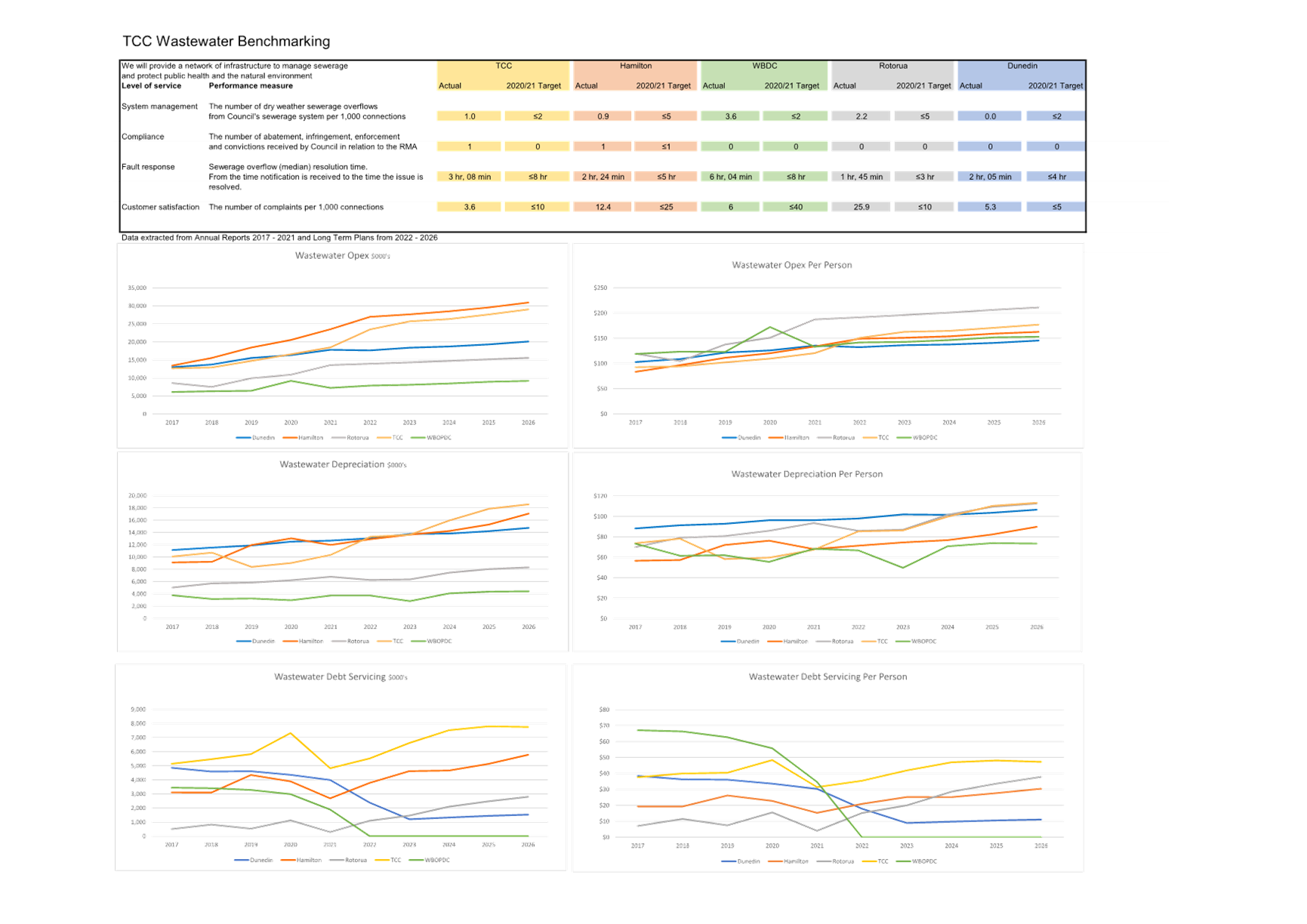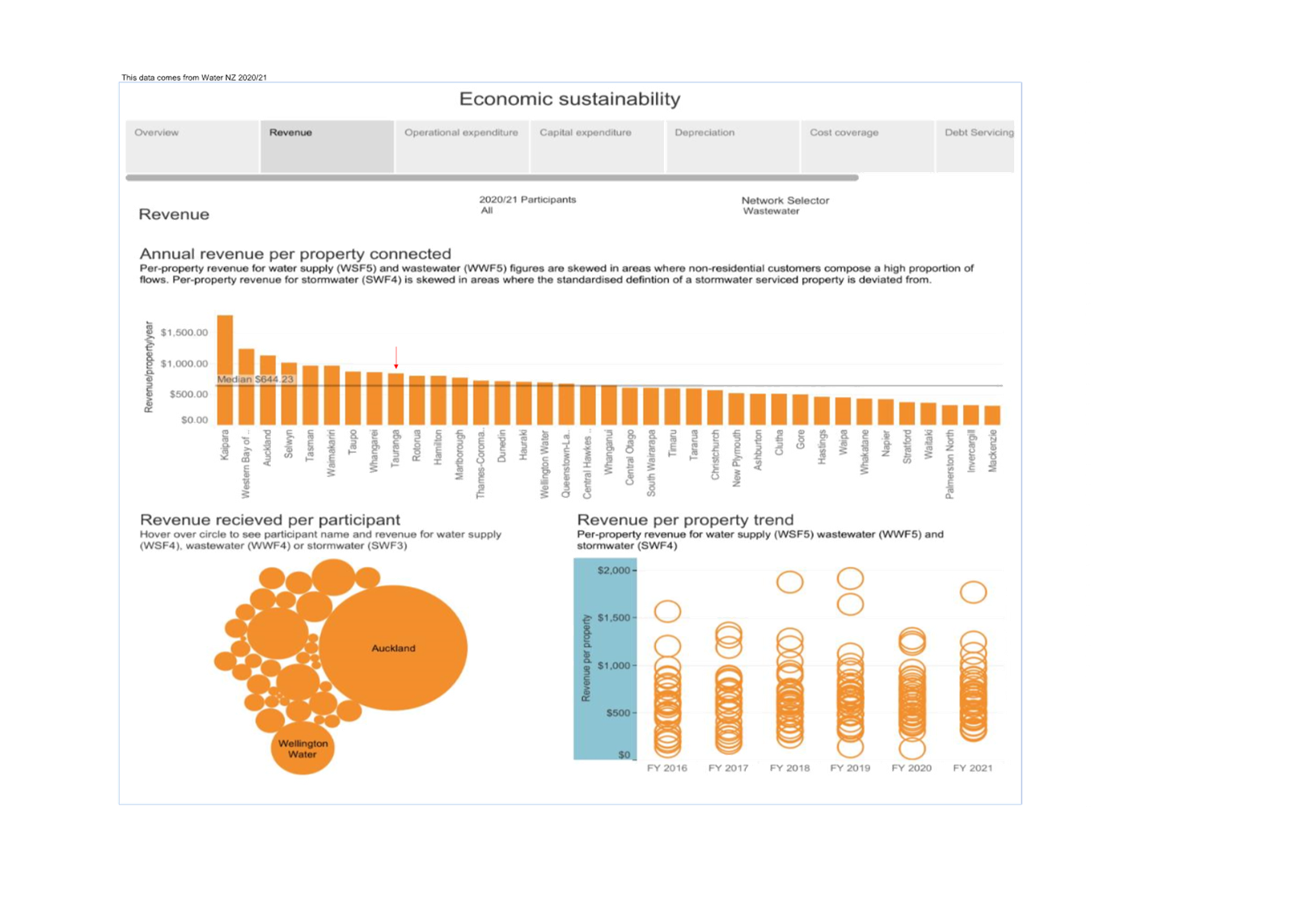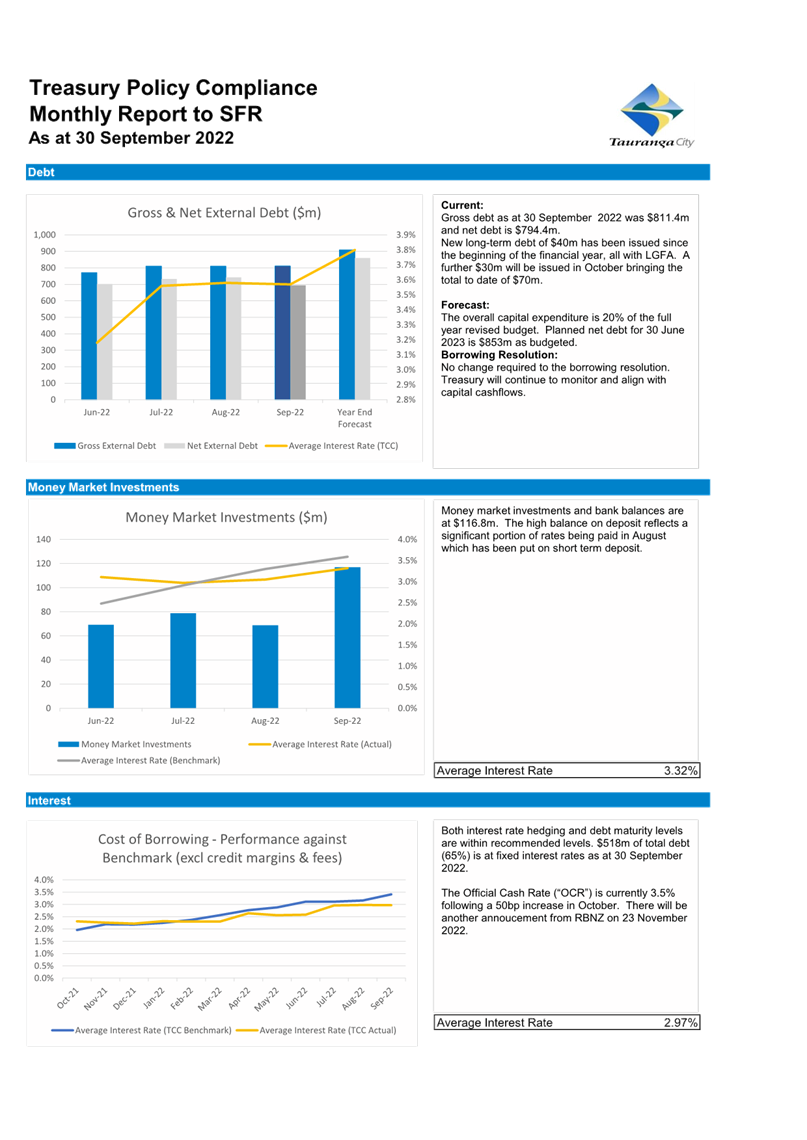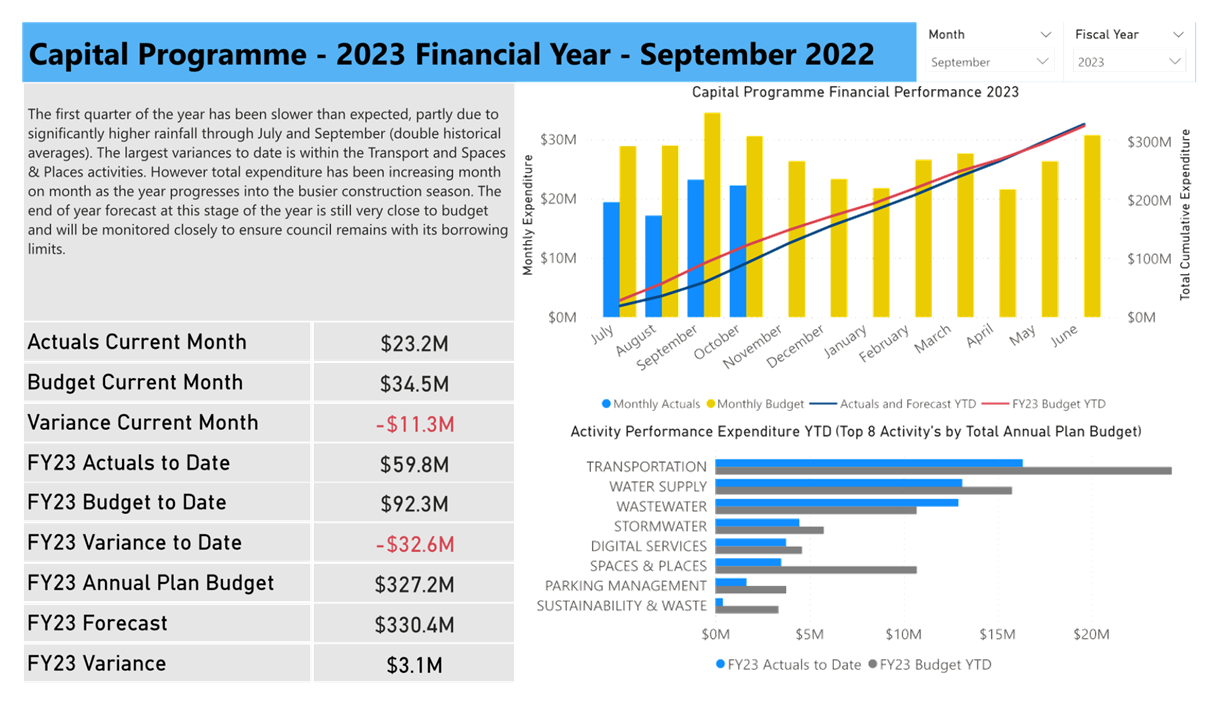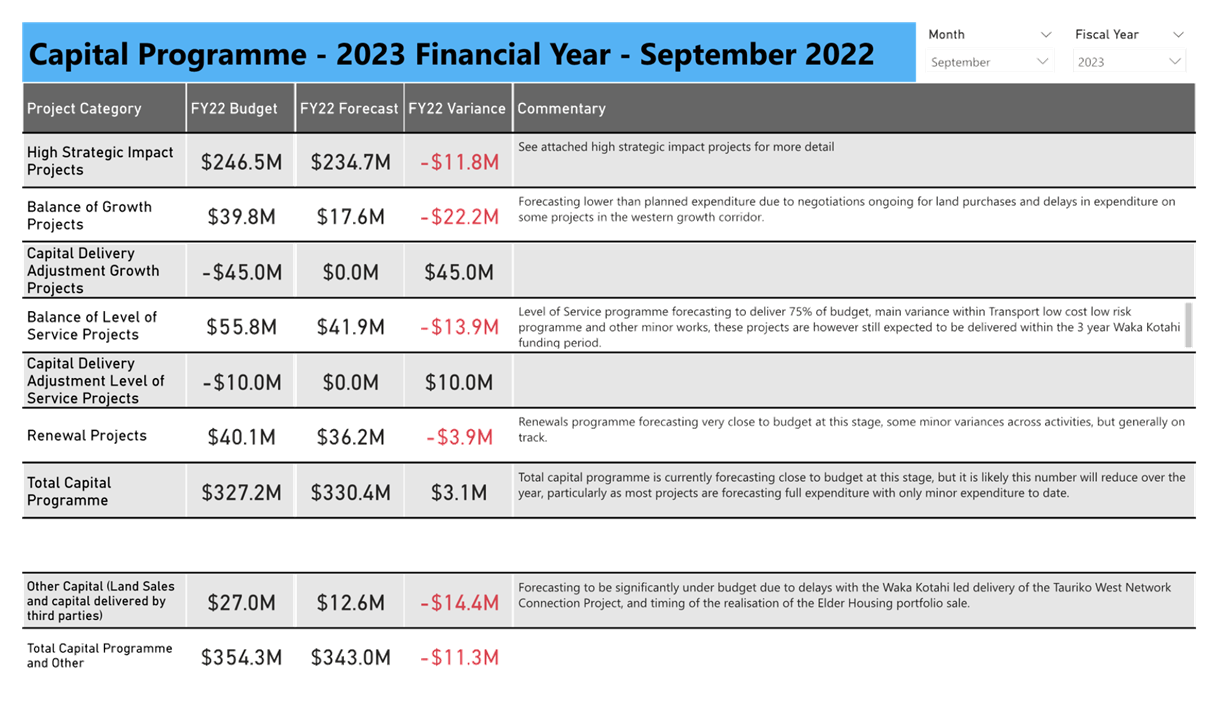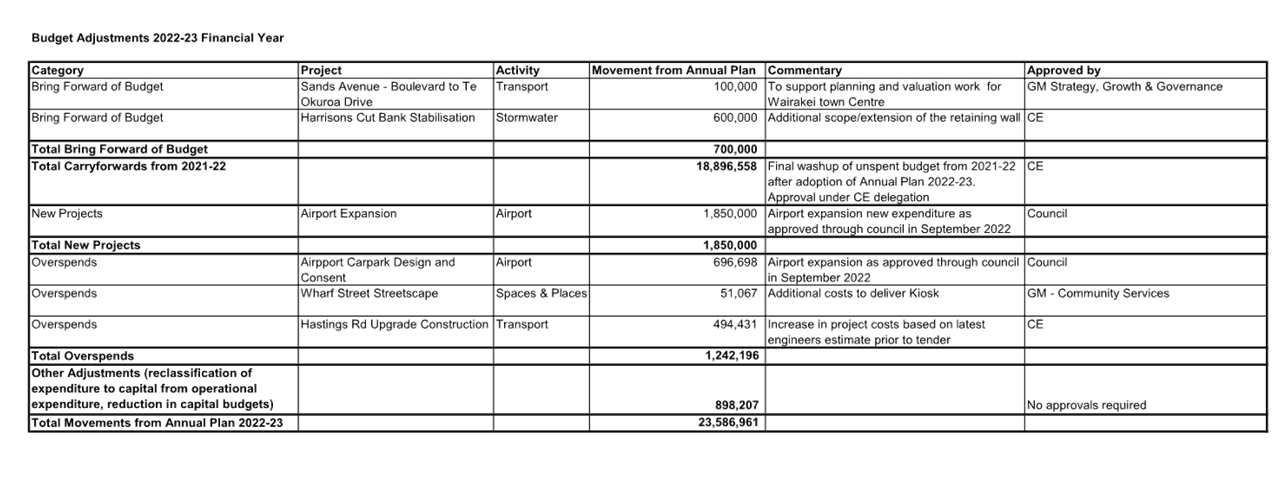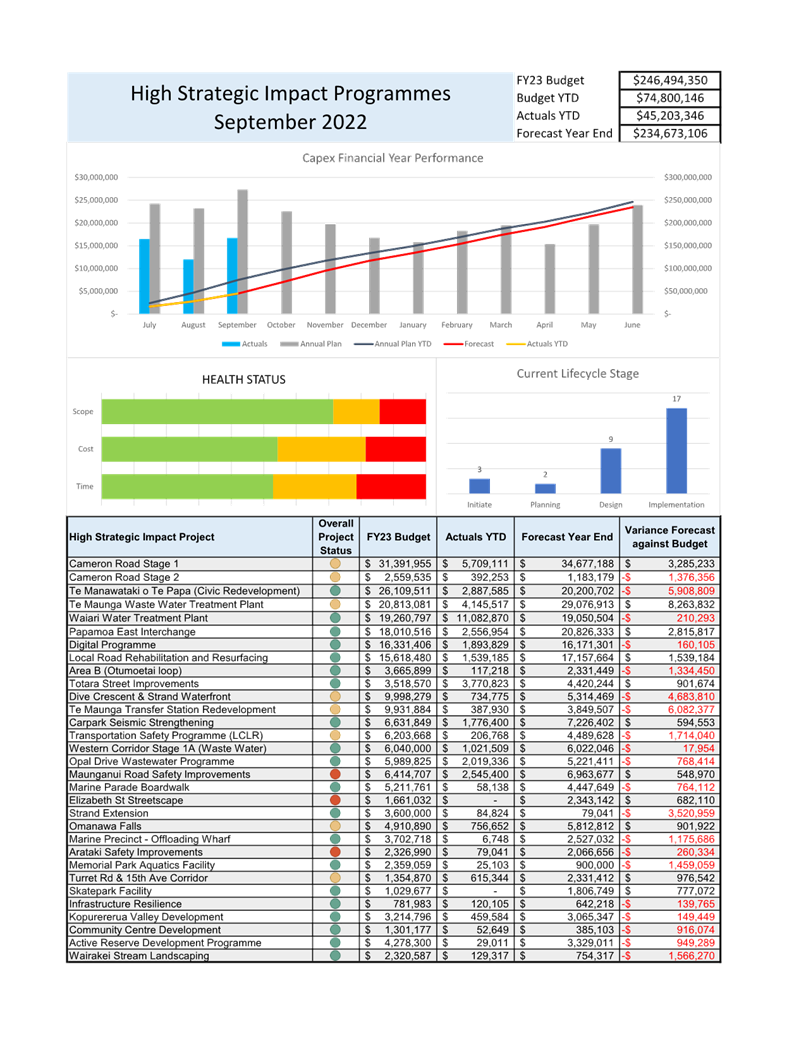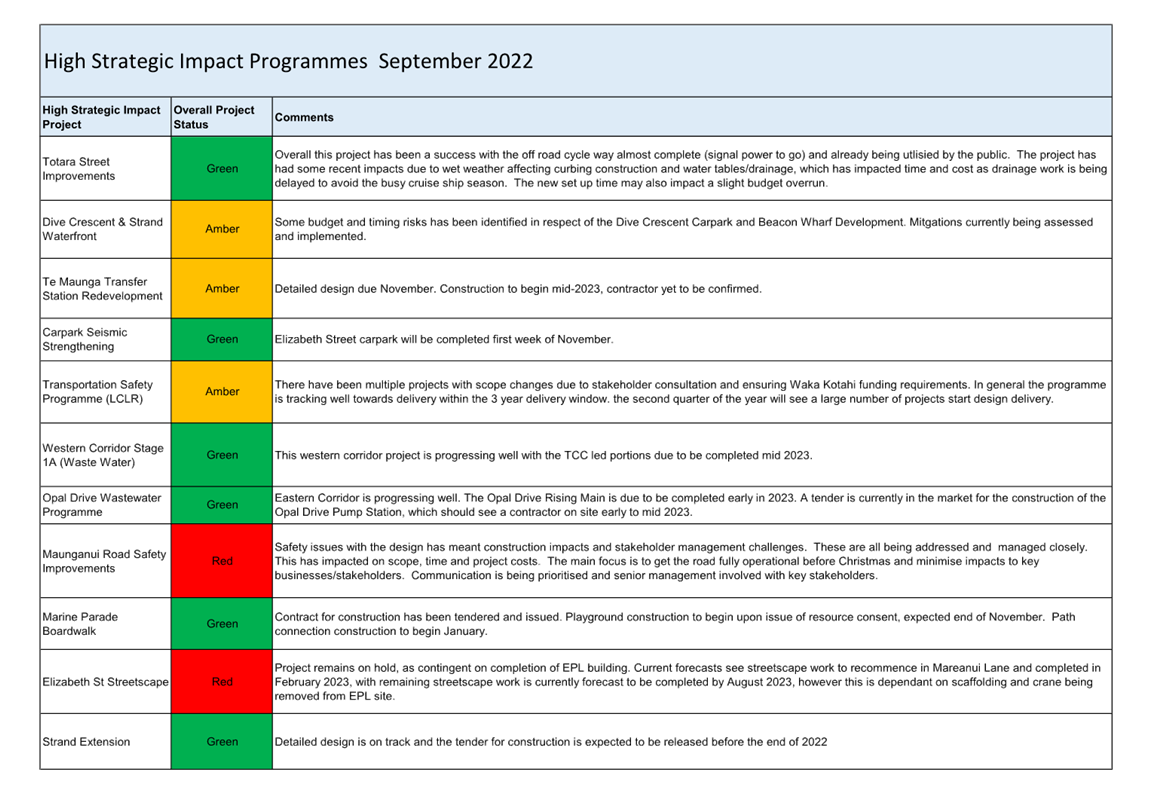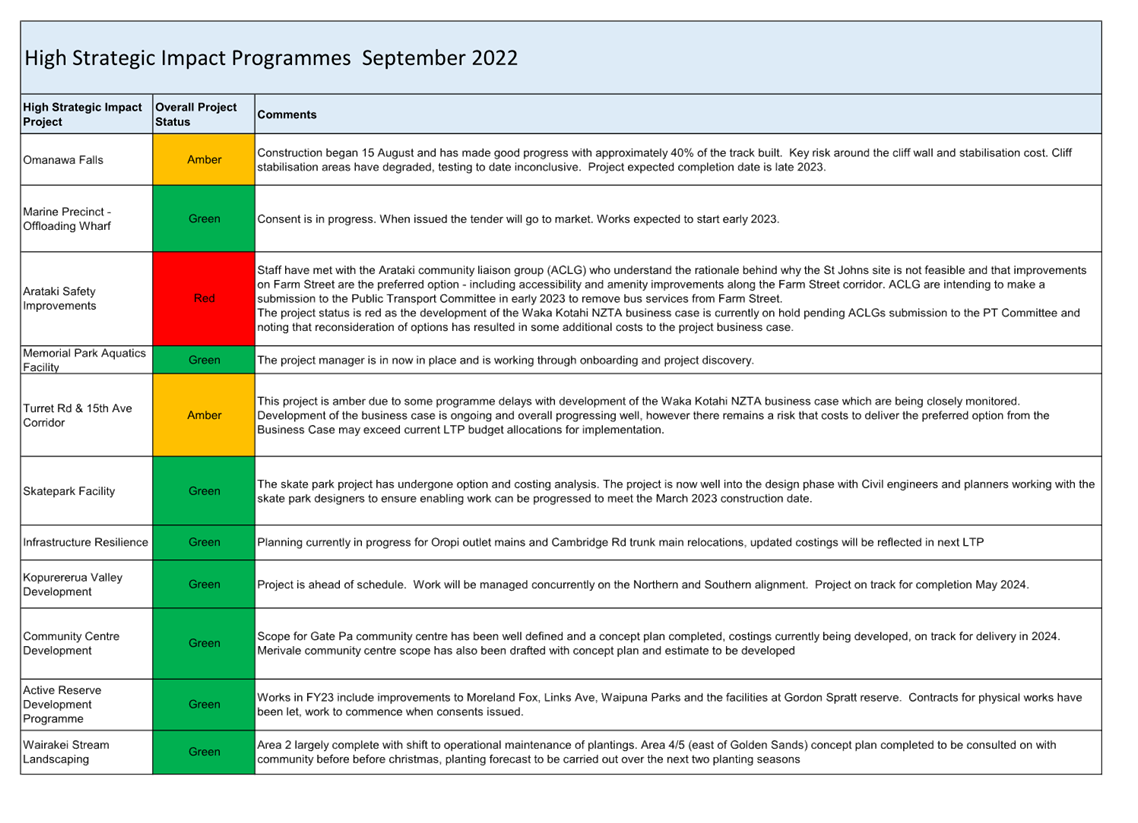|

|
|
AGENDA
Strategy, Finance and Risk Committee meeting
Monday, 14 November 2022
|
|
I hereby give notice that a Strategy, Finance and
Risk Committee meeting will be held on:
|
|
Date:
|
Monday, 14 November 2022
|
|
Time:
|
9.30am
|
|
Location:
|
BoP Regional Council Chambers
Regional House
1 Elizabeth Street
Tauranga
|
|
Please note that this
meeting will be livestreamed and the recording will be publicly available on
Tauranga City Council's website: www.tauranga.govt.nz.
|
|
Marty Grenfell
Chief Executive
|
Terms of reference – Strategy,
Finance & Risk Committee
Membership
|
Chairperson
|
Commission Chair Anne Tolley
|
|
Deputy chairperson
|
Dr Wayne Beilby – Tangata
Whenua representative
|
|
Members
|
Commissioner Shadrach Rolleston
Commissioner Stephen Selwood
Commissioner Bill Wasley
|
|
|
Matire
Duncan, Te Rangapū Mana Whenua o Tauranga Moana Chairperson
Te Pio Kawe – Tangata
Whenua representative
Rohario Murray – Tangata
Whenua representative
Bruce
Robertson – External appointee with finance and risk
experience
|
|
Quorum
|
Five
(5) members must be physically present, and at least three (3) commissioners
and two (2) externally appointed members must be present.
|
|
Meeting frequency
|
Six weekly
|
Role
The role of the Strategy, Finance and Risk Committee (the
Committee) is:
·
to assist and advise the Council in discharging
its responsibility and ownership of health and safety, risk management,
internal control, financial management practices, frameworks and processes to
ensure these are robust and appropriate to safeguard the Council's staff and
its financial and non-financial assets;
·
to consider strategic issues facing the city and
develop a pathway for the future;
·
to monitor progress on achievement of desired
strategic outcomes;
·
to review and determine the policy and bylaw
framework that will assist in achieving the strategic priorities and outcomes
for the Tauranga City Council.
Membership
The Committee will consist of:
·
four commissioners with the Commission Chair
appointed as the Chairperson of the Committee
·
the Chairperson of Te
Rangapū Mana Whenua o Tauranga Moana
·
three tangata whenua representatives
(recommended by Te Rangapū Mana Whenua o Tauranga
Moana and appointed by Council)
·
an independent external person with finance and
risk experience appointed by the Council.
Voting
Rights
The tangata whenua representatives and the independent
external person have voting rights as do the Commissioners.
The Chairperson of Te Rangapu Mana Whenua o Tauranga Moana
is an advisory position, without voting rights, designed to ensure mana whenua
discussions are connected to the committee.
Committee's
Scope and Responsibilities
A. STRATEGIC ISSUES
The
Committee will consider strategic issues, options, community impact and explore
opportunities for achieving outcomes through a partnership approach.
A1 – Strategic Issues
The Committee's
responsibilities with regard to Strategic Issues are:
·
Adopt an annual work
programme of significant strategic issues and projects to be addressed. The
work programme will be reviewed on a six-monthly basis.
·
In respect of each
issue/project on the work programme, and any additional matters as determined
by the Committee:
1.
Consider existing
and future strategic context
2.
Consider
opportunities and possible options
3.
Determine preferred
direction and pathway forward and recommend to Council for inclusion into
strategies, statutory documents (including City Plan) and plans.
·
Consider and approve
changes to service delivery arrangements arising from the service delivery
reviews required under Local Government Act 2002 that are referred to the Committee
by the Chief Executive.
·
To take appropriate
account of the principles of the Treaty of Waitangi.
A2 – Policy and Bylaws
The Committee's
responsibilities with regard to Policy and Bylaws are:
·
Develop, review and
approve bylaws to be publicly consulted on, hear and deliberate on any
submissions and recommend to Council the adoption of the final bylaw. (The
Committee will recommend the adoption of a bylaw to the Council as the Council
cannot delegate to a Committee the adoption of a bylaw.)
·
Develop, review and
approve policies including the ability to publicly consult, hear and deliberate
on and adopt policies.
A3 – Monitoring of Strategic
Outcomes and Long Term Plan and Annual Plan
The Committee's
responsibilities with regard to monitoring of strategic outcomes and Long Term
Plan and Annual Plan are:
·
Reviewing and
reporting on outcomes and action progress against the approved strategic
direction. Determine any required review / refresh of strategic direction or
action pathway.
·
Reviewing and assessing
progress in each of the six (6) key investment proposal areas within the
2021-2031 Long Term Plan.
·
Reviewing the
achievement of financial and non-financial performance measures against the
approved Long Term Plan and Annual Plans.
B.
FINANCE AND RISK
The Committee will review the
effectiveness of the following to ensure these are robust and appropriate to
safeguard the Council's financial and non-financial assets:
4.
Health and safety.
5.
Risk management.
6.
Significant projects and programmes of work focussing
on the appropriate management of risk.
7.
Internal and external audit and assurance.
8.
Fraud, integrity and investigations.
9.
Monitoring of compliance with laws and regulations.
10.
Oversight of preparation of the Annual Report
and other external financial reports required by statute.
11.
Oversee the relationship with the
Council’s Investment Advisors and Fund Managers.
12.
Oversee the relationship between the Council and
its external auditor.
13.
Review the quarterly financial and non-financial
reports to the Council.
B1 - Health and Safety
The Committee’s responsibilities through regard to
health and safety are:
1.
Reviewing the effectiveness of the health and
safety policies and processes to ensure a healthy and safe workspace for
representatives, staff, contractors, visitors and the public.
2.
Assisting the Commissioners to discharge their
statutory roles as "Officers" in terms of the Health and Safety at
Work Act 2015.
B2 - Risk Management
The Committee's responsibilities with regard to risk
management are:
1.
Review, approve and monitor the implementation of the Risk Management
Policy, Framework and Strategy including the Corporate Risk Register.
2.
Review and approve the Council’s "risk appetite"
statement.
3.
Review the effectiveness of risk management and internal control systems
including all material financial, operational, compliance and other material
controls. This includes legislative compliance, significant projects and
programmes of work, and significant procurement.
4.
Review risk management reports identifying new and/or emerging risks and
any subsequent changes to the "Tier One" register.
B3
- Internal Audit
The Committee’s responsibilities with regard to the
Internal Audit are:
5.
Review and approve the Internal Audit Charter to confirm the authority,
independence and scope of the Internal Audit function. The Internal Audit
Charter may be reviewed at other times and as required.
6.
Review and approve annually and monitor the implementation of the
Internal Audit Plan.
7.
Review the co-ordination between the risk and internal audit functions,
including the integration of the Council's risk profile with the Internal Audit
programme. This includes assurance over all material financial, operational,
compliance and other material controls. This includes legislative compliance
(including Health and Safety), significant projects and programmes of work and
significant procurement.
8.
Review the reports of the Internal Audit functions dealing with
findings, conclusions and recommendations.
9.
Review and monitor management’s responsiveness to the findings and
recommendations and enquire into the reasons that any recommendation is not
acted upon.
B4
- External Audit
The Committee's responsibilities with regard to the
External Audit are:
10.
Review with the external auditor, before the audit commences, the areas
of audit focus and audit plan.
11.
Review with the external auditors, representations required by
commissioners and senior management, including representations as to the fraud
and integrity control environment.
12.
Recommend adoption of external accountability documents (LTP and annual
report) to the Council.
13.
Review the external auditors, management letter and management responses
and inquire into reasons for any recommendations not acted upon.
14.
Where required, the Chair may ask a senior representative of the Office
of the Auditor General (OAG) to attend the Committee meetings to discuss the
OAG's plans, findings and other matters of mutual interest.
15.
Recommend to the Office of the Auditor General the decision either to
publicly tender the external audit or to continue with the existing provider
for a further three-year term.
B5
- Fraud and Integrity
The Committee's responsibilities with regard to Fraud and
Integrity are:
16.
Review and provide advice on the Fraud Prevention and Management Policy.
17.
Review, adopt and monitor the Protected Disclosures Policy.
18.
Review and monitor policy and process to manage conflicts of interest
amongst commissioners, tangata whenua representatives, external
representatives appointed to council committees or advisory boards, management,
staff, consultants and contractors.
19.
Review reports from Internal Audit, external audit and management
related to protected disclosures, ethics, bribery and fraud related incidents.
20.
Review and monitor policy and processes to manage responsibilities under
the Local Government Official Information and Meetings Act 1987 and the Privacy
Act 2020 and any actions from the Office of the Ombudsman's report.
B6
- Statutory Reporting
The
Committee's responsibilities with regard to Statutory Reporting relate to
reviewing and monitoring the integrity of the Annual Report and recommending to
the Council for adoption the statutory financial statements and any other
formal announcements relating to the Council's financial performance, focusing
particularly on:
21.
Compliance with, and the appropriate application of, relevant accounting
policies, practices and accounting standards.
22.
Compliance with applicable legal requirements relevant to statutory reporting.
23.
The consistency of application of accounting policies, across reporting
periods.
24.
Changes to accounting policies and practices that may affect the way
that accounts are presented.
25.
Any decisions involving significant judgement, estimation or uncertainty.
26.
The extent to which financial statements are affected by any unusual
transactions and the manner in which they are disclosed.
27.
The disclosure of contingent liabilities and contingent assets.
28.
The basis for the adoption of the going concern assumption.
29.
Significant adjustments resulting from the audit.
Power
to Act
·
To make all
decisions necessary to fulfil the role, scope and responsibilities of the
Committee subject to the limitations imposed.
·
To establish
sub-committees, working parties and forums as required.
·
This Committee has not
been delegated any responsibilities, duties or powers that the Local Government
Act 2002, or any other Act, expressly provides the Council may not delegate.
For the avoidance of doubt, this Committee has not been delegated
the power to:
·
make a rate;
·
make a bylaw;
·
borrow money, or
purchase or dispose of assets, other than in accordance with the Long-Term Plan
(LTP);
·
adopt the LTP or
Annual Plan;
·
adopt the Annual
Report;
·
adopt any policies
required to be adopted and consulted on in association with the LTP or
developed for the purpose of the local governance statement;
·
adopt a remuneration
and employment policy;
·
appoint a chief
executive.
Power
to Recommend
To Council and/or any standing committee
as it deems appropriate.
|
Strategy,
Finance and Risk Committee meeting Agenda
|
14
November 2022
|
7 Confirmation
of minutes
7.1 Minutes
of the Strategy, Finance and Risk Committee meeting held on 3 October 2022
File
Number: A14194774
Author: Robyn
Garrett, Team Leader: Governance Services
Authoriser: Robyn
Garrett, Team Leader: Governance Services
|
Recommendations
That the Minutes of the Strategy, Finance and Risk Committee
meeting held on 3 October 2022 be confirmed as a true and correct record.
|
Attachments
1. Minutes
of the Strategy, Finance and Risk Committee meeting held on 3 October
2022
|
Strategy, Finance and Risk
Committee Meeting Minutes
|
3 October 2022
|
|

|
|
MINUTES
Strategy, Finance and Risk Committee
Meeting
Monday, 3 October 2022
|
Order of
Business
1 Opening karakia. 3
2 Apologies. 3
2.1 Apologies. 3
3 Public forum.. 3
4 Acceptance of late items. 3
5 Confidential business to be transferred into the open. 3
6 Change to order of business. 4
7 Confirmation of minutes. 5
7.1 Minutes of the Strategy, Finance and Risk Committee meeting held on
12 September 2022. 5
8 Declaration of conflicts of interest 6
9 Business. 6
9.1 Adoption of Ōtūmoetai Spatial Plan. 6
9.2 Transport Emissions Projection Tool 7
10 Discussion of late items. 9
MINUTES OF Tauranga City
Council
Strategy, Finance and Risk
Committee Meeting
HELD AT THE BoP Regional
Council Chambers, Regional House,
1 Elizabeth Street, Tauranga
ON Monday, 3 October 2022 AT
9.30am
PRESENT: Commission Chair Anne Tolley, Dr Wayne Beilby, Commissioner Shadrach
Rolleston, Commissioner Stephen Selwood, Commissioner Bill Wasley, Mr Te Pio
Kawe, Ms Rohario Murray, Mr Bruce Robertson
IN ATTENDANCE: Marty
Grenfell (Chief Executive), Paul Davidson (Chief Financial Officer), Barbara
Dempsey (General Manager: Community Services), Nic Johansson (General Manager:
Infrastructure), Christine Jones (General Manager: Strategy, Growth &
Governance), Alastair McNeill (General Manager: Corporate Services), Gareth
Wallis (General Manager: City Development & Partnerships), Sarah Omundsen
(General Manager: Regulatory and Compliance), Corinne Frischknecht (Senior
Urban Planner), Alistair Talbot, (Team Leader: Structure Planning &
Strategic Transport), Andrew Mead (Manager: City Planning & Growth),
Ceilidh Dunphy (Community Relations Manager), Coral Hair (Manager: Democracy
& Governance Services), Robyn Garrett (Team Leader: Governance Services),
Anahera Dinsdale (Governance Advisor), Janie Storey (Governance Advisor)
1 Opening
karakia
Te Pio Kawe opened the meeting with a karakia.
2 Apologies
|
2.1 Apologies
|
|
Committee Resolution SFR10/22/1
Moved: Commissioner Bill
Wasley
Seconded: Commissioner
Stephen Selwood
That the apology
for absence from Ms Matire Duncan be received.
Carried
|
3 Public
forum
Nil
4 Acceptance
of late items
Nil
5 Confidential
business to be transferred into the open
Nil
6 Change
to order of business
Nil
7 Confirmation
of minutes
8 Declaration
of conflicts of interest
Nil
9 Business
|
9.1 Adoption
of Ōtūmoetai Spatial Plan
|
|
Staff Christine
Jones, General Manager: Strategy, Growth and Governance
Corinne Frischknecht, Senior Urban
Planner
Carl Lucca, Team Leader: Urban
Communities
Key points
·
Sets out the vision for how and where growth
would occur between 2022 and 2050 in the Ōtūmoetai peninsula.
·
Inclusive process in partnership with mana
whenua and key stakeholders.
·
Two rounds of public consultation had been
held including a successful social media pinpoint active tool receiving 1,200
comments.
·
The second round of engagement included 60
projects, with respondents able to share and comment on those projects.
·
Three Pou established to recognise the
cultural significance through future growth - Mana Rangatiratanga, Mana
Taiao, Mana Tangata.
·
Four key strategic outcomes to achieve -
unique neighbourhoods, liveable neighbourhoods, connected neighbourhoods,
healthy neighbourhoods.
·
Key centre plans provided an overview of
expectations for planning and improvement with the key directions and actions
to be taken.
·
The action plan outlined how to deliver the
actions; some were funded, and others would need to be funded with project
partners and future Long-term Plans.
·
Partnership with mana whenua would be
essential.
·
Ongoing implementation would be tested through
modelling etc to ensure actions continued to meet the plan and outcomes.
In response
to questions
·
The overview should be changed to provide a
stronger emphasis on the well-being of the people that currently lived there.
·
It was agreed that the area was growing and
focus would be on it being a great place to live. Need to consider how
to support the wellbeing of the community now and into the future through
connected neighbourhoods, parks fit for purpose and used, safe ways to travel
etc.
·
Another stage to the project was to package
and prioritise actions with funding requirements and whether they included
external funding partners.
·
Adopting the plan did not commit the Council
to implementation, it provided a direction of travel to achieve the
plan’s outcomes. Staff were looking for guidance on what items
were considered priorities and would then look at the impact and could refine
or remove as required. The plan needed to be finalised for the works to flow
into the Long-term Plan (LTP).
·
Recommendation (c) was changed to - Endorses
in principle the intention and direction of the Ōtūmoetai Spatial
Plan.
·
The plan would need clear guidance and
framework and the three Pou were an important part of that. Prioritisation
would sit alongside other citywide discussions.
·
Consideration of the protection of marae with
the growth in the area was being addressed by working closely with Ngai
Tamarāwaho with the intensification around Brookfield. It would
include how initiatives could be provided around the marae to improve the
amenities and public transport links. It was noted that the ability for
dwellings to be able to be built up to three stories was out of
Council’s control but there were view shaft provisions which would
remain.
Discussion
points raised
·
More emphasis to be given to the community
already living in the area.
·
Looking into the future - with an anticipated
5,000 more people and 2,200 dwellings - funding required would be
substantial, with limited funding in the current LTP. Some of the
facilities serviced the city-wide area not just the local community and were
a destination for the city.
·
The meeting congratulated staff on the plan,
noting that the community consultation and engagement processes were
innovative and good.
·
The consideration of the Action and Investment
Plan would need to be extensively workshopped signalling what items would
need to be included into the LTP, the implications of ability to fund through
the LTP, which items were on a wish list to possibly be funded into the
future and where the accountability lay to measure achievement over a long
period of time.
·
There were items in the plan which could
result in tangible change benefits/quick wins within the community.
|
|
Committee Resolution SFR10/22/3
Moved: Commission Chair Anne
Tolley
Seconded: Commissioner
Bill Wasley
That
the Strategy, Finance and Risk Committee:
1.
Receives the ‘Ōtūmoetai
Spatial Plan’ report.
2.
Acknowledges the contribution from the
community through the engagement process and notes that this input has been
reflected within the Ōtūmoetai Spatial Plan presented for
consideration.
3.
Endorses in principle the intention and
direction of the Ōtūmoetai Spatial Plan.
4.
Notes that a further Strategy, Finance and
Risk Committee discussion is required to address the issue of prioritisation
and funding of actions within the proposed Plan.
Carried
|
|
9.2 Transport
Emissions Projection Tool
|
|
Staff Alistair
Talbot, Team Leader: Structure Planning & Strategic Transport
External Craig Richards and Rick Lomax - BECA
Key points
·
A power point presentation outlined the
purpose of the projection tool, which was to aid Council’s
understanding of potential for specific interventions or levers needed to
achieve emissions reduction targets.
·
National decarbonisation level to reduce 41%
by 2035 on the 2019 emissions level was set but how this would be achieved
was still being engaged on.
·
The Ministry of Transport had determined a
target for Tauranga City Council (TCC) of 21%.
·
Bay of Plenty Regional Council had provided a
community carbon footprint assessment setting out greenhouse gas levels for
TCC for three years – the assessment’s broader emissions included
marine and airport as well as land transport.
·
The projection tool developed covered all
different modes of road transport, how people and goods were carted around,
the type of vehicles and fuel used.
·
Model hierarchy noted the different variables included
kilometres travelled, travel avoidance measures, mode shift, fuels to give
outputs and changes in vehicle kms travelled 2035 and 2050 horizons.
·
Scenarios included working from home and the
limited impact this had on emissions.
·
Scenario C noted that improving the way
freight moved from road to rail with a greater shift to hybrid and electric
vehicles would have a considerable impact on emissions.
·
Council was able to influence some levers more
than others.
In response
to questions
·
Queried how significant behaviour change
proposed could be achieved without being given an understanding of why the
changes in behaviour were needed.
·
It was suggested it would be interesting to
compare the during and post Covid vehicle use with today’s vehicle use,
and whether there was an increase in people working from home, trips avoided,
percentage of car sharing etc.
·
The tool showed the size of the challenges
within a growing city that had a car dependency.
·
The government fundability was high on
aspiration and low on funding with a suggestion that the TCC share
would be around $15m. This was not considered anywhere near enough and
no rigour seemed to be given around the feasibility of that by the
government.
·
Ongoing conversations were being held with the
Ministry of Transport about confirming national targets and sharing the tool
with them. Engagement would continue with key partners.
·
Waka Kotahi was developing guidance which
would apply to a number of workstreams and business cases.
·
The Climate Change Action and Investment plan
visions were already set and were working towards 2050 emissions.
·
Nationally there was no agreement for who was
responsible for marine freight around the country, therefore there was
currently no requirement to include marine freight. This may need to be
integrated going forward.
·
The transference of mode from road to marine
transport had pros and cons, it included the amount of freight and how it
moved to and from the port. Air freight was more carbon intensive than
other forms. There were opportunities at a national level to consider
this.
·
Everyday use of vehicles was one of the areas
that could not easily be addressed. Different land use patterns
including intensification etc were not addressed. There may be other methods
outside of the tool to assist with those.
Discussion
points raised
·
Congratulations was passed on to the team for
developing the tool, it was leading edge, and it was noted that the Ministry
of Transport had expressed an interest in using the tool.
|
|
Committee Resolution SFR10/22/4
Moved: Commissioner Stephen
Selwood
Seconded: Mr
Bruce Robertson
That
the Strategy, Finance and Risk Committee:
· Receives
the report "Transport Emissions Projection Tool".
Carried
|
|
Attachments
1 Transport
Emissions Projection Tool Presentation PDF
|
10 Discussion
of late items
Nil
The
closing karakia would take place at the end of the Council meeting to follow
this meeting.
Resolutions transferred into the open section of the
meeting after discussion
Nil
The
meeting closed at 10.48 am.
The
minutes of this meeting were confirmed as a true and correct record at the
Strategy, Finance and Risk Committee meeting held on 14 November 2022.
...................................................
CHAIRPERSON
|
Strategy,
Finance and Risk Committee meeting Agenda
|
14
November 2022
|
9 Business
9.1 Priority
One - Annual Report 2021/22
File
Number: A13875256
Author: Lisa
Gilmour, City Partnership Specialist
Authoriser: Gareth
Wallis, General Manager: City Development & Partnerships
Purpose of the Report
1. That Council receives
Priority One’s Annual Report for 2021/22, in accordance with the terms of
the joint service delivery contract between Priority One and the two councils.
|
Recommendations
That the Strategy,
Finance and Risk Committee:
(a) Receives the report
"Priority One - Annual Report 2021/22".
|
Executive Summary
1. Priority
One’s Annual Report for 2021/22 covers the key outputs of their work
during that period.
2. The
report, provided at Attachment 1, addresses the requirements under the
partnership agreement with Tauranga City Council and Western Bay of Plenty
District Council to report annually to Council on actions taken.
3. Priority
One align their agreed priorities set out in the partnership agreement with
those of their board and membership base through their strategic plan.
4. The
contract with Priority One is in accordance with the status and powers of local
government as set out in section 12 of the Local Government Act 2002.
Background
5. The
Annual Report is provided by the economic development agency to Council as part
of its role to ensure the organisation’s performance is consistent with
Council’s partnership agreement with them.
6. Priority
One is the Western Bay of Plenty’s economic development organisation,
established in 2001 by the business community in partnership with the
sub-region’s local authorities. Priority One’s role is to grow the
economy of the region. They work with local authorities to ensure local
government and business needs and aspirations are aligned.
7. Key
achievements outlined in the report include:
· Ara
Rau skills and employment hub have supported over 200 people into sustainable
employment or training to work pathways in 2021/22. In addition, Ara Rau and
Toi Kai Rawa (the region’s Māori economic development agency) have
worked actively to support Māori economic development and worked closely
with local iwi to support their training and employment initiatives.
· Priority
One, in collaboration with member businesses, held a Future of Work Forum with
Deputy Prime Minister, Grant Robertson, in February and are now developing a
series of activations supporting the development, retention, and attraction of
talent to the region.
· Priority
One have been collaborating closely with the University of Waikato to support
several initiatives to grow Tauranga’s reputation as a tertiary
destination, with the goal of attracting 5,000 students to study here.
· New
scholarships and degree offerings have been announced and the first R&D lab
has been opened specifically focussed on engineering and technology for primary
industries. The lab offers students the opportunity to work on projects
including automation, robotics, artificial intelligence, aquaculture, and
marine biotechnology. It is another step on our collaborative journey to
establish Tauranga as a global destination for innovation.
· Priority
One has led the development of Tauranga’s CBD Blueprint, which identifies
$1.5 billion in private sector investment into the city centre. This is the
result of fostering relationships with key developers and city stakeholders,
and promotes the reinstatement of Tauranga’s city centre as the civic,
commercial and cultural capital of the Bay of Plenty.
· A
group called Hydrogen X has been set up to find alternative ways to fuel
transport sectors across heavy machinery, port infrastructure, material
handling, freight, and public transport. One of the many initiatives includes
the establishment of Aotearoa New Zealand’s first hydrogen education and
training facility, through Te Pukenga – Toi Ohomai, and commencing late
2023.
· Priority
One have led the collaboration to undertake a feasibility study investigating a
community stadium. A business case is now being completed and due before the
end of 2022.
· The
Western Bay of Plenty Infrastructure Forum was established in early 2022 as a
platform to highlight the infrastructure needs of the region. The group exists
to actively discuss key challenges and advocate for the infrastructure needs
critical for business success.
Strategic / Statutory Context
8. Council’s
partnership with Priority One helps us deliver our community outcomes and
contribute to a city that is well planned, with a variety of successful and
thriving compact centres and resilient infrastructure.
9. A
successful economic development organisation plays a key role in making a
significant contribution to the social, economic, cultural, and environmental
well-being of the region.
10. Tauranga
is a city that attracts and supports a range of businesses and education
opportunities, creating jobs, and a skilled workforce.
Options Analysis
11. There
are no options as Council is only receiving Priority One’s Annual Report
for 2021/22.
Financial Considerations
12. The
financial considerations are outlined in the main body of the report.
Legal Implications / Risks
13. The
Annual Report meets the legislative requirements for the economic development
agency to provide Council with an overview of performance.
Consultation / Engagement
14. No
consultation or engagement is required or planned.
Significance
15. The
Local Government Act 2002 requires an assessment of the significance of
matters, issues, proposals and decisions in this report against Council’s
Significance and Engagement Policy. Council acknowledges that in some instances
a matter, issue, proposal or decision may have a high degree of importance to
individuals, groups, or agencies affected by the report.
16. In
making this assessment, consideration has been given to the likely impact, and
likely consequences for:
(a) the current
and future social, economic, environmental, or cultural well-being of the
district or region;
(b) any persons who are likely to be
particularly affected by, or interested in, the matter; and
(c) the capacity of the local authority to
perform its role, and the financial and other costs of doing so.
17. In
accordance with the considerations above, criteria and thresholds in the
policy, it is considered that the matter is of low significance.
ENGAGEMENT
18. Taking
into consideration the above assessment, that the matter is of low significance,
officers are of the opinion that no further engagement is required prior to
Council making a decision.
Next Steps
19. Priority
One will have an opportunity to present their Annual Report and answer any
questions during the Committee’s consideration of this paper on 14
November.
20. The
report will be published on Priority One’s website.
Attachments
1. Priority
One - Annual Report 2021/22 - A14141184 ⇩ 
|
Strategy,
Finance and Risk Committee meeting Agenda
|
14
November 2022
|


|
Strategy,
Finance and Risk Committee meeting Agenda
|
14
November 2022
|
9.2 Delivering
Better Outcomes - City Waters Enhanced Procurement
File
Number: A14113786
Author: Kelvin
Hill, Manager: Water Infrastructure Outcomes
Authoriser: Nic
Johansson, General Manager: Infrastructure
Purpose of the Report
1. To inform the Committee on
a new approach to enhance the procurement for City Waters; Planning, Design and
Physical Works of the capital programme.
|
Recommendations
That the Strategy,
Finance and Risk Committee:
(a) Receives the report "Delivering
Better Outcomes - City Waters Enhanced Procurement".
(b) Endorses two procurement
activities leading to new panels for:
(i) Detailed design
services for water supply and wastewater network
(ii) Construction services for
defined scope areas for City Waters.
|
Executive Summary
2. The City Waters team have
determined the preferred procurement approach for delivering the next five
years of the long-term plan which involves the establishment of two new panels.
3. This approach takes
consideration of feedback from the supply chain, current procurement
arrangements in place and the required design and construction activities over
the next five years.
4. An Integrated Programme
Approach is being developed in order to increase collaboration with the panel
members to assist in delivering on the 9 outcomes.
Background
5. Following a review of the
current state of procurement across Council last year, and the development of 9
benefits and outcomes that Council aim to achieve, Arup was engaged to assist
with the procurement strategy and executing delivery models for delivering the
Long-Term Plan.

6. Initially the intent had
been for one procurement strategy to cover the whole of the Long-Term Plan and
any procurement model(s) adopted to be suitable for all procurement streams.
7. Following internal
engagement, it was determined that City Waters should be the focus and that any
procurement models put in place could then be scalable for the other areas at a
later date.
8. As part of the engagement process
key stake holders across the consultant and construction fields have provided
feedback to Council on the potential benefits and outcomes a revised
procurement process could deliver. The last update to the sector was provided
at the yearly gathering of suppliers evening hosted by TCC in August 2022.
9. Following a detailed
review with the City Waters team to look at current panels in place, the next
five years of capital works required, works already contracted (or where no
procurement is required e.g. developer payments, land purchase etc) and the
forward spend profile, the procurement model outlined below was determined as
achieving a balance between achieving the 9 outcomes, making best use of
current panels and consideration for suitability for upcoming water reform. The
impact on organisational change was also a key consideration to continue to
allow the team to deliver the current annual spend targets.
10. Approximate spend per annum for the
next 5 years is $110M with an anticipated split of 90% construction, 5%
detailed design and 5% modelling, planning and studies.
11. In order to meet the pace of required
spend and delivery programme, early packages of works that could fall outside
of the scope of the procurement model are being considered in the shorter term.
However, the procurement model will be scalable to expand in the longer term
and be in place to provide continuity during the potential changes that
eventuate from water reform.
Strategic
/ Statutory Context
12. Three Waters Reform has been
considered in developing the procurement approach and the proposed panels
ensure that delivery of the capital programme can continue unhindered while any
transitions occur but will also be scalable to allow the addition of other
packages of work should this be required under Entity B.
Options
Analysis
13. Multiple options have been considered
taking into account the current panels in place and the upcoming program of
works for City Waters. These included models such as delivery partnership,
alliance, bundling packages of works, staged ‘traditional’ approach
and fixed price D&C. However, based on the level of expected spend and the
type of work required to be delivered over the next five years, each of these
options were not considered to best leverage off the existing models in place
and continue to enable the team to deliver good performance.
14. The City Waters team will create a
new detailed design panel through a single stage RFT process which will
consider financial and non-financial aspects. It is anticipated that there will
be 3 to 4 suppliers on this panel.
15. The length of the new detailed design
panel will align with the planning panels with a longer-term view that one
planning and design panel could be established in the future.
16. The City Waters team will create of a
new Construction panel through a 2-stage procurement process. The initial ROI
phase will be based on non-financial aspects only. The second stage RFT will
consider financial components through either example project pricing or rates
and margin assessment.
17. The construction panel members will
deliver allocated packages of work suited to their track record, capability and
capacity which would be established through the procurement process. The number
of panel members is still to be determined depending on how the packages are split
but it is expected to be around 5 or 6.
18. Methodology for agreeing the pricing
of the packages and ensuring value for money is still being finalised. This
will include an element of open book style approach and independent review of
the estimates.
19. The existing panels and new panels
will be brought together under an integrated programme approach which will see
improved collaboration between Council and the supply chain and this will
evolve over time as relationships develops and collective capability increase.
20. Performance measurements to stay on
the panel and keep delivering for TCC will be imbedded within the panel
delivery documentation.
Financial
Considerations
21. The proposed panels deliver for the
City Waters elements of the long term plan. There are no further financial
commitments required.
22. The proposed procurement models and
the way in which the work packages would be allocated is intended to deliver in
a more efficient manner.
Legal
Implications / Risks
23. As the panels are proposed for a
duration of five years there could be some dissatisfaction from the supply
chain that are not successful in securing a place on the new panels. Any risks
associated with this will be mitigated through a number of measures including
the engagement of a probity advisor, following the Council procurement rules
and having a clear and approved procurement plan and having legal review of the
contracts.
24. There will be consideration of the
appropriate terms and conditions for including in the contracts to allow for
the uncertainty of Three Waters Reform.
25. By grouping the works into packages
and having earlier engagement with the supplier chain should reduce the
delivery risk as any risks will be visible earlier and therefore allow time for
suitable changes to be made or mitigations to be put in place.
Consultation /
Engagement
26. There has been
extensive engagement with the supply chain not only to get their feedback on
the current procurement models but also ensuring they are aware of the status
and program for new procurement activities.
Significance
27. The Local Government Act 2002
requires an assessment of the significance of matters, issues, proposals and
decisions in this report against Council’s Significance and Engagement
Policy. Council acknowledges that in some instances a matter, issue,
proposal or decision may have a high degree of importance to individuals,
groups, or agencies affected by the report.
28. In making this assessment,
consideration has been given to the likely impact, and likely consequences for:
(a) the current and future social, economic,
environmental, or cultural well-being of the district or region
(b) any persons who are likely to be
particularly affected by, or interested in, the .
(c) the capacity of the local authority to
perform its role, and the financial and other costs of doing so.
29. In accordance with the considerations
above, criteria and thresholds in the policy, it is considered that the matter
is of medium significance.
ENGAGEMENT
30. Taking into consideration the above
assessment, that the matter is of medium significance, officers are of the
opinion that no further engagement is required prior to Council making a
decision.
Click here to view the TCC
Significance and Engagement Policy
Next
Steps
31. The procurement plan will be
finalised, and the procurement activities carried out as per our draft
programme.
· December 2022 Registration
of interest sent out
· February 2023 Submissions
received, and procurement process undertaken
· May 2023 Outcome
of Procurement process completed
Attachments
Nil
|
Strategy,
Finance and Risk Committee meeting Agenda
|
14
November 2022
|
9.3 Draft
Annual Plan 2023/24 - Approach and Key Financials
File
Number: A14091423
Author: Kathryn
Sharplin, Manager: Finance
Tracey Hughes,
Financial Insights & Reporting Manager
Authoriser: Paul
Davidson, Chief Financial Officer
Purpose of the Report
1. In accordance with the
Local Government Act 2002, Council is required to produce and adopt an annual
plan, by 30 June 2023.
2. The purpose of this report
is to discuss the high-level financials for the 2023-24 Annual Plan, outlining
some of the key risks and challenges and shows some early benchmarking of
operational expenditure.
|
Recommendations
That the Strategy,
Finance and Risk Committee:
(a) Receives the report
"Draft Annual Plan 2023/24 - Approach and Key Financials"
(b) Notes high-level initial
benchmarking data for transportation, three waters and spaces and places
against other councils
(c) Agrees the proposed approach
to budgeting for the 2023-24 Annual Plan targeting key financials of year 3
of the LTP, but noting inflationary and interest rate pressures
|
Executive Summary
3. The Annual Plan for
2023-24 continues the priority expenditure of the 2022-23 year and is broadly
consistent with the ten-year programme of work set out in the amended 2021-31
Long-term Plan (LTP). The 2023-24 Annual Plan is compared with year 3 of the
LTP.
4. The overall financials in
the draft annual plan remain broadly consistent with year three of the LTPA,
which is now the new LTP. There is an overall rates requirement increase
of approximately 7.5% after growth (estimated at 1.5%) and including water by
meter. However, excluding water by meter revenue which is declining, the rates
increase is 10%.
5. This has been achieved by
a number of measures to reduce the impacts of increasing costs which are being
experienced across the business. CPI has come in at about 5% above LTP
assumptions. Interest rates have also risen significantly above budgeted
levels. In addition, large cost increases have occurred across key
service delivery areas including transportation and aspects of parks
maintenance where budgets and contracts had been insufficient to meet service
level requirements. There have been a number of proposals to keep cost
increases and rates requirement down including greater use of debt, phasing in
some costs and initiatives e.g. fully funding depreciation from revaluations.
6. The capital programme
budget and work programme is proposed to remain close to the LTPA programme of
$434m for 2023/24 including vested assets. With rising costs of delivery this
does indicate a slower rate of delivery of projects, noting that there is
expected to be capital projects carried forward from 2022-23 to also be
completed later than budgeted.
7. Further consideration and
advice is being sought on requirements to consult on the annual plan, which
will be addressed in December reports to Council.
Background
8. The
Annual Plan for 2023-24 continues the priority expenditure of the 2022-23 year
and is broadly consistent with the ten-year programme of work set out in the
amended 2021-31 Long-term Plan (LTP). The required comparator for the Annual
Plan 2023/24 is the budgets for year three of the LTP. After considering
estimated population growth and higher than expected inflation levels the total
rates requirement is comparable to that in year 3 of the LTP.
9. The
expenditure on level of service and capital investment in the LTP, which is
reflected in the 2023-24 Annual Plan aims to improve outcomes across:
(a) transportation,
(b) housing
supply,
(c) civic
and community facilities,
(d) three
waters expenditure
(e) resilience
arising from climate change.
10. The
Long-term Plan was amended in 2022 to include:
(a) a
civic investment programme of $303m including library, museum exhibition centre
and community space, with $150m of this expenditure funded by asset sales or
grants. This investment is continuing as planned in 2023-24 subject to
external funding.
(b) alternative
funding for specific work programmes, including Infrastructure Funding and
Financing (IFF)) for the Transport System Plan (TSP) and Tauriko West. The
alternative IFF funding for TSP has remained in the draft 2023-24 annual plan
but the Tauriko West funding and capital has been amended to Waka Kotahi
delivery with payment of a share made by TCC, which is partially offset by
grant payments made by other entities, including developers and central
government.
11. After
allowing for much higher inflation than assumed in the LTP, the overall
financials in the draft annual plan remain broadly consistent with year three
of the LTPA, which is now the new LTP. There is an overall rates
requirement increase at 7.5% after growth and including water by meter.
Excluding water, the rates increase is 10%. This has been achieved by measures
to reduce the impacts of increasing costs which are being experienced across
the business. General price increases are about 5% above assumptions used
in the LTP (CPI 7.3% to end of June 2022) against the LTP assumptions of about
3% per annum. In addition, large cost increases have occurred across key
service delivery areas including transportation and aspects of parks
maintenance where budgets and contracts had been insufficient to meet service
level requirements. These additional pressures have meant we have had to
look at other ways to address budgets than simply increasing rates and user
fees. Proposals to keep cost increases down include:
(a) loan
funded opex across planning and design expenditure that has longer term benefit
e.g. intensification and growth area structure planning,
(b) phasing
in of rate funding of additional depreciation arising from asset revaluations
across transportation and buildings,
(c) application
of the rates surplus from 2022 to interest rate risk reserve to fund part of
the interest rate increases in 2023-24,
(d) reductions
across some areas of expenditure primarily achieved by not applying CPI to
costs,
(e) phasing
in more slowly some new initiatives and expenditure.
12. The following table shows the
comparison of key financials between the LTP and the annual plan 2024.
|
Key Financials
|
LTP 2023/24
|
Draft Annual Plan 2023/24
|
|
Total Rates Increase from 2023 including water by meter
|
6% after growth
|
Approx. 7.5% after estimated population growth of 1.5%
|
|
Rates excluding water by meter
|
6.5% after growth
|
Approx. 10% after estimated population growth, 8.4%
residential and 19% commercial
|
|
Target to achieve a further 2% reduction in residential
rates
|
|
Approx. $5m reduction in rates funded expenditure
|
|
Total Capex $m
|
434
|
400* (350 TCC delivered)
|
|
Total Debt $m
|
1,038
|
Approx. 1,100
|
*Capex
delivered by TCC plus vested and including Tauriko West now delivered by Waka
Kotahi, excluding carry forwards from 2022-23
Capital
13. Overall, the capital programme is not
significantly different to the LTP. The $434m LTP budget included vested
assets and $50m Tauriko West expenditure. Tauriko West is now being
delivered by Waka Kotahi with TCC’s share of expenditure now recognised
as operational costs and contributions from third parties are recognised as
grant revenue. The other key changes to capital reflect timing and cost
adjustments for projects. A capital delivery adjustment of $44m is also
included to give a total budget of $350m.
14. There is
additional funding proposed for strategic land purchase. To recognise the
increasing cost of land, the budget has been increased by 40% to $7.4m for the
year in 2024. Budgets will also be included in activities to purchase land
from the strategic acquisition fund and the funds made available to future
strategic land purchase.
Significant
operational Differences between Annual Plan and LTP
15. Some operational revenue and
expenditure has changed significantly from the LTP in key areas including:
(a) Interest
expense from rapidly increasing interest rates
(b) Transportation
costs from large maintenance contract budget adjustments
(c) Spaces
and Places more realistic cost of maintenance is now reflected in budgets
(d) Salary
costs have increased reflecting
(i) in-housing
of some spaces and places contracts with a redistribution of budget from other
operating costs
(ii) other
staffing requirements to achieve higher delivery across the capital programme
and other priority areas including transportation
(e) Civic
group with programme and delivery costs capitalised or proposed to be loan
funded as part of the wider programme
(f) Civic
governance changes proposed which may be delivered through a CCO subject to
consultation, with costs loan funded along with delivery costs of the civic
programme that are not capitalised. Approval for this will be sought
through the annual plan report to council in December.
(g) Depreciation
expense arising from substantial asset revaluations across buildings and infrastructure
(h) Volume
consumption of water has decreased relative to forecast level, generating a
reduction in water by meter revenue despite a 7% increase in the cubic metre
charge.
16. The interest-rate environment has
undergone a huge shock over the last 12 months. Budgeted interest is now $11m
higher than in the LTP for year 3.
17. During 2023 there has been a focus on
improving service delivery across the core areas of transportation and spaces
and places. In previous year’s budgets, and including year 3 of the
LTP, budgets were held artificially low by existing maintenance contracts that
under-priced the cost of maintenance and had resulted in inadequate service
delivery across TCC’s assets. In addressing these issues, the true
cost of adequate maintenance has been reflected in 2024 budgets leading to a
significant increase in cost compared with the LTP year 3 in both spaces and
places and transportation. Some of this increase has been offset by lower
cost increases across other areas of Council.
18. The following benchmarking charts
confirm that TCC has underfunded transportation maintenance relative to peer
councils such as Hamilton. Data has come from annual reports for the
years up to 2021 and the latest LTP for the years from 2022. For TCC only,
the LTP base for 2024 has been adjusted to reflect the draft annual plan budget
for 2023-24. Hamilton is considered the best comparator for transport
total costs given it is also an urban network and is a city of a similar size
to Tauranga. The expenditure per person opex result shows Tauranga at the
higher end of peers, noting that none of the comparative data has been adjusted
for higher costs since the LTP was set in 2021 where TCC was at the midpoint of
comparators.
19. Attachment 2 includes benchmarking
data for transportation stormwater, wastewater, water supply (three waters) and
parks. The results for transportation and all three waters activities
show that TCC costs are generally favourable to peers. The parks data is
less complete with inconsistent measurement approaches and performance outcomes
across councils. Therefore, it is currently not possible to draw conclusions
around our cost and quality of parks delivery relative to our peers. Further
work is proposed in this area.


20. Changes to operating cost structures
have also been included in the 2024 annual plan to reflect the in-housing of a
number of maintenance contracts in order to better control quality of delivery.
Increases in employment costs will offset decreases in other operating
expenditure.
21. Staff resource required to support
the delivery of the work programme continues to be a challenge to both
anticipate and to recruit.
22. Asset revaluations for roading, land
and buildings in 2021/22 were significantly higher than that anticipated in the
LTP. This has in turn caused an increase to rates-funded depreciation that is
difficult to absorb in a single year (alongside other factors). Recent
forecasts indicate that current inflationary pressures will ease within the 2023/24
financial year and the core inflation for that year will be 4.2%.
However, base costs in the 2023 budget had been adjusted in the LTP by 3% but
actual inflation has been over 7%. The difference has required a catch up
in costs across capital and some operational expenditure.
Mitigations
23. Staff have identified areas where
expenditure can be minimised or delayed without significant impact on the work
programme. However, it is noted that where this uses debt to fund some
operational costs or phases in funding such as with depreciation there will be
ongoing pressure on rates increases into the future as this debt funding and
phasing unwinds.
24. Budgets have been set at a realistic
level, with a proposal to bring forward additional budget if delivery of
priority areas exceeds budget across both capital and operational projects and
service areas.
25. The broad mitigations to control cost
pressures include:
(a) Forecast
vacancy levels and the general difficulty recruiting in some areas has
justified an increase in temporary reductions of salary budgets for the year,
which would be removed in the following year as recruitment is phased in.
(b) Increasing
the capitalisation of staff time after a thorough review of how this is
calculated.
(c) Deferral
of some new FTE requested to be considered within the priority of the next
2024-34 LTP.
(d) Phasing
in of additional depreciation resulting from 2021/22 revaluation over the early
years of the 2024-34 LTP.
(e) Not
applying an inflation increase across the board (as would be normal practice),
recognising that there were notable operating underspends against budget in
2021/22. Expenditure in the current year is also being monitored with
slow expenditure in some areas informing adjustment to next year’s
budget.
(f) Reducing
the cash balances carried in some activities.
(g) Loan
funding operational expenditure (by resolution) where it is directly
attributable to a programme of capital works or offers longer term benefit
(e.g. structure planning for Keenan Road and transportation planning).
Items for loan funding will be specifically identified for Council approval
consistent with the revenue and financing policy.
(h) Reduction
in targeted rates for debt retirement in:
(i) community
infrastructure reflecting the slower delivery of capital
(ii) wastewater
to avoid increasing rates in these areas above LTP levels.
(i) Recognising
further revenue to offset or subsidise further expenditure where it is likely
this might eventuate.
(j) Defer
or phase in some new initiatives over the 2023-24 financial year and into late
2024.
Requirement for Consultation
26. Further
consideration is being given to whether and what consultation is required as
part of the Annual Plan. While the target budgets are close to LTP budgets and
therefore may not require consultation, there are issues that are included in
the annual plan that may require further consultation. The approach to
these items will be presented to a December Council meeting.
Proposed timeframe for the Annual
Plan
27. The
following table outlines the proposed timeline for the Annual plan 2023/24 from
now until adoption. A report will be presented to Council in December
updating this timeline based on a full assessment and programme of consultation
requirements:
|
Type
|
Date
|
|
Council meeting –
indicative draft annual plan
|
12 December 2022
|
|
Present
update collating any outstanding issues and options for Council
consideration.
|
7 February 2023
|
|
Consider Draft Annual
Plan for adoption or consultation if required
|
27 Feb 2023
|
|
Consideration
of consultation document, if required
|
20
March 2023
|
|
Consultation,
if required
|
23
March-26 April 2023
|
|
Hearings,
if required
|
8-11
May 2023
|
|
Deliberations,
if required
|
22-24
May 2023
|
|
Consideration
of Annual Plan for adoption, if required
|
26
June 2023
|
Strategic
/ Statutory Context
28. The
preparation of an annual plan is required under the Local Government Act 2002.
Where areas of expenditure and budgets are in line with year 3 of the LTP
consultation may not be required or could be limited to specific items of
difference.
Options
Analysis
29. This information presents broad areas
to address in order to stay close to LTP financial parameters. The committee
may provide feedback on various initiatives proposed to limit rates increases.
Financial
Considerations
30. This report covers the issues and
approach to developing the draft Annual Plan 2023/24. The initial
financials for the development of the draft annual plan will be presented to
the 12 December 2022 Council meeting.
Legal
Implications / Risks
31. The
process of preparing and adopting an Annual Plan is set out under the Local
Government Act 2002.
Consultation
/ Engagement
32. While there is no requirement to
consult on each Annual Plan where it is consistent with the operational
Long-term Plan, staff are doing further work to support consideration as to
whether consultation is appropriate.
Significance
33. The matter considered by this report,
the draft Annual Plan 2023/24, is considered of high significance in terms of
council’s Significance and Engagement Policy. This is because it
affects all residents, ratepayers and businesses in, and visitors to, the city,
and because it involves council’s resource allocation decisions and
rating decisions for the next year.
34. However,
the decisions to be made in response to this report are considered of low
significance as they are just one interim step in the process of developing the
draft annual plan.
ENGAGEMENT
35. Taking into consideration the above
assessment, that the decision in this report is of low significance, staff are
of the opinion that no further engagement is required prior to Council making a
decision.
Next
Steps
36. The indicative draft annual plan
financials will be reported to Council on 12 December 2022.
Attachments
1. Benchmarking
by activity for Annual Plan - A14178755 ⇩ 
|
Strategy,
Finance and Risk Committee meeting Agenda
|
14
November 2022
|



|
Strategy,
Finance and Risk Committee meeting Agenda
|
14
November 2022
|
9.4 Annual
Report - Update with Consolidation and Final Asset Revaluations
File Number: A13762389
Author: Sheree Covell, Treasury & Financial Compliance Manager
Kathryn
Sharplin, Manager: Finance
Jolene
Nelson, Team Leader: Corporate Planning
Authoriser: Paul Davidson, Chief Financial Officer
Purpose of the Report
1. The
purpose of this report is to provide the committee with an update of the
year-end financial and non-financial results of the annual report. This update
includes the consolidated financial accounts and amendments to the introductory
sections of the report as requested by Strategy Finance and Risk at the meeting
on 12 September 2022. It is noted that the report is still subject to final
audit changes so the final consolidated accounts are subject to final audit
adjustments.
2. The
secondary purpose of this report is to provide an update on the status of three
waters revaluation.
|
Recommendations
That
the Strategy, Finance and Risk Committee:
(a) Receives the
report - Tauranga City Council Draft Consolidated Annual Report 2021/22
(b) Agrees the
transfer of $1.5m from rates surplus to either
(i) the interest rate contingency reserve (or)
(ii) the risk reserve
|
Executive Summary
3. The annual
report is the key document for Tauranga City Council (TCC) to report back to
the community on its achievements for the year. The report provides
background information on the operations of council, its governance and the
year in review by major activity. It provides comparisons against its
non-financial performance targets and financial budgets as set out in year one
of the 2021-31 Long-term Plan.
4. The
consolidated annual report includes the results for TCC’s
council-controlled organisations Bay Venues Limited BVL, and Tauranga Art
Gallery Trust.
5. The
updated annual report reflects changes from the report presented on 12
September 2022, this included the draft financial statements and notes to
accounts which were not consolidated and did not include the revaluation of
land and buildings assets.
6. The
financial statements and notes are now progressing through to completion
including consolidated CCOs and are currently going through the audit
process.
7. A three
waters revaluation is being progressed with external valuers and will be
included in the 2022/23 Annual Report as an out of cycle revaluation.
This revaluation will form the basis for waters assets and depreciation in the
2024 -2034 Long Term Plan.
8. Non-financial
performance currently remains unchanged from those presented on 12 September,
however eight measures relating to Transportation, Building Services and Water
Supply are still being investigated by audit.
9. There are
currently two matters relating to drinking water and rainfall measurement that
audit have highlighted and staff are working to resolve. These are
outlined in detail in the non financial performance section of this
report. Staff have engaged external resource to investigate and
resolve. This will mean that the adoption of the annual report will
likely be delayed to mid December.
10. The draft result for
the full financial year is currently 60% achieved (60 measures), 37% not
achieved (37 measures) and 3% not measured (3 measures).
Background
Financials
11. The key financial results for TCC
(unconsolidated are as follows)
|
Key metric
|
12 September 2022
|
14 November 2022
|
|
Total operating revenue
|
$303m
|
$303m
|
|
Total operating expenditure
|
$306m
|
$308m
|
|
Capital & operating subsidies
|
$52m
|
$51m
|
|
Net debt
|
$701m
|
$701m
|
|
Capital Expenditure
|
$208m
|
$208m
|
|
Debt to revenue ratio
|
205%
|
204%
|
|
Total Assets
|
$6.0bn
|
$6.4bn
|
12. The noteworthy changes that have occurred
since the draft financial statements were presented in September 2022 are:
· Land
& Building revaluation is now included. This resulted is a $417m increase to assets
· Consolidation
of CCOs is now included. The CCO Annual Reports were presented to the
committee on 3 October and summaries of the year’s performance are
included in section 06.
13. The financial statements and notes to accounts
remain in draft form and could change as a result of final tax calculations and
final audit adjustments.
14. In this draft the rates surplus of $1.5m has
been transferred to the interest rate contingency reserve to minimise the
impact of increasing interest costs for the 2022/23 and 2023/24 financial year.
This is the recommended treatment for the surplus as it has the most beneficial
rates impact.
Revaluations
15. Council’s assets total $6.4bn of which
$5.9bn are Property Plant & Equipment which is subject to independent
revaluations of its major asset classes on a three-year rolling cycle.
16. The asset classes due for revaluation in the
2022 financial year are marine and roading. These revaluations have been
completed and resulted in a reduction in marine assets of $7m and an increase
in roading assets of $404m.
17. Due to the significant valuation increases in
the property market and cost escalation in the construction industry a fair
value assessment of waters, land and buildings assets was completed in order to
determine whether a formal revaluation would be required in order to report the
most accurate asset values and comply with appropriate accounting standards.
18. The fair value assessment of land and
buildings resulted in significant increases to asset values which required a
formal revaluation. This revaluation has been completed resulting in an
increase to land and building assets of $417m.
19. A fair value assessment was carried out on the
three waters asset by GHD which came back with a movement of 11% increase
overall. After discussions with Audit NZ this was considered not material
and the financial statements were not adjusted. An out of cycle
revaluation will be completed for the 2022/23 financial year.
Non- financial
20. Of the 100
non-financial performance measures, 97 have been measured during the financial
year.
21. The draft result is
currently 60% achieved (60 measures), 37% not achieved (37 measures) and 3% not
measured (3 measures).
22. Measures relating to
Transportation, Building Services and Water Supply are still being investigated
by audit.
23. Of the Water
measures, there are currently two matters highlighted by audit which staff are
working to resolve. The following two matters have meant that the final
adoption of the annual report will be delayed to mid December in order to
engage the appropriate expertise and allow time for audit to review:
(a) Independent review of TCC’s
drinking water testing. All councils have been requested to provide proof of
independent testing of their drinking water. TCC carry out their own testing
via their laboratory. From Audits perspective our laboratory is not deemed
independent. TCC has employed an independent water testing expert called Wai
Comply to carry out an independent assessment.
(b) Audit have identified from their testing
sample on the non financial measures for Wastewater that there is some
discrepancy in dry weather days recorded which will need to be investigated
further and if this is not resolved could result in a potential modified audit.
Further work will be carried out by staff to provide comfort to Audit that we
are carrying out the ground testing of rainfall correctly.
24. As a result of the feedback received at
Strategy Finance and Risk Committee on
12 September, the following changes were made to the presentation and content
of the front sections:
· Section
one
o infographics
have been updated to include iwi and hapū, marae and two universities.
· Section
two
o text for Cameron Road, Te Papa updated to include housing
choice.
o amended text
to Ātea-ā-Rangi to align with other sections.
· Section
three
o commissioners’ attendance at council and committee meetings
recalculated
o corrected
text to Public Transport Committee: Alternate: Commissioner Wasley.
· Section
five
o updates to whole of council funding impact statements.
o minor text updates
to non-financial performance measures commentary in accordance with audit
discussions.
· Section
6
o financial performance for CCOs updated
o performance
measure tables updated to include results that had not been entirely available
for the last Strategy, Finance and Risk Committee meeting.
Strategic / Statutory Context
25. The annual report is
prepared consistent with requirements of the Local Government Act 2022 and
International Public Sector Accounting Standards.
Options Analysis
26. The option of
treatment of the $1.5m rating surplus is presented below:
|
|
Option
|
Advantages
|
Disadvantages
|
|
1
|
Transfer rates surplus to the interest rate
contingency reserve
(Recommended)
|
· $1:$1 rating benefit
· Minimises impact of increasing interest costs
· Allows buffer for unplanned borrowing costs associated with
unbudgeted expenditure and cost escalation
|
· Risk reserve surplus remains low
· Can only be used to offset interest costs
|
|
2
|
Transfer rates to the general risk reserve
|
· Flexibility to be utilised for a range of matters
|
· Approx $1:$0.7 rating benefit
|
Financial Considerations
27. The financial
statements and information presented is for the financial year ended 30 June
2022. The presentation of the financials section is guided by the
requirements of the Local Government Act 2002, accounting standards
(International Public Sector Accounting Standards (IPSAS)) and generally agreed
accounting policies. It is audited by Audit New Zealand. The
financial statements and note to accounts are prepared on a going concern basis
and any incidence or allegations of fraud, non compliance or misstatement
should be disclosed.
Legal Implications / Risks
28. The Local Government
Act 2002 requires the annual report to be adopted within four months of balance
date. However, for the years ended 30 June 2021 and 2022 there is a
legislative extension of time allowing adoption no later than 31 December 2022.
Consultation / Engagement
29. The annual report
will be made publicly available after adoption. The 2021-31 Long Term
Plan which the years results are measured against were consulted on before
being adopted. There is no consultation on the annual report itself.
Significance
30. The Local Government
Act 2002 requires an assessment of the significance of matters, issues,
proposals and decisions in this report against Council’s Significance and
Engagement Policy. Council acknowledges that in some instances a matter,
issue, proposal or decision may have a high degree of importance to
individuals, groups, or agencies affected by the report.
31. In making this
assessment, consideration has been given to the likely impact, and likely
consequences for:
(a) the
current and future social, economic, environmental, or
cultural well-being of the district or region
(b) any persons who are
likely to be particularly affected by, or interested in, the matter.
(c) the capacity of the
local authority to perform its role, and the financial and other costs of doing
so.
32. In accordance with
the considerations above, criteria and thresholds in the policy, it is
considered that the matter is of medium significance.
ENGAGEMENT
33. Taking into
consideration the above assessment, that the matter is of medium significance,
officers are of the opinion that no further engagement is required prior to
Council making a decision.
Next Steps
34. The final designed
annual report will be presented to Council / the Committee for adoption on 28
November 2022.
35. A summary annual
report will be prepared.
Attachments
1. Annual Report Update - Attachment 1
- A14178599 (Separate Attachments 1) 
|
Strategy,
Finance and Risk Committee meeting Agenda
|
14
November 2022
|
9.5 Open
Space Level of Service Policy Hearings
File
Number: A13868678
Author: Sharon
Herbst, Policy Analyst
Clare Abbiss, Open
Space & Community Facilities Planner
Authoriser: Barbara
Dempsey, General Manager: Community Services
Purpose of the Report
1. To receive submissions on
the draft Open Space Level of Service Policy.
|
Recommendations
That the Strategy,
Finance and Risk Committee:
(a) Receives the report Open
Space Level of Service Policy Hearings
(b) Receives the written
submissions on the draft Open Space Level of Service Policy
(c) Receives the verbal
submissions from those submitters who wish to speak to their submission.
|
Executive Summary
2. On
1 August 2022, the Strategy, Finance and Risk Committee (committee) approved a
minor change to the Open Space Level of Service Policy, and approved a draft
Open Space Level of Service Policy (draft policy) for community consultation.
3. Submissions were sought
from 12 September to 30 September 2022.
4. 14 submissions were
received and are attached in Attachment 2. Five of the submitters wish
to speak to the committee at the hearings today.
Background
5. The
Open Space Level of Service Policy (the policy) was adopted in 2009 and aims to
ensure existing and new communities in Tauranga have open spaces (parks and
reserves) that are accessible, high quality, and deliver a range of functions.
This ensures all residents can access a variety of experiences within certain
distances from their home.
6. To achieve this, the
policy prescribes standards for accessibility, quality, function and quantity.
Application of these standards results in the provision of a network of open
space across the city.
7. While planning for open
space provision in new greenfield areas it has become clear that applying the
existing quantity standard created practicality issues, mainly because the current
policy assumed a housing density of 15 dwellings per hectare and new
developments are now seeking much higher densities. Application of the current
policy would not support good urban design and would not support the provision
of more housing.
8. On 1 August 2022, the
committee considered a minor amendment to the policy to provide more
flexibility in the provision of open space in new greenfield developments. The
recommended amendment is to change the quantity standard for neighbourhood
reserves, provided that the accessibility standard can still be achieved. A
refresh of the policy format was also proposed to align with the Tauranga City
Council (council) current policy template, and to update definitions and cross
references. Early feedback from key stakeholders suggested general support for
the proposed change.
9. The
committee approved the draft policy for community consultation. Consultation
ran from 12 September to 30 September 2022. The consultation document, which
includes the submission form and draft policy, is attached to this report (Attachment
1).
10. 14
Submissions were received and are attached in Attachment 2. Five of the
submitters wished to speak to the committee at the hearings today. Table one
below provides a list of submitters speaking to the committee. An updated
schedule will be provided at the hearings.
Table One
|
Submission number
|
Submitter name or organisation
|
|
004
|
Mary Dillon
|
|
008
|
Jason Wright
|
|
010
|
Nathan York (Bluehaven Group)
|
|
011
|
Jeff Fletcher (Ford Land Holdings Pty Ltd)
|
|
012
|
Jeff Fletcher (Tumu Kaituna 14 Trust)
|
11. The
consultation was advertised widely on the council website, through social media
and advertisements in the Weekend Sun and Bay of Plenty Times Newspapers. A
copy of the comments received through social media can be found in Attachment
2.
12. Copies
of the draft policy and submission form were available at the Customer Service
Centre, at libraries and on the council website.
13. The community was specifically
asked:
· Do you agree or disagree
that the suggested change to our Open Space Level of Service Policy is an
acceptable approach in new greenfield urban development areas?
· Why did you agree/disagree?
· How else do you think
council could provide acceptable access to a range of open spaces in new greenfield
urban development areas?
14. Targeted
consultation was carried out with developers (Te Tumu,
Tauriko West, SmartGrowth- Property Developers Forum), Te Kauae a Roopu, Te
Rangapū Mana Whenua o Tauranga Moana, and Sport BOP to seek feedback
prior to the policy coming to the committee for approval in August for
consultation. These stakeholders were also advised the consultation had opened
and encouraged to make a submission.
15. Public
pre-consultation on the suggested revised quantity standard was also undertaken
in May and June 2022 in conjunction with pre-consultation on the Tauriko West
plan change. People who responded to this engagement were also contacted via
email and encouraged to make a submission.
16. Council newsletters were also used to
engage particular interest groups: the City News e-newsletter and the Tauranga
Toolbox (Building Services) e-newsletter.
STRATEGIC/STATUTORY
CONTEXT
17. Currently Council is refreshing its
strategic framework, and has recently adopted the Vision for Tauranga
‘Tauranga, together we can’, which has three pillars of
prioritising the environment, lifting up our communities, and fuelling
opportunities. Council’s strategic framework outlines
Council’s response to the vision for Tauranga. The framework
will allow both the organisation and the community to see how the council’s
day to day operations deliver on strategic outcomes for the city.
18. Policies,
such as the open space provision policy, are an intrinsic part of the chain,
ensuring that higher level strategic goals are operationalised in a consistent
and transparent manner.
19. The
proposed policy amendment aligns with the direction of Urban Form and Transport
Initiative (UFTI) to ensure residents can access local social/community
opportunities within a 15-minute journey time.
20. This
proposed policy amendment is consistent with the strategic direction provided
by SmartGrowth as it facilitates practical planning in greenfield developments
and takes into account the need for open space to provide for those future
communities.
21. When
the strategic framework and associated strategies and action and investment
plans are completed, a review of the entire policy may be needed to ensure it
continues to align with the new strategies.
Financial
Considerations
22. There
are no financial considerations in receiving and listening to the submissions.
Legal
Implications / Risks
23. There are no legal implications
arising from receiving and listening to the submissions.
Significance
24. The Local Government Act 2002
requires an assessment of the significance of matters, issues, proposals and
decisions in this report against Council’s Significance and Engagement
Policy. Council acknowledges that in some instances a matter, issue,
proposal or decision may have a high degree of importance to individuals,
groups, or agencies affected by the report.
25. In making this assessment,
consideration has been given to the likely impact, and likely consequences for:
(a) the current
and future social, economic, environmental, or cultural well-being of the
district or region
(b) any persons who are likely to be
particularly affected by, or interested in, the issue.
(c) the capacity of the local authority to
perform its role, and the financial and other costs of doing so.
26. In accordance with the considerations
above, criteria and thresholds in the policy, it is considered that the issue
is of medium significance. However, the decision to receive and hear the
submissions is of low significance.
ENGAGEMENT
27. Taking into consideration the above
assessment, that the decision is of low significance, officers are of the
opinion that no further engagement is required prior to the committee receiving
the submissions.
Next
Steps
28. The committee will deliberate on the
issues raised by submitters on 5 December 2022.
Attachments
1. Open
Space Level of Service -Consultation document and draft policy - A14025126
(Separate Attachments 2) 
2. Open Space Level of
Service Consultation- All Submissions (PDF)) - A14137837 (Separate Attachments
2) 
|
Strategy,
Finance and Risk Committee meeting Agenda
|
14
November 2022
|
9.6 Use
of Council Land Policy Hearings Report
File
Number: A13781817
Author: Vicky
Grant-Ussher, Policy Analyst
Authoriser: Christine
Jones, General Manager: Strategy, Growth & Governance
Purpose of the Report
1. To receive submissions on
the draft use of council land policy.
|
Recommendations
That the Strategy,
Finance and Risk Committee:
(a) Receives the written
submissions on the draft use of council land policy (Attachment 1)
(b) Receives the results of the
two pop-up consultation sessions (Attachment 2)
(c) Receives the summary of
feedback from the three sessions with commercial operators (Attachment 3)
(d) Receives the verbal
submissions from those submitters who wish to speak to their submission.
|
Executive Summary
2. On 1 August 2022, the
Strategy, Finance and Risk Committee (the committee) approved a draft use of
council land policy for community consultation.
3. Submissions were sought
from 12 September to 12 October 2022.
4. 59 online submissions were
received and are attached in Attachment 1. Twelve submitters want to speak to
the committee at the hearings. The results of two pop-up consultation sessions
are provided in Attachment 2. We ran three sessions for commercial operators on
council land and a summary of feedback is provided in Attachment 3.
Background
5. The draft use of council
land policy combines 10 existing policies related to land use into one
consolidated policy. The policy aims to provide a single, easy to use policy to
cover the use of council land.
6. On 13 December 2021, 14
February 2022, and 1 August 2022 the committee considered options to change or
clarify policy positions from the 10 existing polies. The options selected were
included in the draft policy for community consultation. This included matters
relating too:
· the principles of the policy
· commercial activities on council land
(including quality standards)
· activities that need to book or hold
a licence or permit
· lease provisions
· high performance sport
· other matters such as stormwater,
memorials, playcentres, and community gardens.
7. The committee approved the
draft policy for community consultation on 1 August 2022. The council agreed to
engage with Sport Bay of Plenty, High Performance Sport New Zealand and Bay
Venues Limited on the provisions related to high performance sport ahead of the
wider community consultation. Feedback from these organisations supported
consulting on the draft provisions, and the wider community consultation
proceeded.
8. The community consultation
ran from 12 September to 12 October 2022. The consultation document, which
includes the submission form and draft policy, is attached to this report
(Attachment 4).
9. Licence holders,
leaseholders, and those who had booked council land in the last year were
notified of the consultation. Sport Bay of Plenty also notified sports clubs of
the consultation through their newsletter. Stakeholders such as the main street
associations, Bay Trust, TECT, Tourism Bay of Plenty, Department of
Conservation, and Bay of Plenty Regional Council were also notified of the
consultation. Two print media advertisements were run, one in the Bay of Plenty
Times and one in the Weekend Sun.
10. The community consultation included
two pop-up consultation sessions requesting feedback on activities within the
draft use of council land policy and raising awareness of the policy review.
Attachment 2 provides more detail on the engagement and the feedback received.
11. We also ran three sessions aimed at
commercial operators on council land: two drop-in sessions at Mount Maunganui
Library and one session directly with surf schools and Surfing New Zealand.
Feedback from those sessions is provided in Attachment 3.
12. 59 submissions were received and are
attached in Attachment 1. Twelve of the submitters wanted to speak to the
committee at the hearings today. Table one below provides a list of submitters
speaking to the committee. An updated schedule will be provided at the
hearings.
13. Table one: Verbal submitters
|
Submission number
|
Submitter name and organisation
|
|
4
|
Ian Waite
|
|
10
|
Angela Smith
|
|
22
|
Barry Scott
|
|
31
|
Nevan Lancaster – Mt Cats and Yaks
|
|
34
|
Porina Mcleod – Mauao Adventures
|
|
38
|
Peter Monteith – Inspired Kindergartens
|
|
39
|
Ellen White
|
|
40
|
Koenraad Groot
|
|
47
|
Matthew King
|
|
54
|
Roydon Lowe
|
|
55
|
Mac O’Brein
|
|
58
|
Renee McMillan – Mount Maunganui Playcentre
|
Strategic
/ Statutory Context
14. Policies, such as those which guide
use of council’s land, are an intrinsic part of ensuring that higher
level strategic goals are operationalised in a consistent and transparent
manner and providing staff with delegated authority where appropriate. The principles
in this policy link closely with the themes from the City Vision and the
implementation of this policy will support the future direction for the city of
Tauranga.
Financial
Considerations
15. There are no financial considerations
in receiving and listening to the submissions.
Legal
Implications / Risks
16. There are no legal considerations in
receiving and listening to the submissions.
Significance
17. The Local Government Act 2002
requires an assessment of the significance of matters, issues, proposals and
decisions in this report against Council’s Significance and Engagement
Policy. Council acknowledges that in some instances a matter, issue,
proposal or decision may have a high degree of importance to individuals,
groups, or agencies affected by the report.
18. In making this assessment,
consideration has been given to the likely impact, and likely consequences for:
(a) the current and future social, economic,
environmental, or cultural well-being of the district or region
(b) any persons who are likely to be
particularly affected by, or interested in, the issue
(c) the capacity of the local authority to
perform its role, and the financial and other costs of doing so.
19. In accordance with the considerations
above, criteria and thresholds in the policy, it is considered that the issue
is of medium significance.
ENGAGEMENT
20. Taking into consideration the above
assessment, that the issue is of medium significance, officers are of the
opinion that no further engagement is required prior to Council making a
decision.
Next
Steps
21. The committee will deliberate on the
issues raised by submitters on 5 December 2022.
Attachments
1. Attachment
1: Written submissions - A14160370 (Separate Attachments 2) 
2. Attachment
2: Results of pop-up consultation - A14160343 (Separate Attachments 2) 
3. Attachment
3: Feedback from sessions with commercial operators - A14160193 (Separate
Attachments 2) 
4. Attachment 4:
Consultation documents - A14141347 (Separate Attachments 2) 
|
Strategy,
Finance and Risk Committee meeting Agenda
|
14
November 2022
|
9.7 First
Quarter Financial and Non-Financial Monitoring report to 30 September 2022
File
Number: A14114696
Author: Kathryn
Sharplin, Manager: Finance
Tracey Hughes,
Financial Insights & Reporting Manager
Jolene Nelson, Team
Leader: Corporate Planning
James Woodward,
Finance Lead Projects Assurance
Authoriser: Paul
Davidson, Chief Financial Officer
Purpose of the Report
1. The purpose of this report
is to provide information of council’s performance for the first quarter
of the 2022-23 financial year and identify key variances risks and implications
for the performance for the year. This report also provides an overview of the
results from the resident perceptions survey for the first quarter.
|
Recommendations
That the Strategy,
Finance and Risk Committee:
(a) Receives the report
"First Quarter Financial and Non-Financial Monitoring report to 30
September 2022".
|
Executive Summary
2. The financial results for the first
quarter are presented in Attachment 1. The results are favourable to
budget overall with a first quarter surplus for operational budgets, primarily
because of slower than budgeted expenditure across a number of activities in
the first quarter. At this stage there has been no adjustment to
forecasts for the full year, but slower spend across consultants and other
operational expenditure is being monitored and may be reflected in lower
forecasts in this report for the second quarter. The operating surplus
(including Asset Development Revenue) is $5.7m at the end of the first quarter,
$17m favourable to year to date budget. Capital Expenditure is currently
tracking under budget, however expenditure has been increasing over the first
quarter closing in on the required monthly spend required for to reach the full
year budget. The forecast year end expenditure is currently forecasting just
under budget, however it is likely the forecast will be revised down as the
year progresses.
3. Attachment 2 presents how
Council and the community are tracking towards achieving Council’s
non-financial performance measures and levels of service.
4. Of
the 100 non-financial performance measures, two measures (2%) have achieved the
annual target, 60 measures (60%) are on track and 21 measures (21%) are off
track. Data is not yet available for 17 (17%) of measures.
5. Attachment 3 presents
a high-level summary of the wave one results of the Annual Residents Survey.
Background
6. This report is for monitoring and
reporting purposes showing Council’s financial and non-financial
quarterly performance in delivering services to the community.
7. The operational budgets were set
during the annual plan process with some changes to year two of the Long-term
Plan (LTP) to deliver on agreed service levels and capital investment. In an
LTP, the level of service that the council will deliver along with operational
budgets and capital investment programme are agreed upon by the council in
consultation with the public. Rates and user charges are set based on these
budgets.
8. The Local Government Act 2002
stipulates that local authorities are required to report on how well they are
performing in delivering these levels of service to their communities as
measured by the non-financial performance indicators.
9. In the 2021-31 LTPA there were 100
KPIs that were agreed upon, 23 of which are mandatory measures as per section
261B of the Local Government Act.
Strategic
/ Statutory Context
10. Maintaining expenditure within budget ensures
delivery of services in a financially sustainable way.
11. Monitoring non-financial performance is a key
function of the committee.
Discussion
Part 1: Financial Performance
12. The budgets for 2022-23 included were a
significant increase from the 2021-22 financial year as summarised in the table
below:
|
Budget component
|
Current year budget
$m
|
Increase from previous year budget $m
|
|
Operating Revenue
|
344
|
43
|
|
Operating Expenditure
|
386
|
60
|
|
Rates Requirement
|
270
|
36 (13%)
|
|
Capital Subsidies
|
105
|
47
|
|
Capital Programme & Other Capital*
(including carry forward of $19m from 2021/22)
|
354
|
68
|
|
Debt
|
853
|
209
|
*Other Capital includes net land sales and
capital delivered by other (developers including vested assets, WBoPDC, BoPRC,
BVL and Waka Kotahi). Also includes carryforwards from 2021-22.
13. The rationale for the substantial increase in
budgets and rates requirement was to acknowledge increasing workload and costs
to meet existing levels of service and to increase expenditure and focus in a
number of key operational areas including:
(a) Infrastructure planning
(b) Grants and support for community
initiatives
(c) Core services and contracts
(d) Civic centre and 90 Devonport Road
14. Attachment 1 shows that the financial result
for the first quarter is favourable to budget overall with a first quarter
surplus for operational budgets. This result is primarily because of
slower than budgeted expenditure across consultants, community contributions
and grants and other operational costs. Capital expenditure is under
budget for the first quarter, primarily in the Transport and Spaces &
Places activities. Spaces & Places are still forecasting to deliver close
to budget, however Transport has revised down their forecast, which has been
impacted mainly by the Tauriko West Network project, which has $32m now phased
for delivery in FY24 to reflect the current delivery programme. Transport are
also experiencing internal and external resource constraint, these are being
mitigated backfill of resource and providing early visibility of the pipeline
to the market.
15. Attachment 1 also
includes the High Strategic Programmes and Projects for 2022/23, these make up
75% of this years total capital programme, representing high profile and
significant projects in this years capital programme.
16. At this stage there
has been no adjustment to forecasts for the full year. The report on the
6- month result will update expenditure on the above areas and provide
revisions to full year forecasts where appropriate. Areas of slower
expenditure are being closely looked at as part of the 2023-24 annual plan. The
total capital programme is forecasting to be very close to budget, however
there are some variances within projects already referenced as part of
Attachment 1.
Part 2: Non-Financial Performance
17. Attachment
2 presents how Council and the community are
tracking towards achieving Council’s non-financial performance measures
and levels of service.
18. Of
the 100 non-financial performance measures, two measures (2%) have achieved the
annual target, 60 measures (60%) are on track and 21 measures (21%) are off
track. Data is not yet available for 17 (17%) measures.
19. Where
data is not available, the majority relate to annual measures which are only
surveyed at one point through the year.
20. Of the 21 measures off track, across eight activity groups, 57%
relate to Regulatory and Compliance (43% or nine measures) and Community
Services (14% or three measures). Transportation, Water Supply and Community,
People and Relationships each have two measures off track (10%), with City and
Infrastructure Planning and Emergency Management accounting for one measure
each (5%).
21. We will
continue monitoring any measures that are off track and report on the
likelihood of these achieving target over the next three quarters.
Part 4: Residents Survey
22. The Annual Residents’ Survey supports non-financial
reporting by measuring the perceptions of residents regarding various aspects
of services that Council provides.
23. The
survey is conducted in four waves across the year. Each wave's mail out
quotas are applied according to age, gender and ward, to ensure that a
representative sample of Tauranga City’s population is achieved. The data
is weighted to account for variances in the achieved quotas and to ensure that
the sample reflects the population profile achieved.
24. The
overall results have an anticipated margin of error of +/- 4.6% at the 95%
confidence level. Scores for the reporting periods exclude 'Don't know'
responses.
25. A summary of the highlights is attached at Attachment
3. The summary helps provide an insight into how different elements
of Council’s core service deliverables, reputation and the perception of
value for money contribute to respondents’ perception of Council’s
overall performance.
26. Under
overall performance, the wave one result is that 38% of respondents are satisfied
or very satisfied with Tauranga City Council in general, which is greater than the
results from 2021/22.
27. Reputation measures the
community’s perception of four key areas – leadership, faith and
trust, financial management and quality of services/facilities. Under
reputation, the wave one result is that 30% of
respondents are satisfied or very satisfied, up from the full year result
for 2021/22 which was 23%.
28. Within
reputation, there is the measure in terms of respondent’s faith and trust
in Council, the wave one result is that 31% of respondents are satisfied or
very satisfied, up from the full year result for 2021/22 which was 24%.
29. A
summary of the rest of the high-level survey results of the 2021/22 full year
and the comparative wave for 2021/22 and their trend is summarised in the table
below:
|
Measure
|
2021/22 full year result
|
2021/22 wave 1
|
2022/23 wave 1
|
Trend (compared
to wave 1 2021/22)
|
|
Overall performance
|
32%
|
32%
|
38%
|
5
|
|
Overall image and reputation
|
23%
|
27%
|
30%
|
5
|
|
Overall value for money
|
36%
|
41%
|
36%
|
6
|
|
Overall core services deliverables
|
56%
|
61%
|
66%
|
5
|
|
Overall water management
|
55%
|
55%
|
60%
|
5
|
|
Overall road and footpaths
|
44%
|
48%
|
33%
|
6
|
|
Overall waste management
|
63%
|
65%
|
76%
|
5
|
|
Overall outdoor spaces
|
73%
|
78%
|
71%
|
6
|
|
Overall public facilities
|
70%
|
73%
|
72%
|
6
|
30. The
next wave is due to be collected predominantly during December 2022 with the
results scheduled to be reported to this committee in early 2023.
Options
Analysis
31. There are no options associated with
this report. The report is provided as information only.
Financial
Considerations
32. This report monitors performance to
budget to ensure council delivers on proposed expenditure within allocated
budgets to ensure financial sustainability and accountability.
Legal
Implications / Risks
33. This monitoring report has no
specific legal implications or risks.
Consultation
/ Engagement
34. This report is made public.
Significance
35. The Local Government Act 2002
requires an assessment of the significance of matters, issues, proposals and
decisions in this report against Council’s Significance and Engagement
Policy. Council acknowledges that in some instances a matter, issue,
proposal or decision may have a high degree of importance to individuals,
groups, or agencies affected by the report.
36. In making this assessment,
consideration has been given to the likely impact, and likely consequences for:
(a) the current
and future social, economic, environmental, or cultural well-being of the
district or region
(b) any persons who are likely to be
particularly affected by, or interested in, the matter.
(c) the capacity of the local authority to
perform its role, and the financial and other costs of doing so.
37. In accordance with the considerations
above, criteria and thresholds in the policy, it is considered that the matter
is of low significance.
ENGAGEMENT
38. Taking into consideration the above
assessment, that the matter is of low significance, officers are of the opinion
that no further engagement is required prior to Council making a decision.
Next
Steps
39. This report ensures
monitoring of Council performance to ensure compliance with Council’s
budgets, policies and delegations. The non-financial monitoring report
summary will be presented on the Council website.
Attachments
1. September
2022 Financial Report - A14160270 ⇩ 
2. Non
Financial Perfomance Measures - A14146002 ⇩ 
3. Annual Residents Survey
2022_23 - Wave 1 - Performance Report PDF - A14163638 ⇩ 
|
Strategy,
Finance and Risk Committee meeting Agenda
|
14
November 2022
|
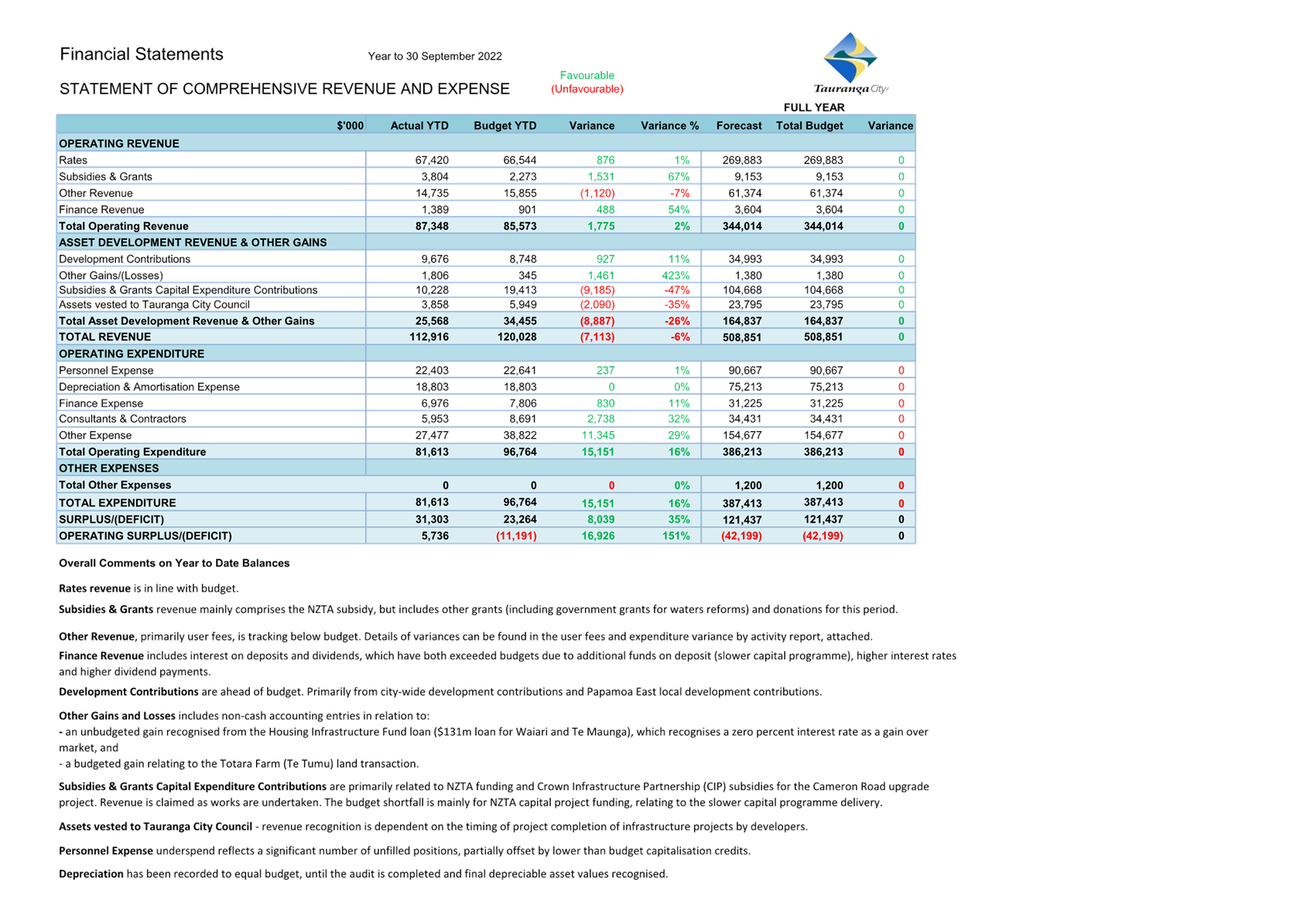

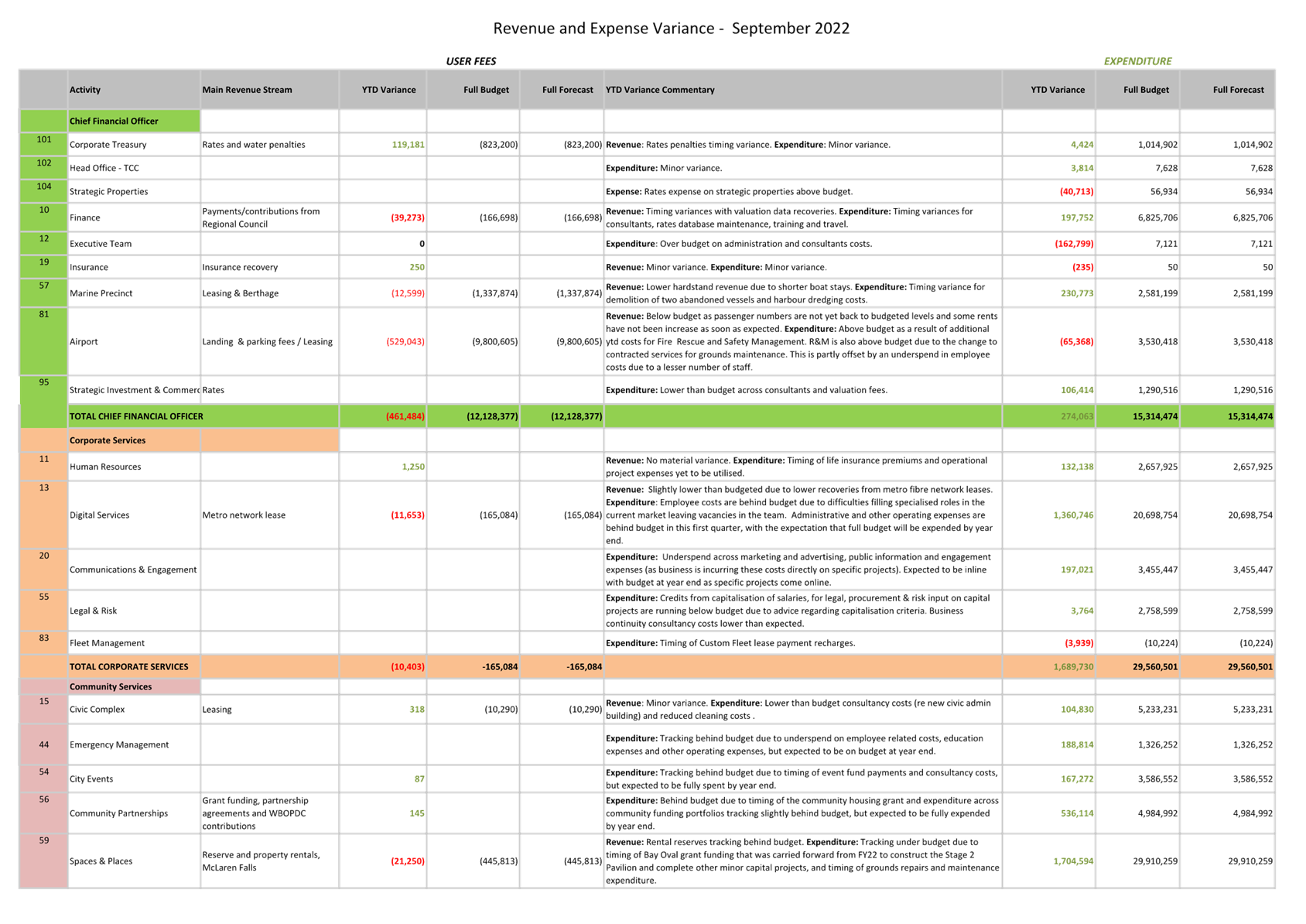
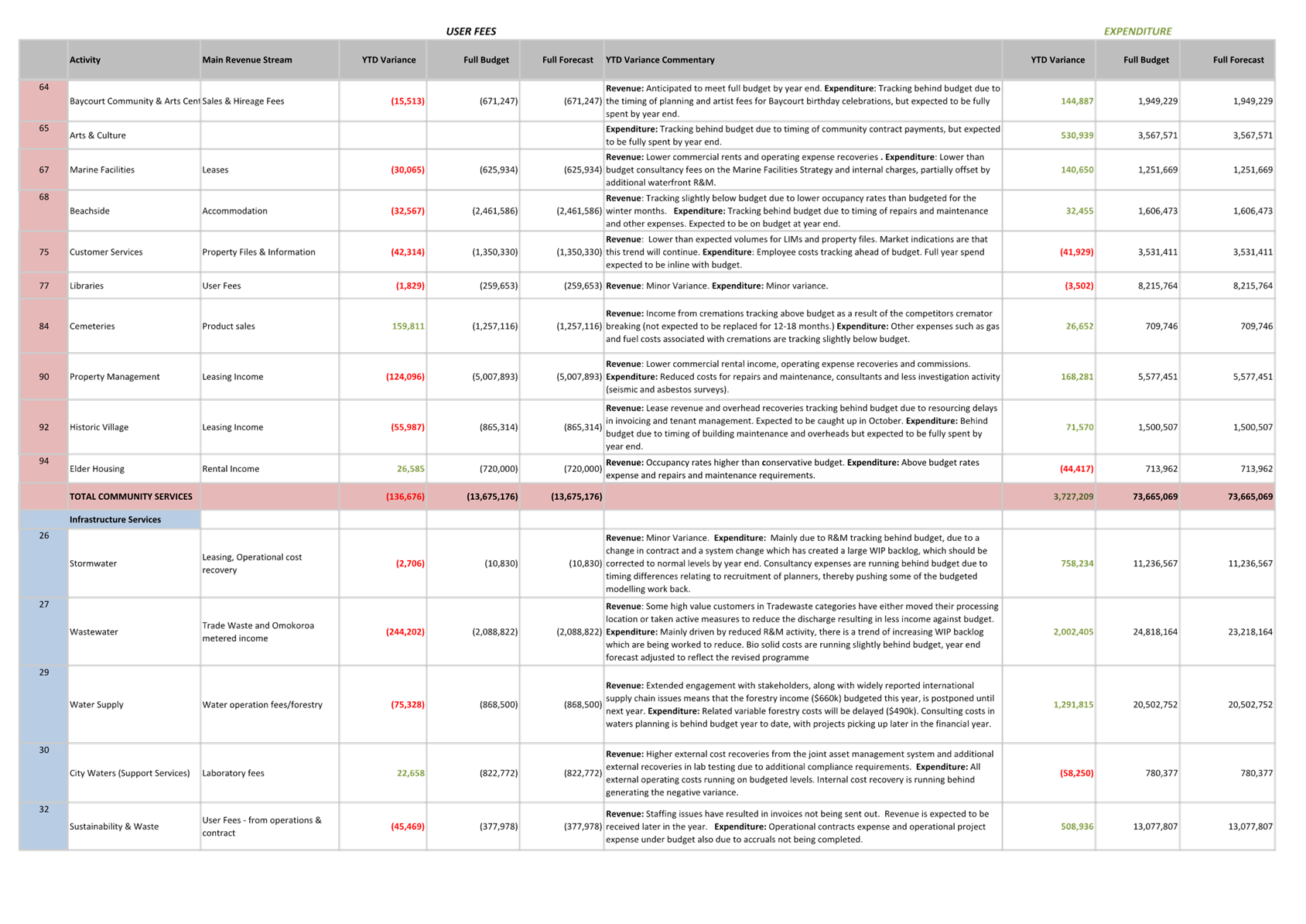
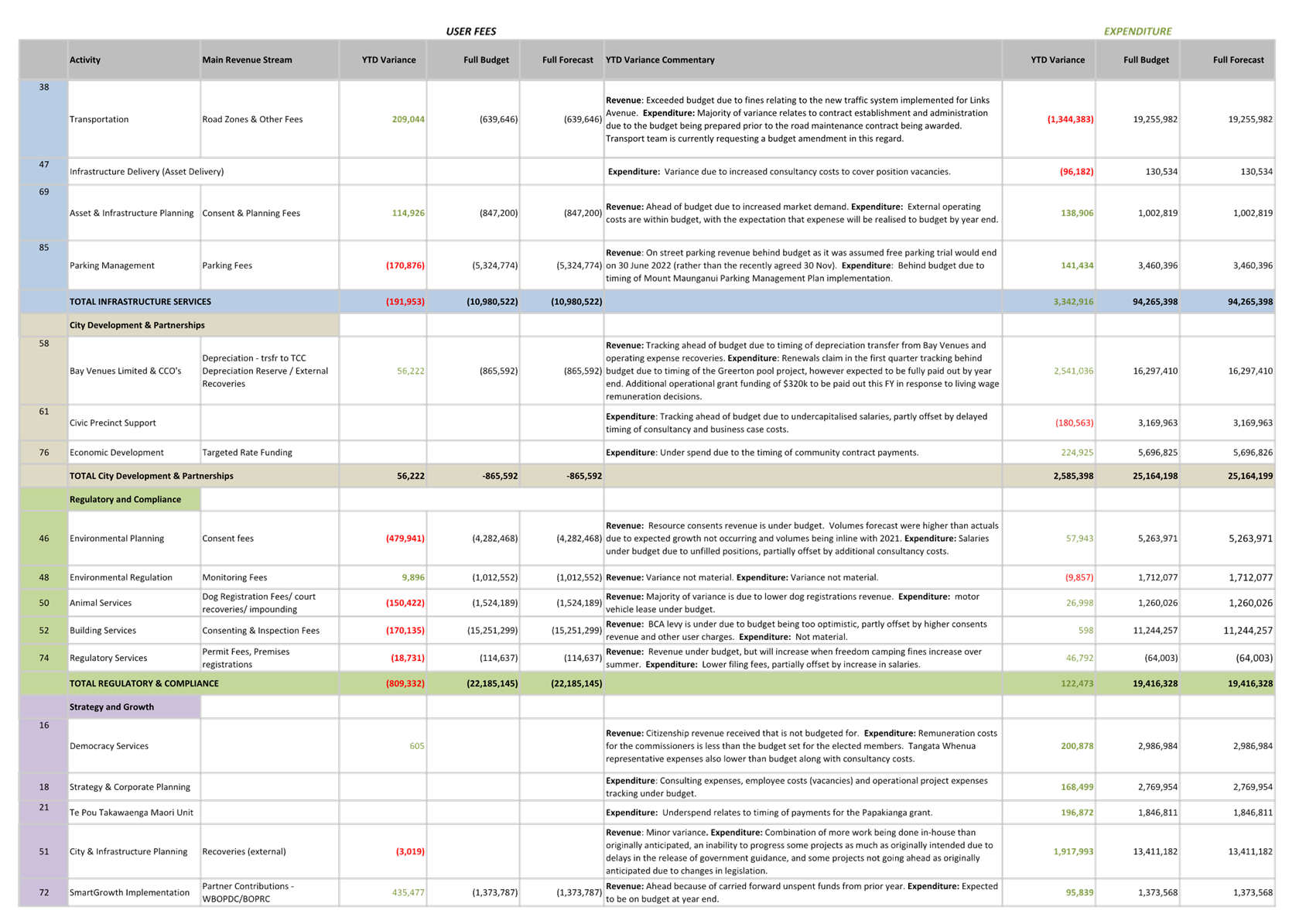
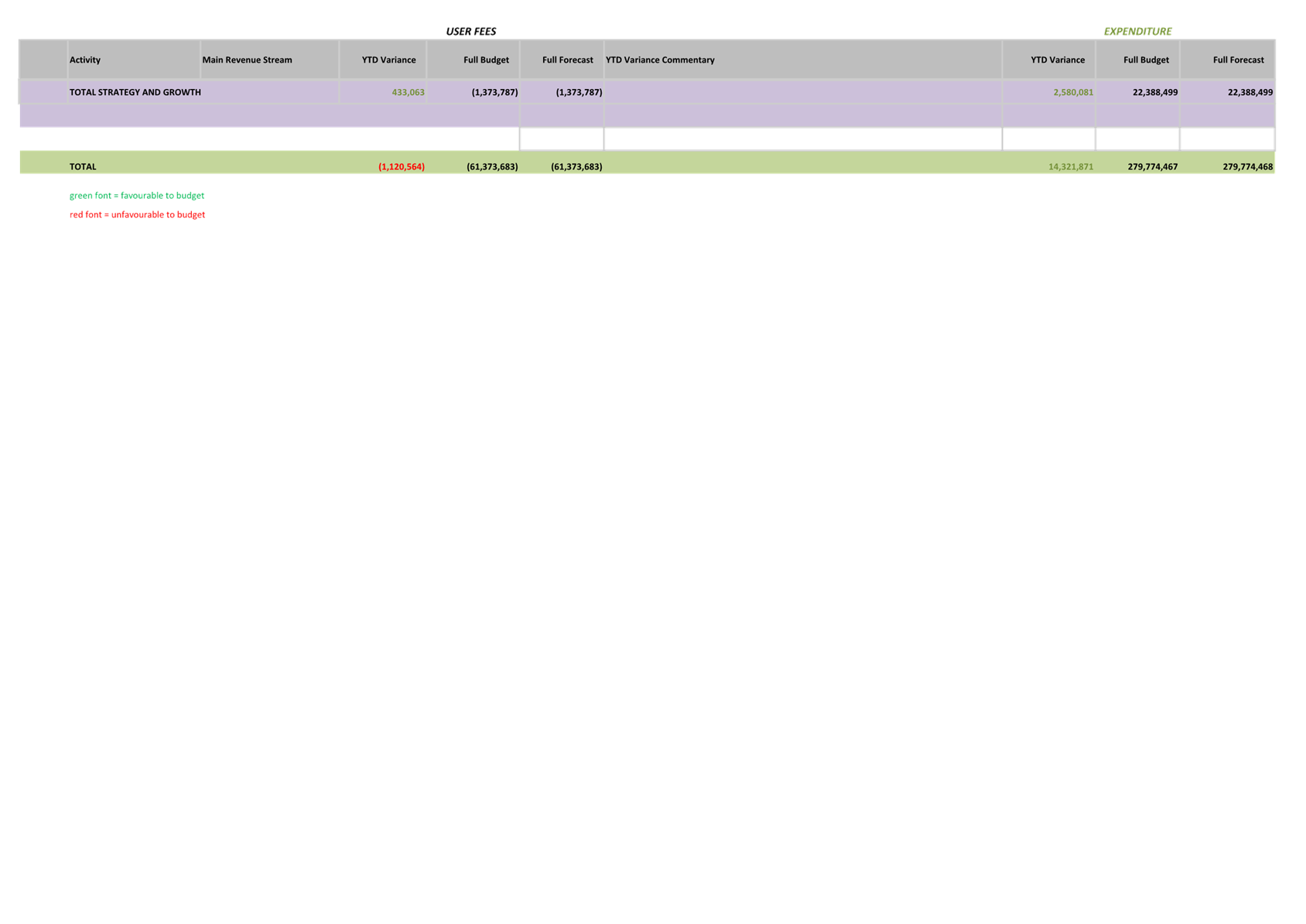
|
Strategy,
Finance and Risk Committee meeting Agenda
|
14
November 2022
|

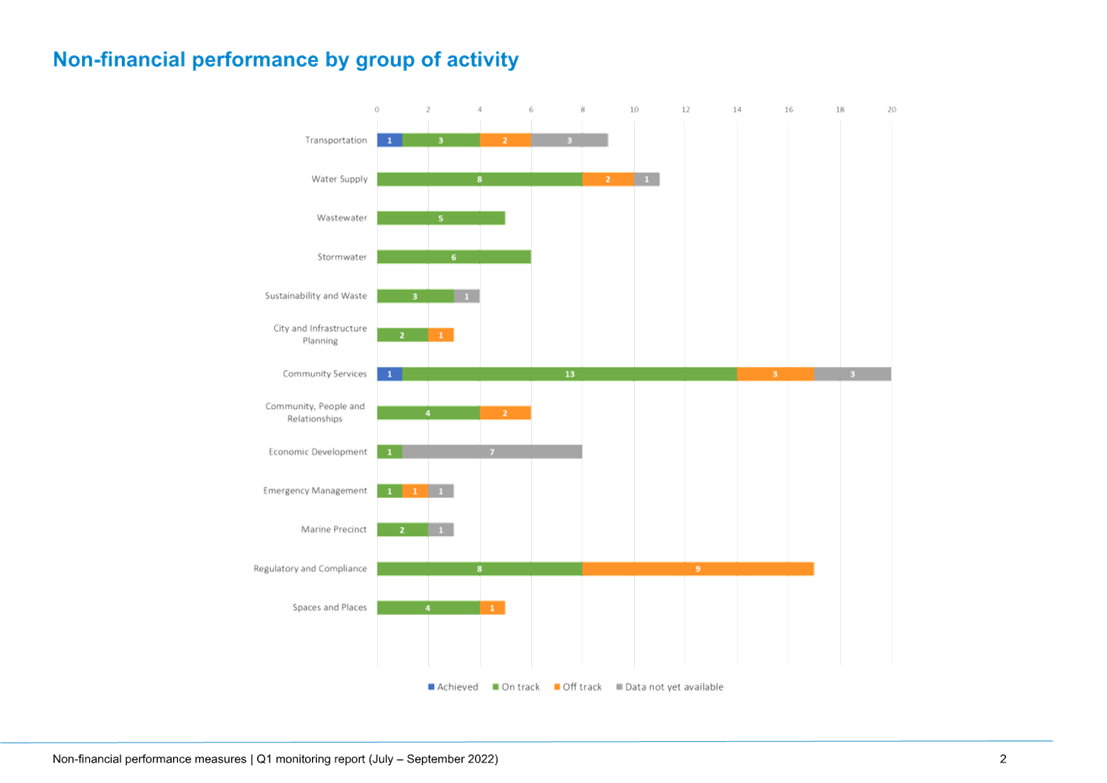
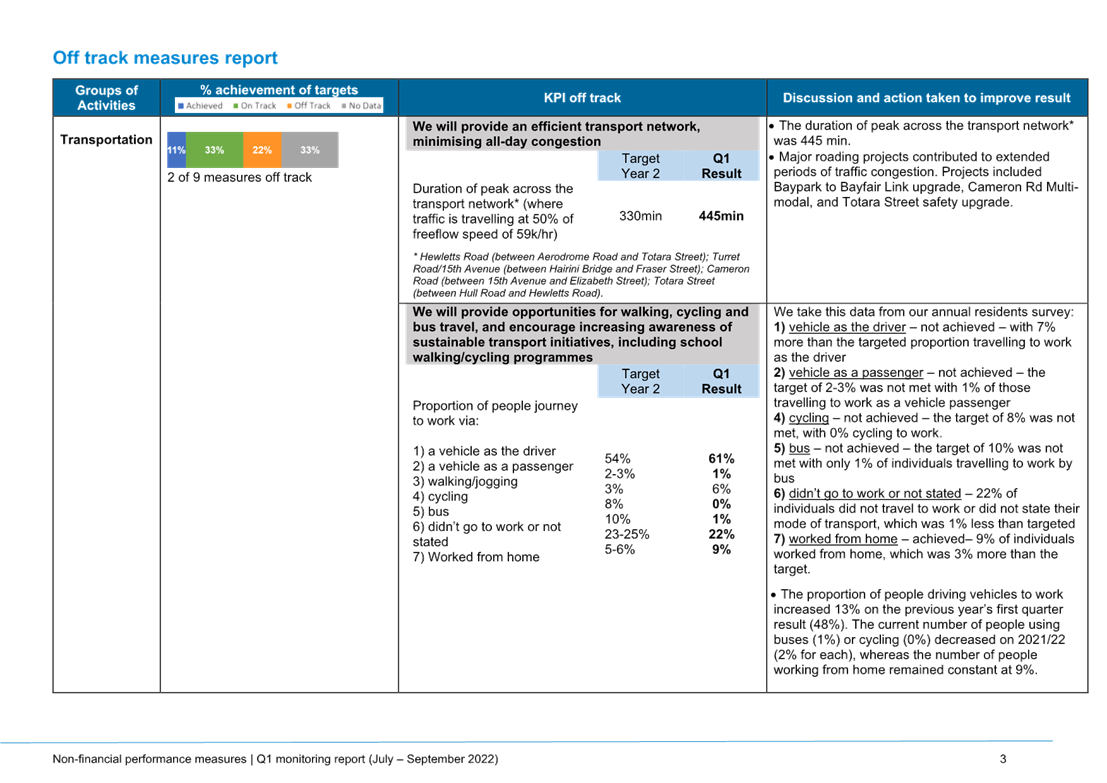
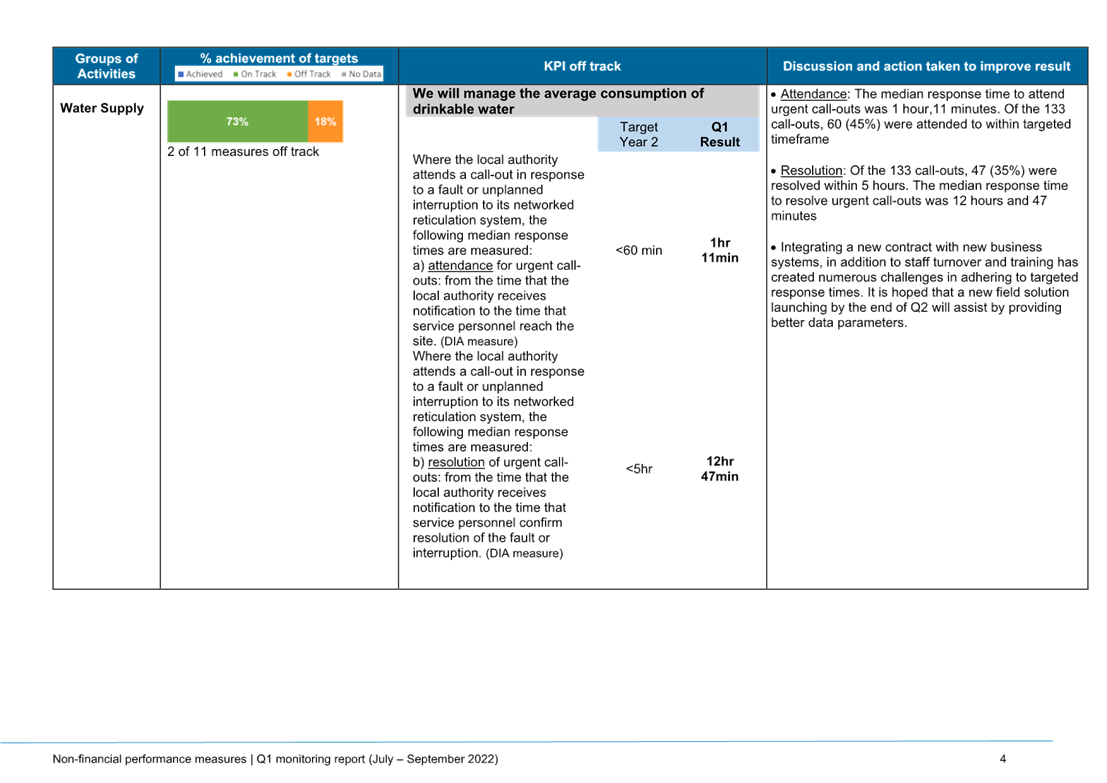
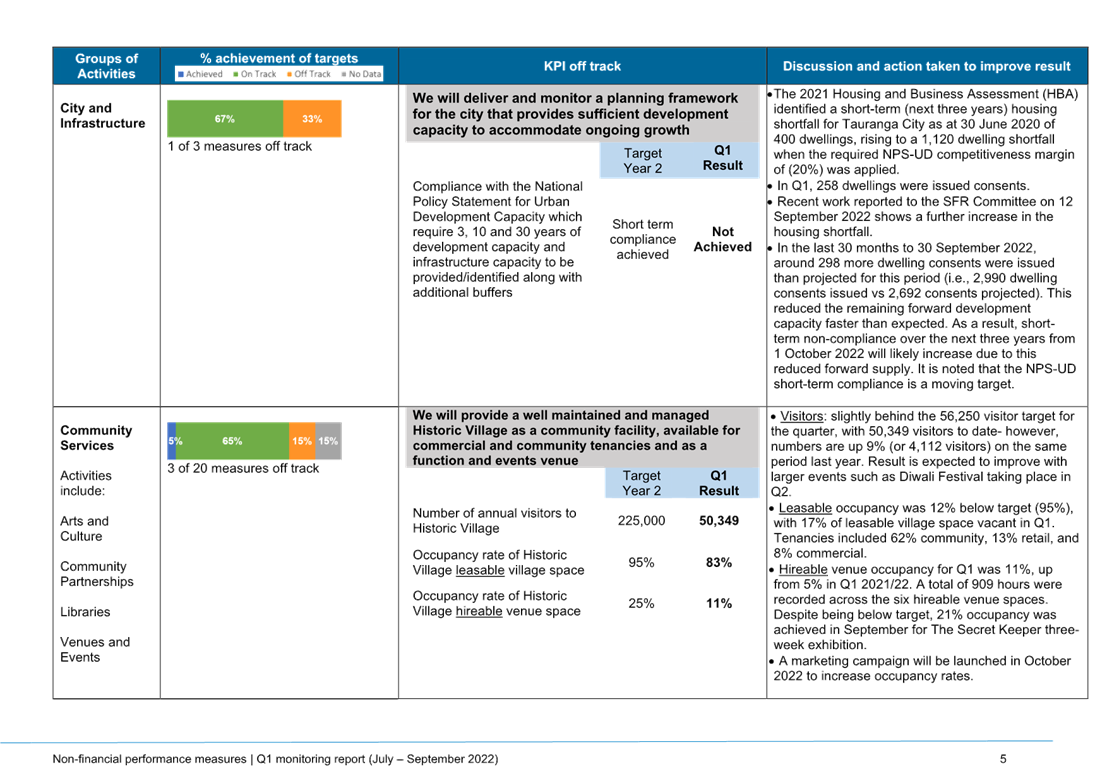
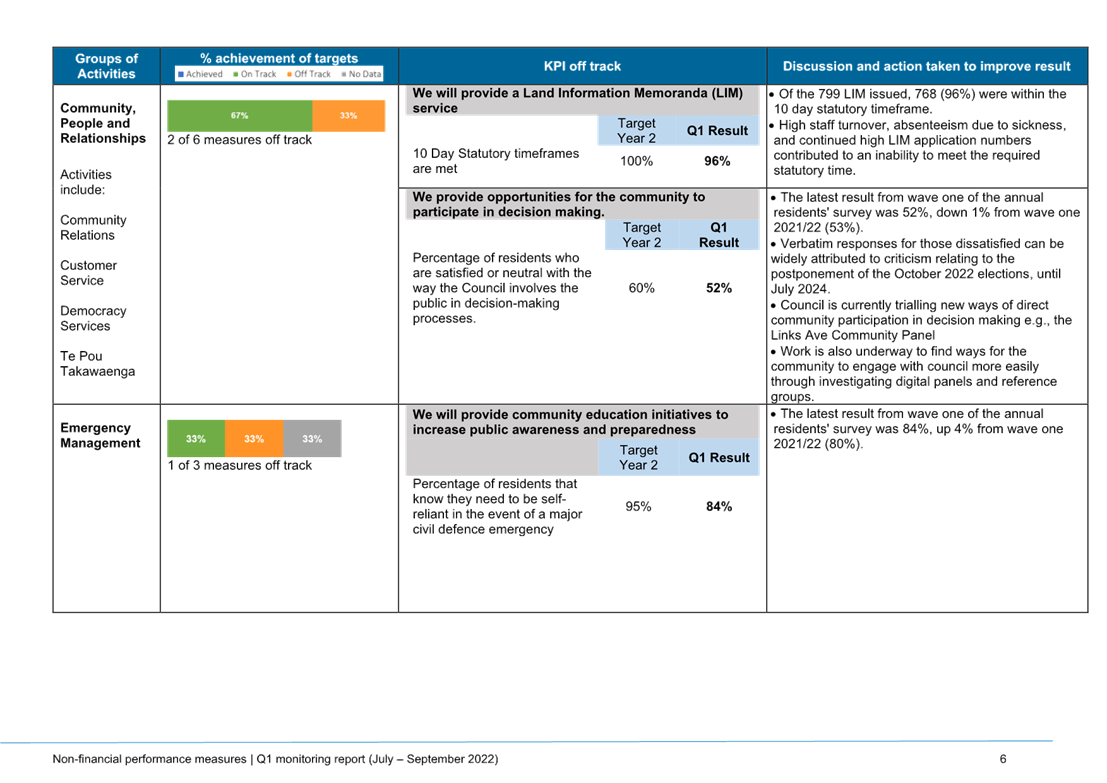
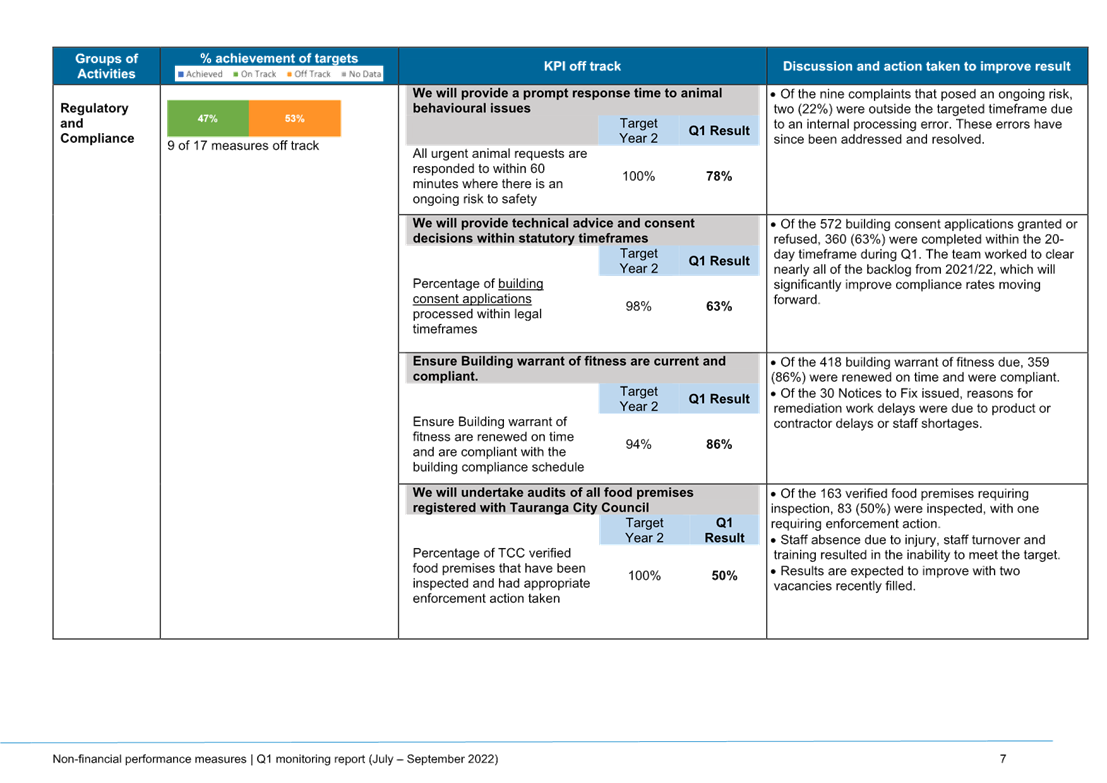
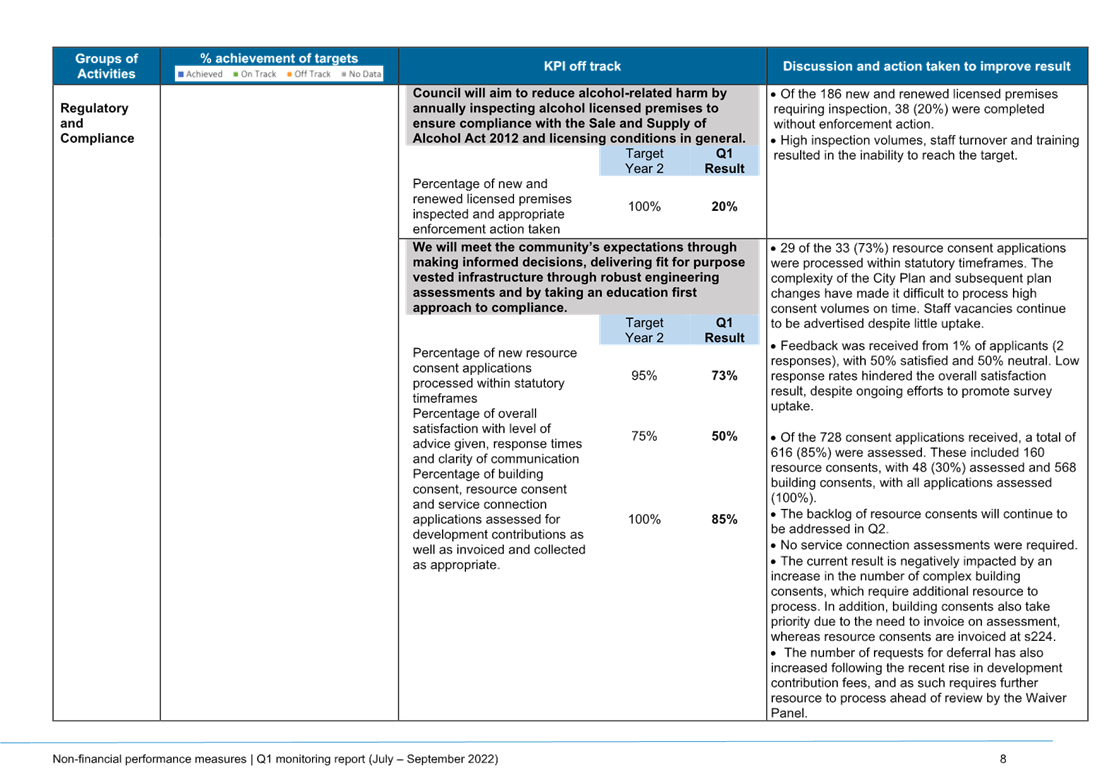
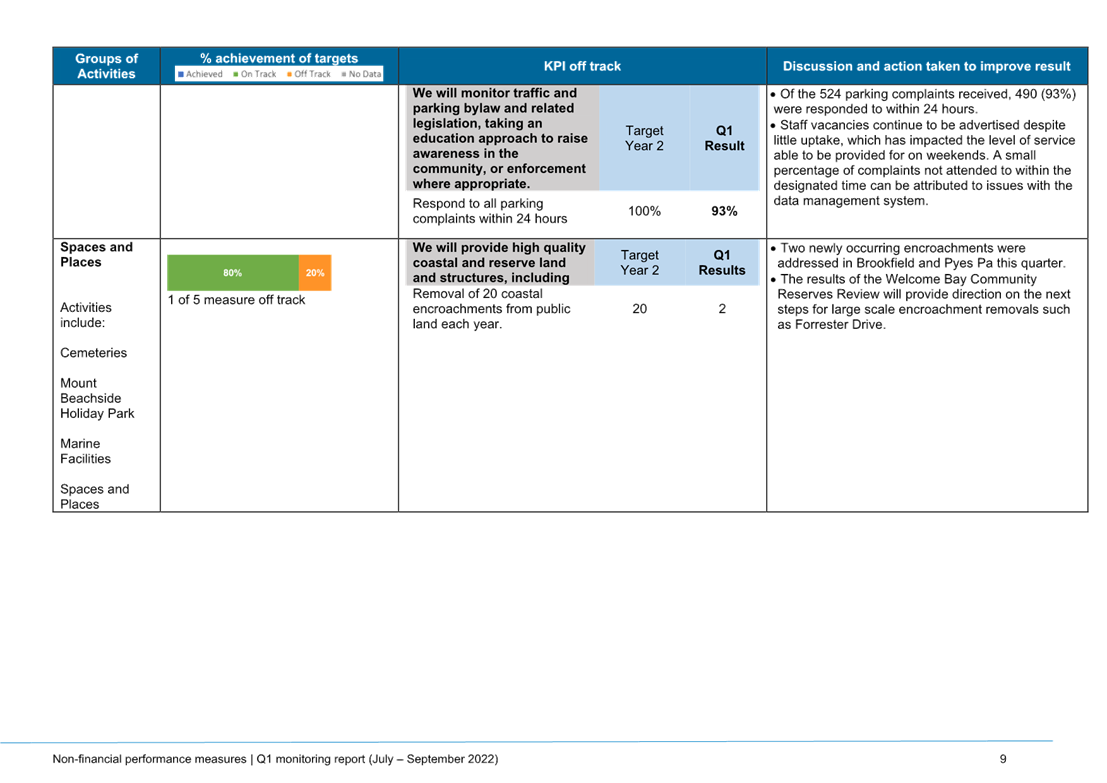
|
Strategy,
Finance and Risk Committee meeting Agenda
|
14
November 2022
|
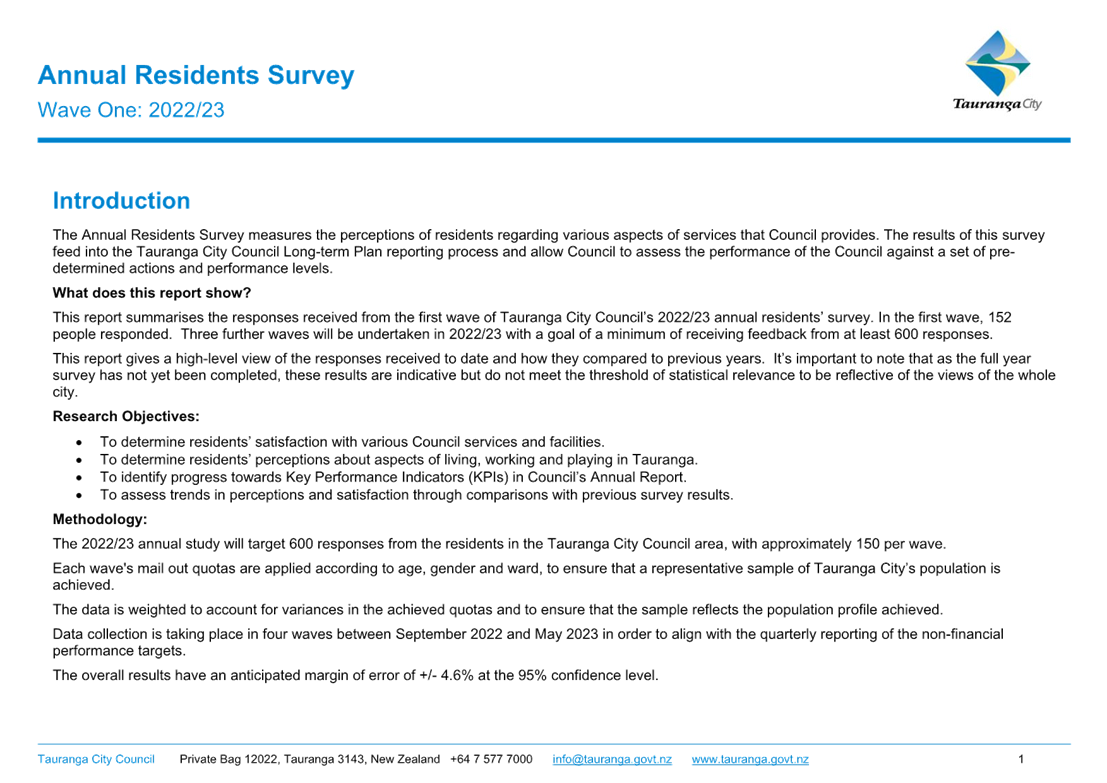
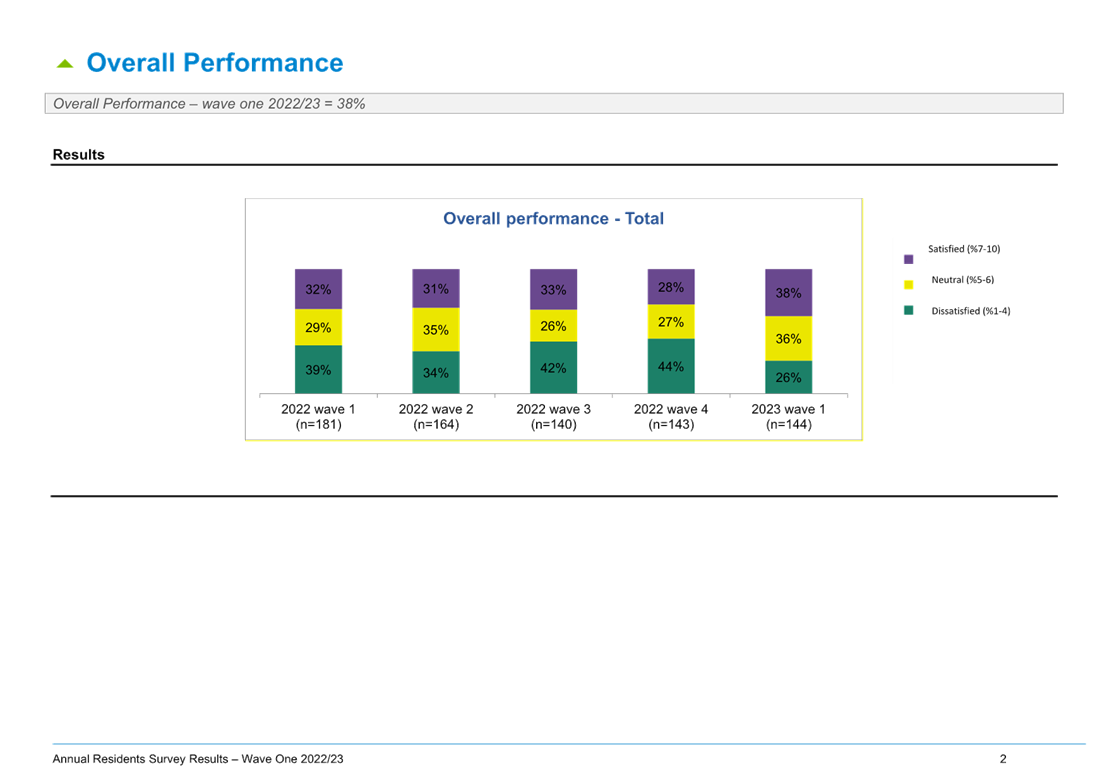
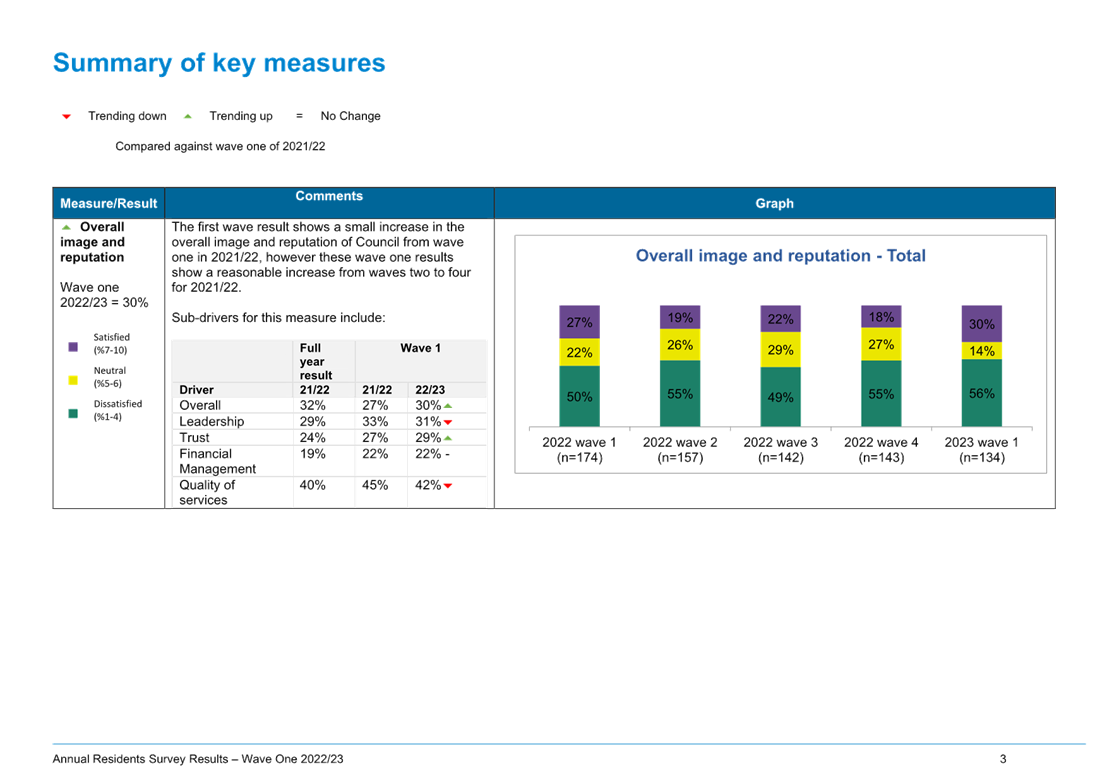
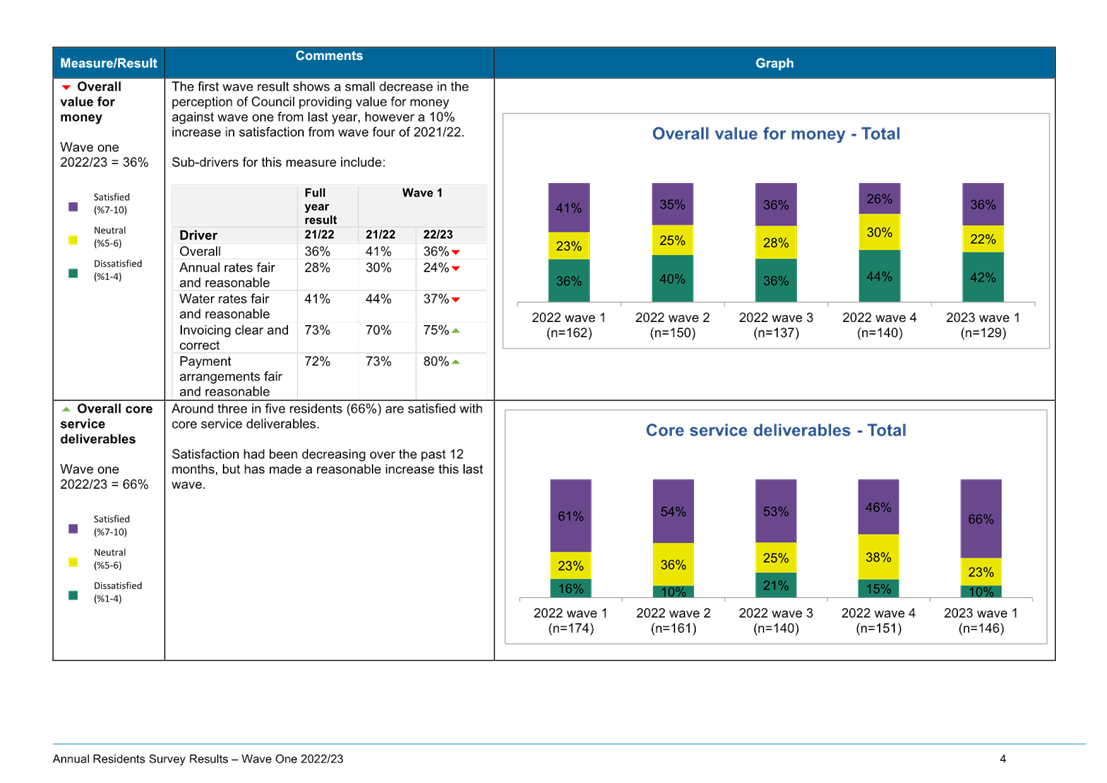
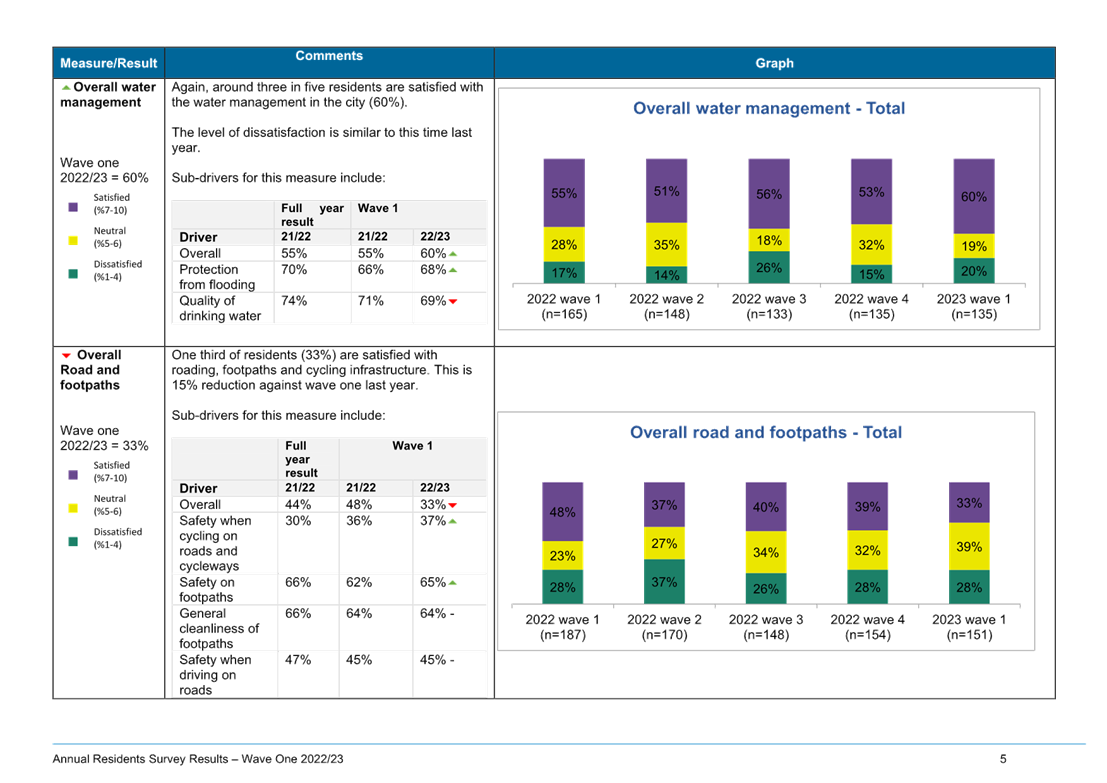
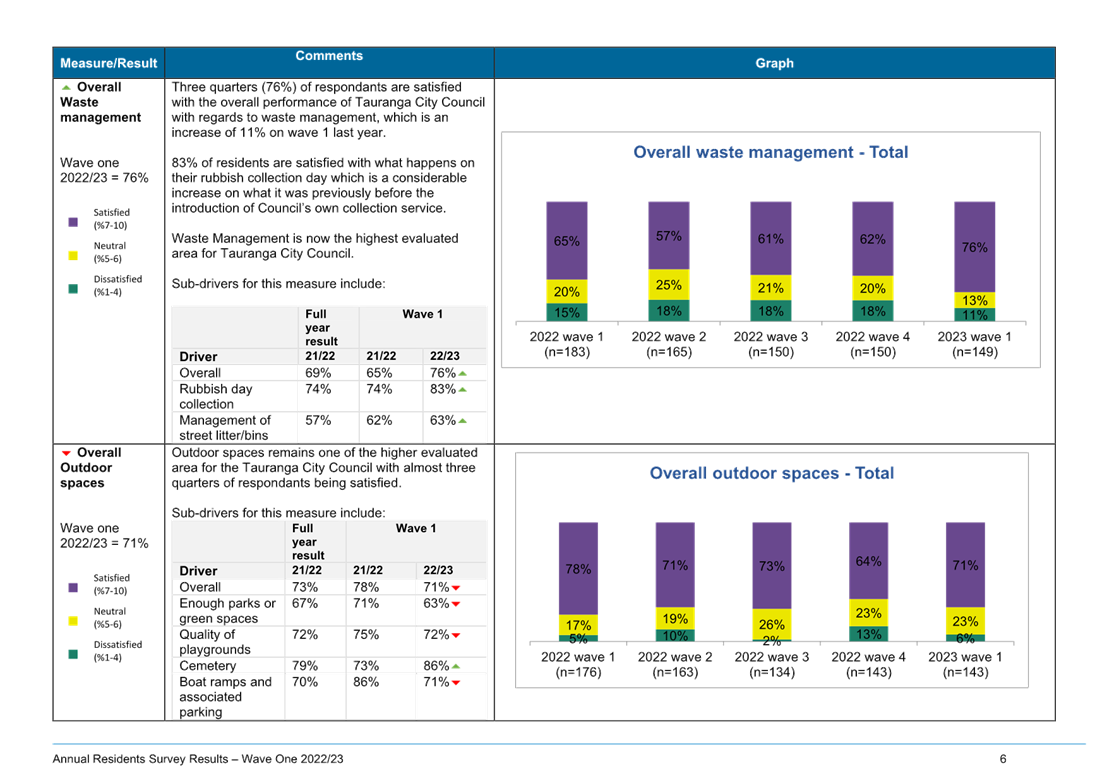
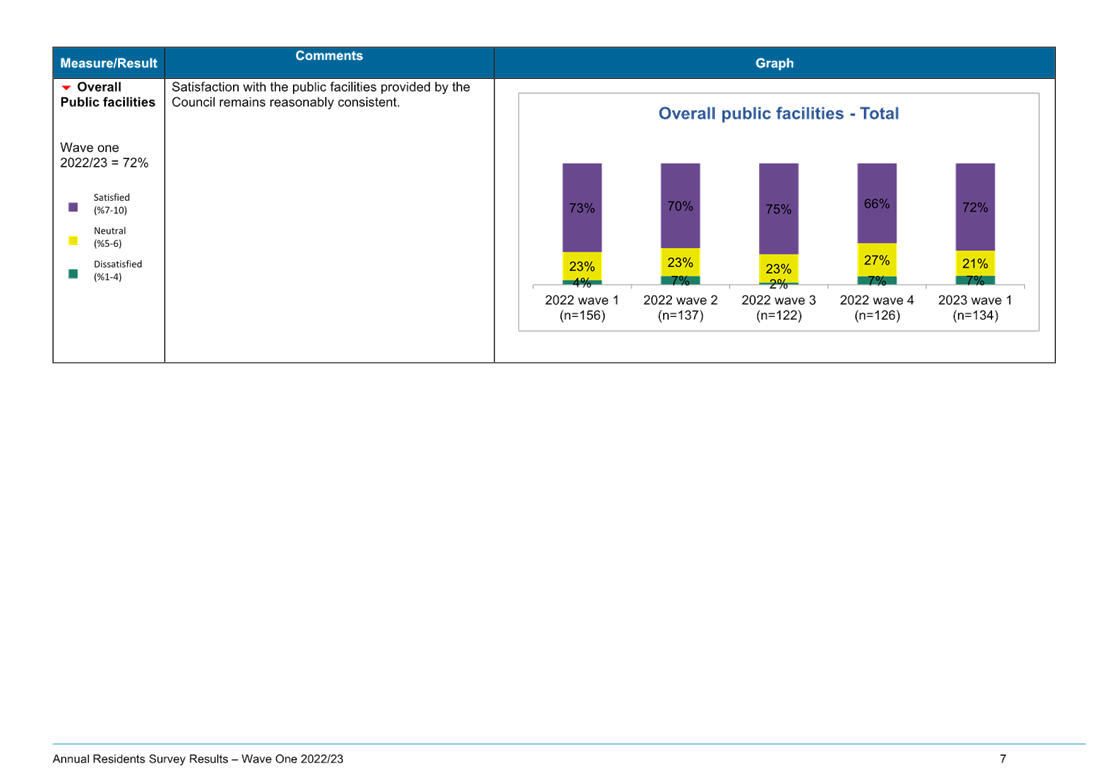
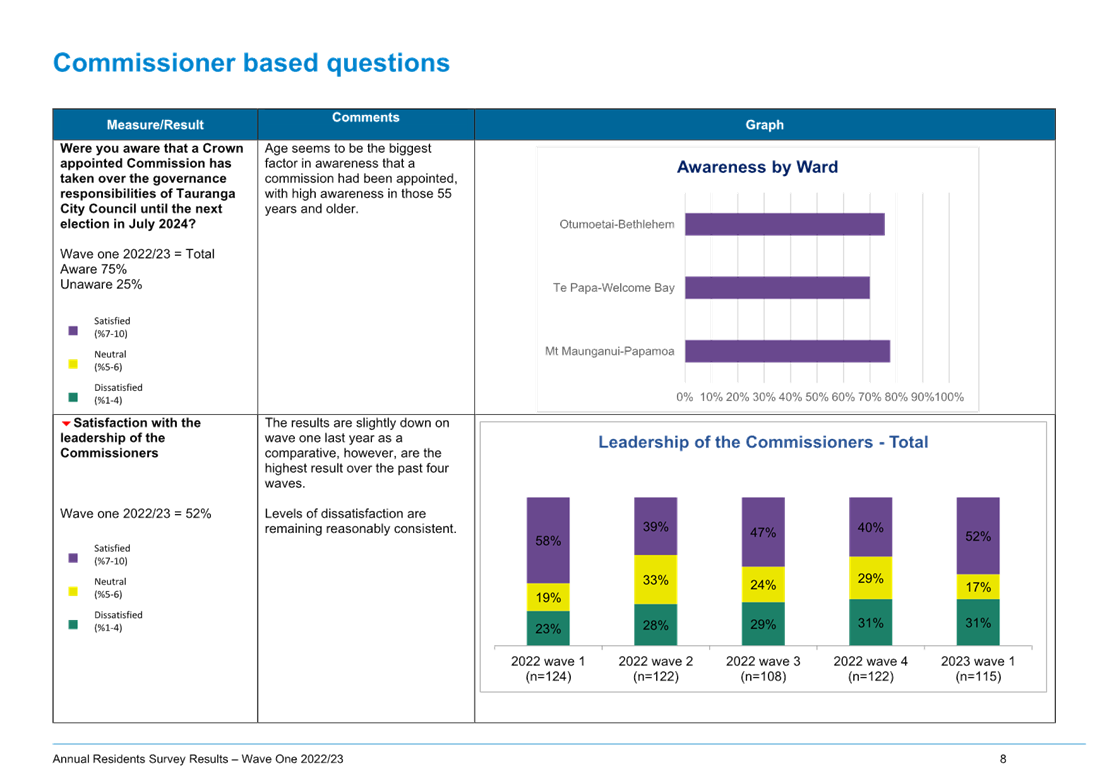

|
Strategy,
Finance and Risk Committee meeting Agenda
|
14
November 2022
|
9.8 Credit
rating from Standard and Poors Global Ratings
File
Number: A14158832
Author: Kathryn
Sharplin, Manager: Finance
Sheree Covell,
Treasury & Financial Compliance Manager
Authoriser: Paul
Davidson, Chief Financial Officer
Purpose of the Report
1. This report provides a
copy of Standard and Poors Global Ratings (S&P) credit ratings for 2022 and
summarises key factors raised in the report that affect the current rating and
future upside and downside risk to this rating.
|
Recommendations
That the Strategy,
Finance and Risk Committee:
(a) Receives the report
"Credit rating from Standard and Poors Global Ratings".
|
Executive Summary
2. Standard & Poors
(S&P) has confirmed it’s A+/A-1 long and short term issuer
credit ratings on Tauranga City Council (TCC). The report noted strength
for TCC in relation to the economic outlook and New Zealand’s robust
institutional framework.
3. The outlook remains
stable. S&P noted future rating has upside risk and downside risk.
Background
4. S&P noted that their
stable outlook for Tauranga City Council incorporates their expectation that commissioners
will follow through with planned rates increases. Council’s
requirement to continue to borrow meet its new infrastructure requirements also
affects the rating. S&P has adjusted the level of capital expenditure it
expects to be achieved given current difficult conditions.
5. The strengths for
TCC’s credit rating include Tauranga’s strong economy and liquidity
and the countries robust institutional framework.
6. Upside risks, which are
factors that could raise ratings include post-election that the council
delivers on financial outcomes in line with S&P forecasts. Also, an
upside opportunity would be stronger budgetary performance resulting in a lower
ratio of debt to operating revenue, such as could occur for Tauranga City
Council as a result of water reform (because of the high debt and capital
requirements associated with three waters).
7. Downside risks, which are
factors that could lead to a lowering of credit rating in the future, include a
capital expenditure level above that forecast by S&P or if revenue growth,
including rates and capital grants are lower than expectations.
Strategic
/ Statutory Context
8. TCC chooses to have a
credit rating to access lower interest margins and to support LGFA by ensuring
the majority of its lending is to rated councils, which supports the LGFA
credit rating of AA+ foreign currency and AAA local currency.
Options
Analysis
9. This report is for
information only.
Financial
Considerations
10. The confirmed rating for TCC means
that we will continue to access borrowing at LGFA margins for A+ rated councils
Legal
Implications / Risks
11. There are no legal implications
arising from this rating.
Consultation
/ Engagement
12. No engagement is required.
S&P has published its rating report.
Significance
13. The Local Government Act 2002
requires an assessment of the significance of matters, issues, proposals and
decisions in this report against Council’s Significance and Engagement
Policy. Council acknowledges that in some instances a matter, issue,
proposal or decision may have a high degree of importance to individuals,
groups, or agencies affected by the report.
14. In making this assessment,
consideration has been given to the likely impact, and likely consequences for:
(a) the current
and future social, economic, environmental, or cultural well-being of the
district or region
(b) any persons who are likely to be
particularly affected by, or interested in, the matter.
(c) the capacity of the local authority to
perform its role, and the financial and other costs of doing so.
15. In accordance with the considerations
above, criteria and thresholds in the policy, it is considered that the matter
is of low significance.
ENGAGEMENT
16. Taking into consideration the above
assessment, that the matter is of low significance, officers are of the opinion
that no further engagement is required prior to Council making a decision.
Next
Steps
17. The discussion within the report is
of relevance to the 2023-24 annual plan and the 2024-34 Long-term Plan. TCC maintains
dialogue with S&P who will continue to monitor our governance decisions and
budgetary performance through annual plans and the annual report. The
credit rating is renewed each year.
Attachments
1. Credit
rating from Standard and Poors Global Ratings Attachment 1 - A14160761 ⇩ 
|
Strategy,
Finance and Risk Committee meeting Agenda
|
14
November 2022
|
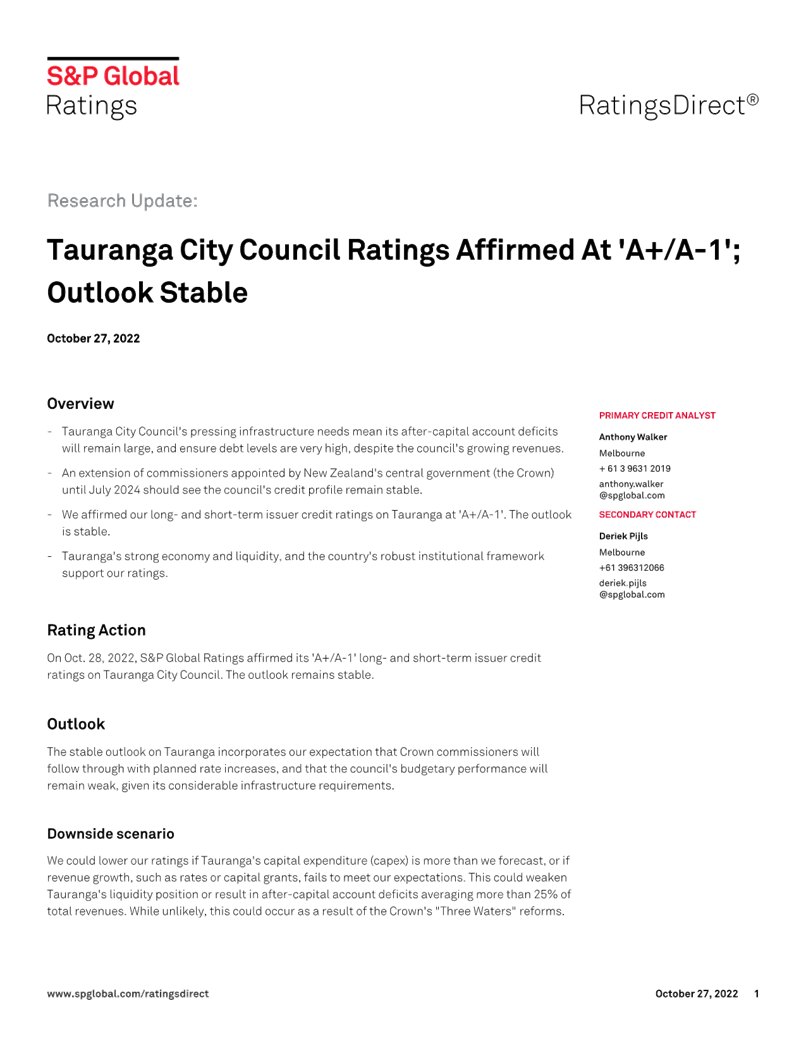

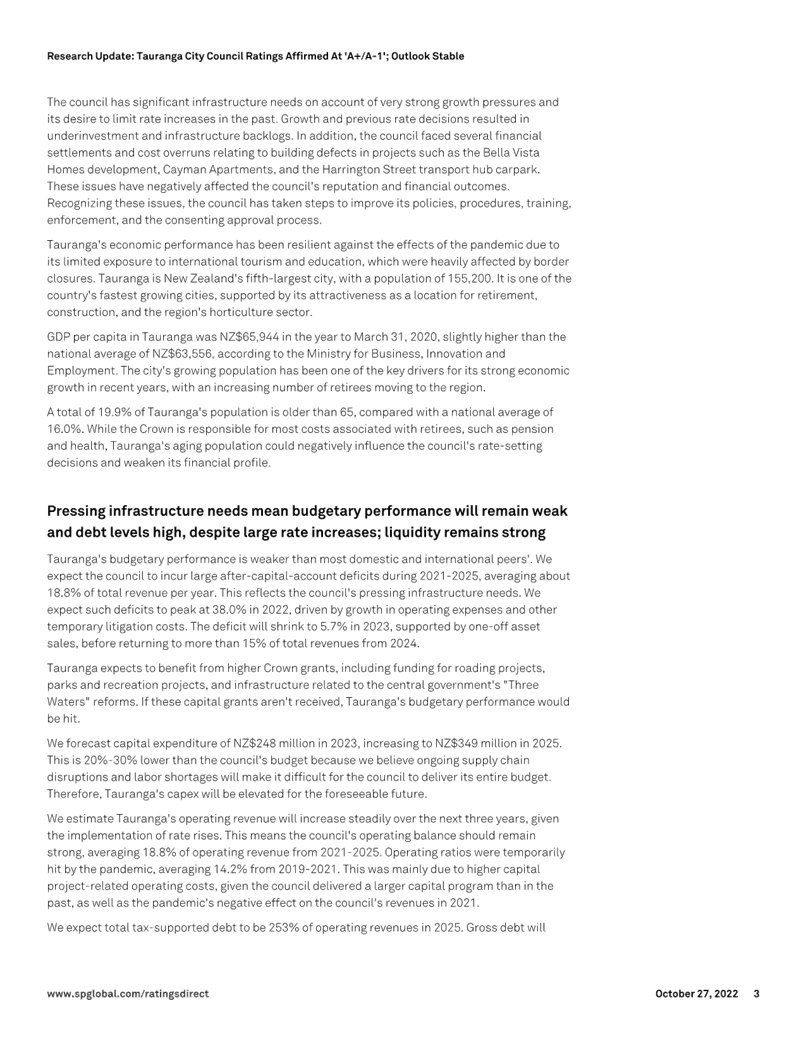
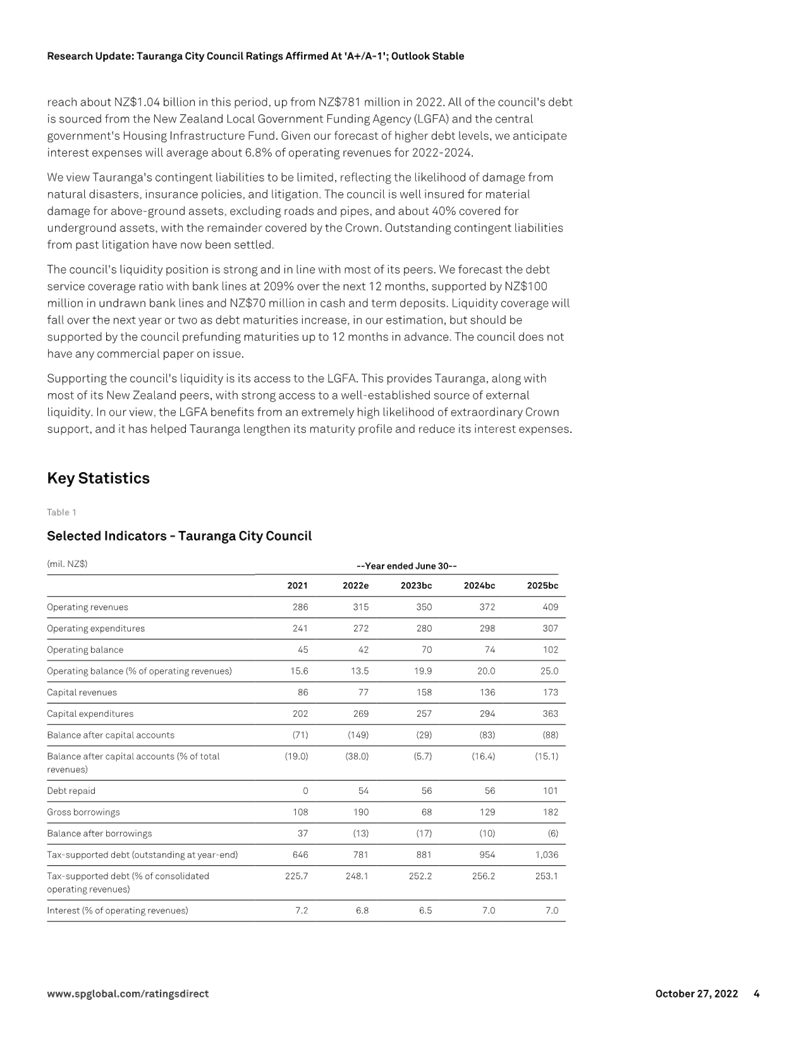
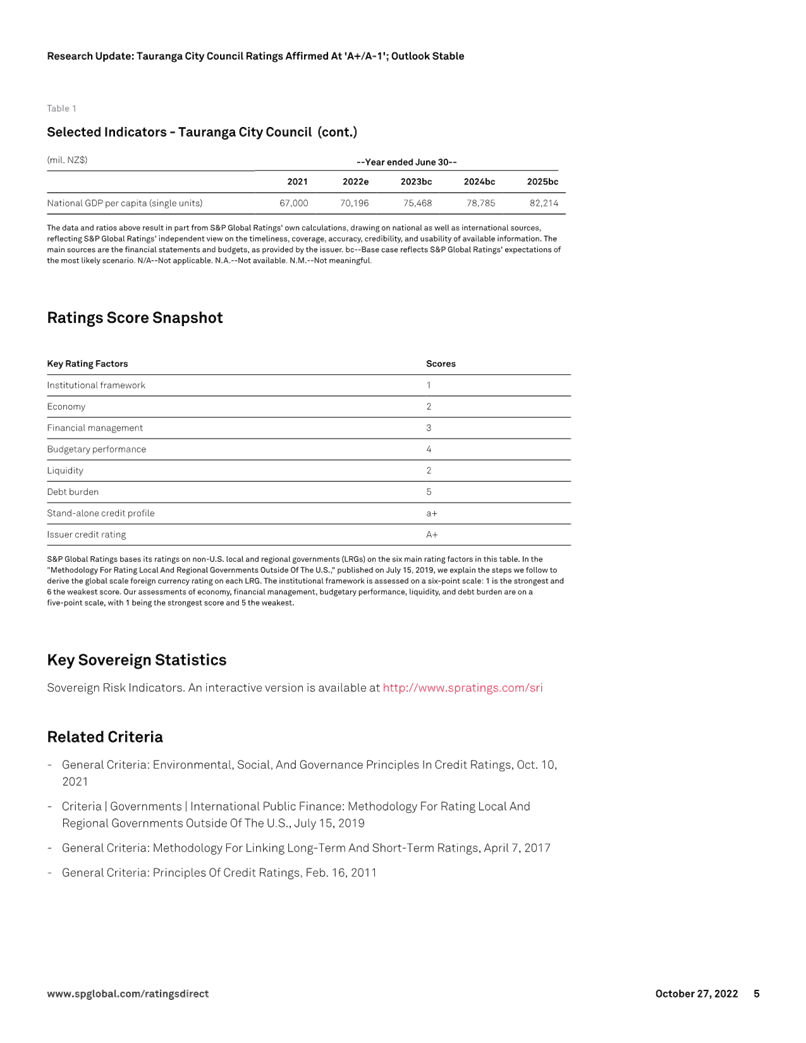
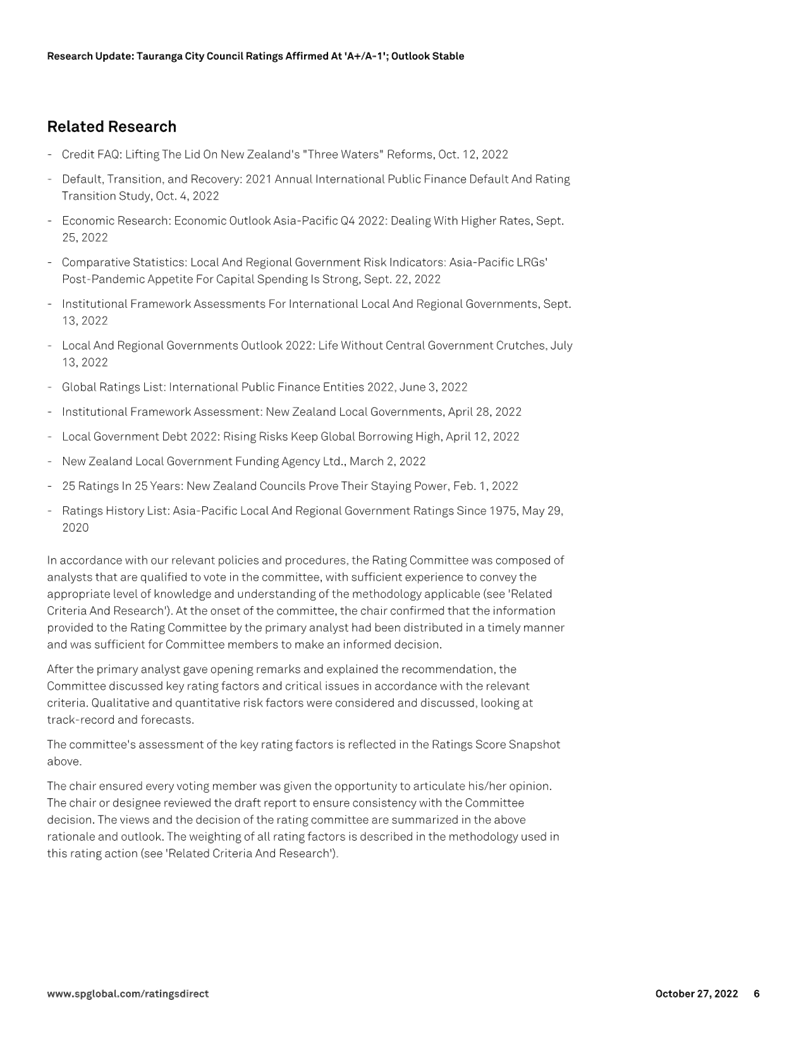
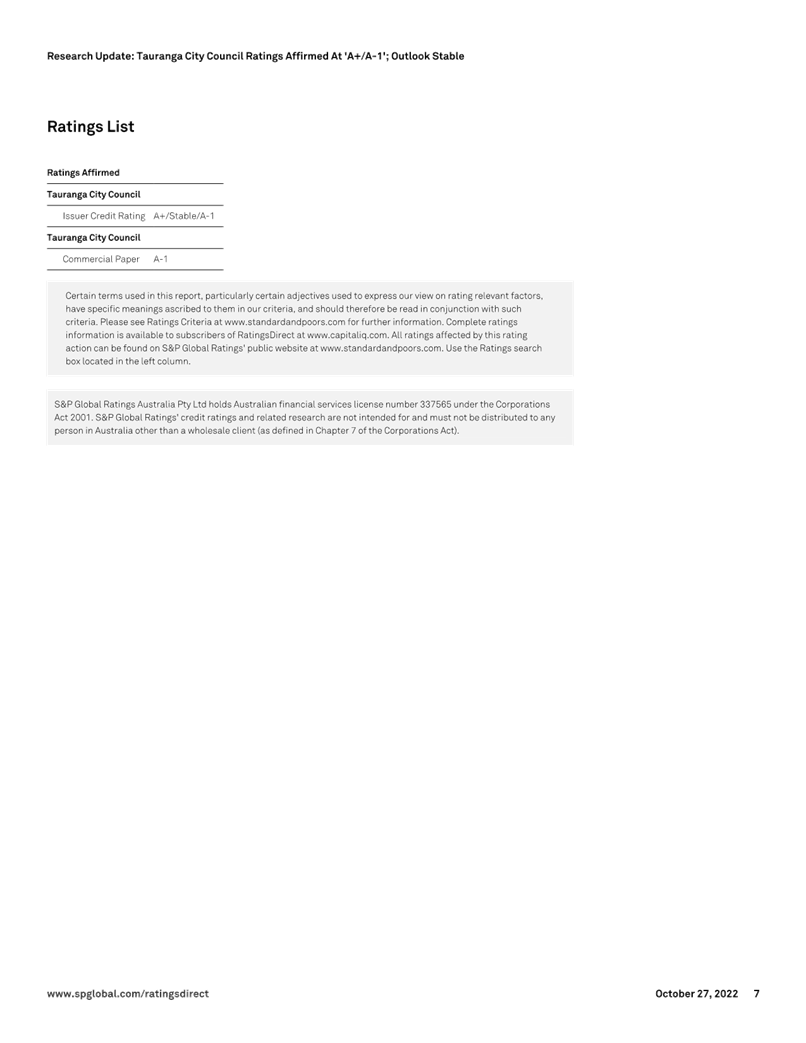
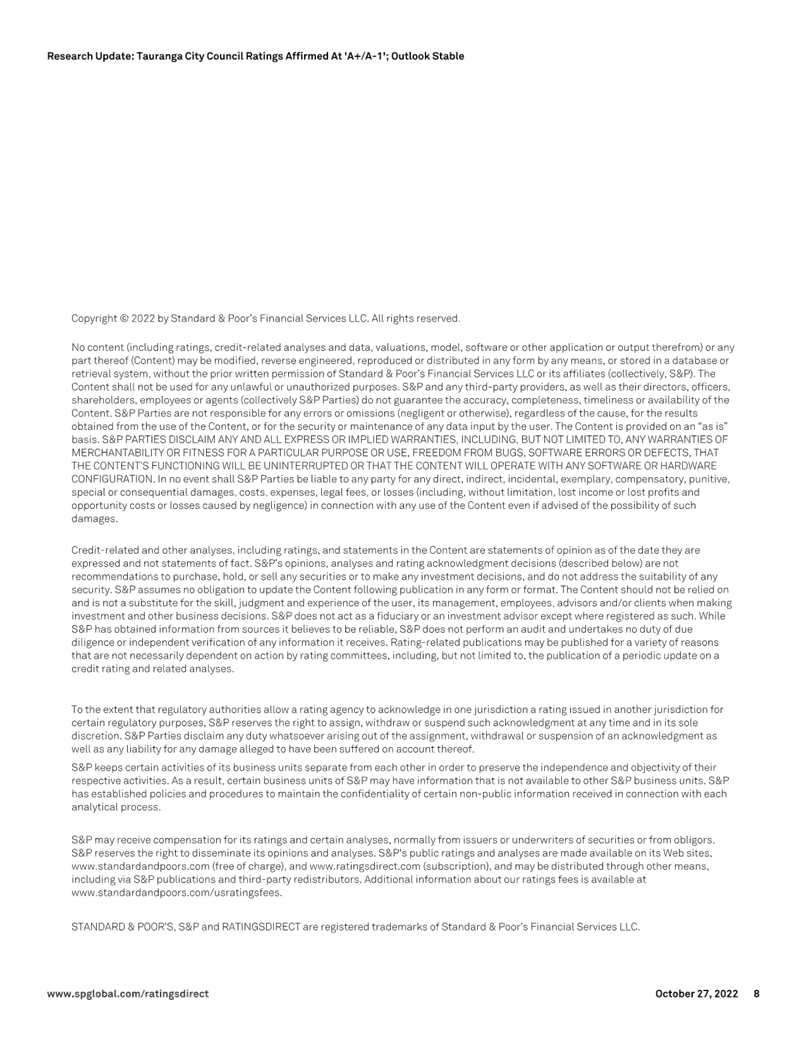
|
Strategy,
Finance and Risk Committee meeting Agenda
|
14
November 2022
|
9.9 Review
of the Grants for development contributions on Papakāinga Housing and
Community Housing Policies
File
Number: A13885518
Author: Sharon
Herbst, Policy Analyst
Authoriser: Christine
Jones, General Manager: Strategy, Growth & Governance
Purpose of the Report
1. To consider amendments to
the Grants for Development Contributions on Papakāinga Housing Policy and
Grants for Development Contributions on Community Housing Policy.
|
Recommendations
That the Strategy,
Finance and Risk Committee:
(a) Receives the report Review of
the Grants for development contributions on Papakāinga Housing and
Community Housing Policies.
(b) Makes
the following amendments to the Grants for Development Contributions on
Papakāinga Housing Policy:
(i) Outline
explicitly at 5.1.4 that any unused funds will roll over after the three-year
timeframe has passed.
(c) Make the following amendment
to the Grants for Development Contributions on Community Housing Policy:
(i) Outline explicitly at
5.1.4 that any unused funds will roll over after the three-year timeframe has
passed.
(ii) Remove ‘emergency
housing’ from the definition of community housing at 3.1
(iii) Amend the scope at 2.2 to
include ‘transitional housing providers with Level 3 Ministry of Social
Development Social Sector Accreditation and a Transitional Housing Services
Agreement’. This will include amendments for consistency at 2.5, 3.1,
4.1, 4.2, 5.1.3, 5.2.1, 5.2.3, 5.3.1 and 5.5.2.
(iv) Amend the scope at 2.2 and funding
eligibility at 5.2.1 to replace ‘that are operating under a
not-for-profit structure’ with ‘that are developing housing with
a not-for-profit intent’. Add in the funding allocation process at
5.3.1 item 2 to notify TCC of…. ‘and evidence to show the housing
development has a not-for-profit intent’.
|
Executive Summary
2. The 2021-31 Long-term Plan
Council established two housing grant funds of $500,000 each per year for three
years. The Community Housing Grant Fund is to assist registered community
housing providers to increase and retain the stock of community housing in Tauranga
city by fully or partially subsidising citywide development contributions. The
Papakāinga Housing Grant Fund is to reduce the financial burden of
citywide development contributions (DCs) on papakāinga housing developed
for the benefit of shareholders and/or beneficial owners of Māori land.
3. The
Grants for Development Contributions on Community
Housing Policy (the community housing policy) and the Grants for
Development Contributions on Papakāinga Housing Policy (the
papakāinga housing policy) were adopted in October 2021 to set out a
structured and transparent approach to the distribution of grant funds.
4. When the policies were
adopted, they included a requirement to be reviewed annually.
5. Working with recipients
and potential recipients of the grant fund, staff have reviewed the policies
and made recommendations for amendments. Direction is sought from the
committee before the amended policies are adopted and implemented. Those
issue are presented in this report.
Background
Development of the
policies
6. On 15 March 2021, Council
resolved that two new grant funds, each being $250,000 per year, were to be
included in years 1 to 3 of the draft Long-term Plan 2021-2031, funded from the
proceeds of the Elder Housing portfolio sale.
7. The purpose of the two
grant funds is to assist the development of community and papakāinga
housing within the city. Council intended that the grant funds should be
available to fully subsidise citywide DCs on papakāinga housing and on
community housing developments by registered community housing providers
(CHPs).
8. In response to public
submissions to the draft Long-term Plan, both grant funds were subsequently
doubled to $500,000 per annum for years 1 to 3 of the Long-term Plan 2021-2031.
Council directed policies be developed for the two grant funds.
9. In October 2021, the
policies were adopted by Council and set out the eligibility criteria and the
application, assessment, approval and distribution processes for the grant
funds. They both included a requirement to be reviewed annually following
completion of the grant payment process.
10. This paper reviews both these
policies and provides recommendations on potential amendments.
Review of the papakāinga
housing policy
11. A
review of the papakāinga housing policy was conducted to determine whether
the distribution policies are operating as intended.
12. The
policy approach distributes grants on a first in,
first served basis, where eligible developments have their DCs paid directly by
the council at the time they fall due. This is done through in-house
transfer processes at the time building consents are approved and requires
streamlined internal processes and clear eligibility criteria to ensure
consents are issued as soon as possible. The Takawaenga Unit took the
lead and assigned a kaiarahi to manage the application assessment process.
13. In the first year, up until 30 June 2022, a total of five
applications had been received and one grant distributed for $10,615.47. This
resulted in $489,384.53 carried over into the next financial year, making $989,384.53 available to distribute in the current
year. At the date of writing, a further six applications have been received,
with four grants distributed totalling $92,413.09, and a further two grants for
around $36,000 approved but awaiting payment confirmation. In total $103,028.56 has been distributed so far.
14. Council
staff involved in establishing and operating the grant fund provided feedback
on its implementation. Feedback was also sought and received from Te Rangapū Mana Whenua o Tauranga Moana, local
Māori Land Trust representatives, Te Puni Kokiri (TPK), and parties that
applied for a grant. Kainga Ora, Western Bay of Plenty District Council
(WBoPDC) and Bay of Plenty Regional Council (BoPRC) were approached but did not
provide any feedback.
15. Feedback showed that the grant has supported a small number
of papakāinga housing to be developed.
16. The
main issues raised by the council staff were about some complexities in the
application and approval process, raising more awareness of the grant, the
three-year term of the grant, and a suggestion that the scope and eligibility
criteria could be extended to provide more of an incentive to build (such as
including local DCs and Building Consent Fees).
17. External
stakeholders noted a lack of uptake potentially being
because there is a lack of awareness about the grant, confusion about the
process to apply or that the amount available fails to impact the challenges of
building on Māori land. Feedback emphasised that building on Māori
land is a long process, taking years of planning, with difficulty accessing
funding support and rural Māori land especially facing major
infrastructure barriers compared to those in Urban Growth Areas. Suggestions
were made to allocate the grant more equitably across the city, include local
DCs, or to widen the eligibility to include applications for housing built
before 1 July 2021 and Māori land returned as commercial redress.
The fund could continue to rollover until it is
spent. It was also suggested that more time is needed to see the impact of the
grant before any changes are made.
18. Staff involved in promoting and manging the grant fund
acknowledge there is a lack of awareness of the fund. A communication strategy
is being put into place to explore opportunities to raise awareness, make the
application process easy to understand, and provide ongoing support through
avenues such as pānui, wananga and radio, and through key stakeholders
(Māori Land Trusts, Te Puni Kokiri (TPK), Kainga Ora and Ministry for
Housing and Urban Development (MHUD)).
19. As
the affected parties have had the opportunity to input to the policy review
process, and as the substantive decision to implement the grant funds was made
as part of the Long-term Plan 2021-2031 process, staff consider that no further
public consultation on the draft policies is required.
Review of the community housing
policy
20. A
review of the community housing policy was conducted to determine whether the
distribution policies are operating as intended.
21. The
community housing policy outlines a grant fund distribution process that occurs
at the end of the financial year. Eligible developments receive a retrospective
grant on a pro-rata basis according to the dollar value of citywide development
contributions paid during the previous year.
22. In
September 2022 all Community Housing Providers (CHPs) were contacted and asked
to provide details of eligible developments. There were six eligible
developments notified for the 2021/22 year, the applications are yet to be
finalised but are estimated to be around $120,000 in total. This will result in approximately $380,000 carried over
into the next financial year, making approximately $880,000 available to
distribute in the current year.
23. At the date of writing, four CHPs have confirmed 37
dwellings are being built this year and will be eligible for the grant in the
2022/23 year, and 43 dwellings planned for next year that will be eligible for
the grant in the 2023/24 year, with an estimated total of around $1.6 million
in DCs for these dwellings.
24. Council staff involved in
establishing and operating the grant fund provided feedback on its
implementation. Feedback was also sought and received from registered CHPs and
Community Housing Aotearoa. Community Housing Regulatory Authority (CHRA),
Ministry of Social Development (MSD) and Ministry of Housing and Urban
Development (MHUD) were also contacted but did not provide feedback.
25. Overall
feedback showed there has been a lag in the uptake of this grant due to the
time taken for developments to reach the building consent stage, not because
the fund is inappropriate.
26. Council staff questioned the contradictory nature of the
purpose, the scope of eligible recipients and the definition of community
housing in the policy. In particular, the inclusion of progressive home
ownership does not align with the stated purpose to increase the stock of
community housing as the homes become privately owned. The inclusion of
emergency housing in the definition is confusing as this housing is only
intended for temporary housing (7 days). Transitional housing is included in
the definition and provides support to individuals for around 3 – 18
months and so expansion would increase the stock of housing for individuals.
However, the transitional housing providers are excluded from the scope as they
are not CHPs. There was also confusion about the scope being limited to CHPs
with a not-for-profit structure, as two CHPS do not have a not-for-profit
organisational structure. Other issues raised by stakeholders were the
three-year term of the grant fund, whether other alternatives could support
community housing, and whether the grant should be retrospective or first in
first served.
27. As
the affected parties have had the opportunity to input to the policy review
process, and as the substantive decision to implement the grant funds was made
as part of the Long-term Plan 2021-2031 process, staff consider that no further
public consultation on the draft policy is required.
Approach of nearby councils
28. WBoPDC
support papakāinga and community housing in three ways:
(a) Ongoing
funding in the Long-term
Plan (page 186-187) to support papakāinga housing of $55,000 for 2022,
and then inflation adjusted each year across the 10 year plan.
(b) Better
Off Funding applications, of which $700,000 will be allocated to progress
specific Māori housing aspirations. See the WBOPDC Council
report (page 102) for more detail.
(c) As
part of the Schedule
of Fees and Charges 2022/23 (page 38), papakāinga and community
housing will receive a 100% reduction in financial contributions (FINCOS) for
additional dwellings (over and above the base charge of one Household
Equivalent), for applications up to a maximum of 10 dwellings, subject to
specific criteria.
29. The
waiving of FINCOS is a mechanism similar to the grants for development
contributions that the TCC policies cover. The difference is that it applies
only to additional dwellings, and has a limit up to 10 dwellings, compared to
our policies which cover the full citywide DCs for all eligible applications
from a maximum fund pool of $500,000 per year.
30. WBoPDC
are also investing in redeveloping and increasing their stock of elder housing.
Strategic / Statutory Context
31. Housing supply across all
sectors-of-need is a significant issue in Tauranga. Through the Long-Term
Plan 2021-31 process, it was recognised that reducing the cost of developing
new community and papakāinga housing by subsidising development
contribution fees was a priority action that Council could take to assist these
sectors.
32. Current
research indicates the percentage of total social housing stock in the region
is 1.7% in Tauranga and 2.6% in the WBOP against the national average of 4.7%.
This is well below the ideal of between 7-9% of total housing stock. There is
high demand locally for emergency and transitional housing.
33. Based on current housing register
data, as at 30 June 2022 there were approximately 825 people on the register in
Tauranga and 222 in the WBOP. Approximately 330 individuals/families on the
register are currently housed in emergency and transitional housing.
34. Council has adopted
the following principles to guide the reinvestment of the remaining proceeds
from the sale of the elder housing villages and Pooles Road properties. Funds
will be used in such a way as to:
(i) deliver
an increase in public, social, affordable and elder housing for Tauranga
(ii) minimise
private individual profit
(iii) provide
opportunity to leverage for additional external funds
(iv) ensure funds remain within
non-profit entity control (i.e. if reinvestment does return a profit, the
resulting profit will be reinvested to deliver further public and/or affordable
housing and would not return to the council)
(v) result
in community benefit being retained long term.
35. Council has
signalled the potential of investing a minimum of $20m of sale proceeds in a
proposed Housing Equity Fund being established by BayTrust. Currently Council,
alongside BayTrust and other likely investors, is participating in a co-design
process for the fund, as well as completing independent due diligence
investigations. The proposed Housing Equity Fund would cover the Bay of Plenty
region and be focused on identifying and meeting housing needs of people across
the region, through provision of housing options which are not being adequately
delivered by the market. It may include working in partnership with CHPs and
Iwi/Hapū. Council will consult with the community
prior to making a decision on how the remaining proceeds of sale will be spent
(i.e. before investing in the Housing Equity Fund or any other housing
initiative).
Options Analysis
36. The options
for responding to the issues raised are set out below.
The draft policies in Attachment 1 and 2 show tracked changes based
on the recommendations below. Should the Committee adopt other
options, the appropriate clauses would need to be amended, with delegated
authority to the General Manager Strategy, Growth
& Governance to approve the final wording of the policy.
Overall Issues Raised
37. Three issues raised through
consultation applied to both grant funds:
Issue 1:
Allowing more time before making amendments
38. Due
to the low uptake and low awareness of the grant funds, an option could be to
consider making no changes to both policies until another year has passed.
However, some issues have been raised and small changes may make the policies
operate better.
|
|
Option
|
Advantages
|
Disadvantages
|
|
1A
|
Make no changes to the policies until after a review in
July 2023
·
(Status quo)
|
· The papakāinga
housing grant fund has only been open for applications since March 2022 (six
months)
· More time is needed to
raise awareness of the papakāinga housing grant
· There has been small
uptake of the community housing grant fund, but dwellings are planned for the
next two years
· It is too early to
know if the policies are working well or not
|
· Potential risk that
the funds will continue to be under-utilised for another year
· If the grant funds
remain under-utilised there may be pressure to redirect the funds to other
projects
|
|
1B
|
Amend the policies to reflect feedback received
(Recommended)
|
· Provides opportunity
to consider the feedback and make the policies operate better
|
· Potential risk that
not enough information is available to make an informed decision.
|
Issue 2:
Long-term commitment of the grant funds
39. The
process for preparing to build papakāinga housing can be lengthy, with at
least two years of planning before building commences. This may include
whānau planning (12 months), information gathering and research (6
months), project planning and feasibility (6 months), due diligence
(negotiating with funders) (3 months), and then building and project management
(18 months).
40. Community
housing providers also take time to plan and execute their developments. In
some cases, a developer may build the house on behalf of the CHP with a turnkey
agreement, however the CHP will only take ownership of the house when it is
fully built. This can delay the time from lodging the building consent to
taking ownership by about a year, creating a lag in eligibility for the
grant.
41. Due
to the time to plan developments, the short-term nature of the grant fund may
make it hard to commit if the grant fund is not available when they are ready
to build. Extending the grant fund beyond the three-year term would provide
more surety for those planning developments. At the least, the policy could
make explicit that funds that have rolled over after three years should be
ring-fenced for this purpose until fully allocated.
42. The committee could consider
extending the grant fund, rolling over any remaining funds after three years,
or focus on a different strategy to support housing.
|
|
Option
|
Advantages
|
Disadvantages
|
|
2A
|
No change to the timeframe for the grant
(Status quo)
|
· Continues with
the current approach
|
· Does not recognise long-term planning and timeframe
challenges of building
|
|
2B
|
Any unused funds will roll over after the three-year
timeframe has passed
(Recommended)
|
· Shows commitment
that the grant fund will not be repurposed for other projects (this was
assumed at the time of original adoption but would benefit from being
clarified)
|
· Partially recognises long-term planning and timeframe
challenges of building
|
Papakāinga Housing Policy
issues
Issue 3: Expand the fund to
increase the costs covered and the eligibility criteria
43.
Only $103,028.56 has been distributed from the grant,
leaving $896,971.44 available for the current year.
44. The
policy only funds citywide DCs on papakāinga housing developed or owned by
shareholders and/or beneficial owners of Māori land where the purpose is
not primarily to achieve a commercial benefit from that housing development.
45. As
only a small portion of the fund has been allocated, feedback suggested expanding
the scope of the policy to include other building related charges (such as
local DCs and Building Consent Fees) and widening the eligibility criteria to
include land returned to Māori ownership in general title.
Development Contributions
46. This grant fund was established to
reduce the financial burden of citywide DCs but did not address the cost of
feasibility studies ($60-100k), infrastructure or other building related
charges. TPK offers support for papakāinga developments by contributing to
the cost of planning and feasibility assessment, as well as infrastructure and
construction costs – typically for a site with more than one home.
However, TPK have limited funds available currently. The council (sometimes in
partnership with MHUD) has also supported some Māori Land Trusts with
other grants in the past, supporting infrastructure and resource consent costs.
The council also contracts a kaiarahi to support Māori Land Trusts to
navigate the process of unlocking their land for building.
47. The
two types of DCs are citywide and local. Citywide DCs are charged at the same
rate across the city (around $21,000 per lot for a two-bedroom dwelling) and
cover the cost of citywide infrastructure (such as water, wastewater, community
infrastructure). They are charged at the time of building consent and have a
much closer nexus to the development of new housing. Local DCs, in
contrast, cover specific location infrastructure, and the amount varies across
the city (around $4,000 to $41,000 per lot). They are charged at the resource
consent stage and may be several years prior to housing being provided. If the
development is unable to connect to specific infrastructure, the DC for that
activity is not payable, and the applicant must provide and fund their own infrastructure
(e.g. septic tanks).
48. During
the development of the policy there were mixed views as to whether the grant
funds should be applied to both types of DCs or just to citywide DCs. The
decision by Council was to only include citywide DCs in the policy.
49. Feedback
noted that local DCs should be considered again to provide a larger grant
amount and more incentive to build at the earlier stage. The five
recipients of the DC grant were able to build because the Resource Consent for
the land had been obtained by their Māori Land Trust several years ago
with other funding from TCC supporting this process.
50. Consideration
could be given to increasing the eligibility criteria to also include local
DCs, or allocating some of the grant to support with the resource consent
process and/or infrastructure costs to help prepare the land for building.
Rural versus
Urban Land
51. During
the review of the policy, two stakeholders raised the issue that building on
rural land is harder than urban land and this is not currently addressed by the
policy.
52. For
example, a development on urban Māori land is likely to connect to all
infrastructure and pay the full portion of the citywide DCs, and thereby access
a higher grant payment. However, a development on rural Māori land might
only connect to some infrastructure and thereby pay a lower portion of the
citywide DCs and have access to a smaller grant payment. Additionally, they
would still need to source alternative funding to develop their own
infrastructure (e.g. septic tanks). The policy therefore disproportionately
serves development on urban land compared to rural land.
53. Consideration could be given to
supporting barriers to rural infrastructure costs through other funding
avenues, as has been done in the past.
Land
returned as commercial redress
54. The scope of
the policy currently only includes Māori land where the purpose is not
primarily to achieve a commercial benefit from that housing development.
55. Council
has recently updated and adopted the “Remission and Postponement of Rates
on Māori Freehold Land Policy” (the rates remission policy) which
previously did not include land returned for commercial redress as eligible for
remission. Land returned to Māori ownership in general title is not always
immediately transferred to Māori freehold land. An overview of the
difference between Māori Freehold Land and General Land can be found in
the report to the March Committee.[1]
56. A
submission on the rates policy from Ngā Pōtiki noted a significant
amount of land was returned as commercial redress and will be used for housing
Ngā Pōtiki whānau and not for commercial gain. They noted
excluding this land from the rates remission policy and the papakāinga
housing policy might be inconsistent with the policy purpose (and relevant
legislation).
57. The
adopted rates remission policy now includes a special clause:
2.3
Land returned for commercial redress will not generally be eligible for
remission under this policy. Such land may be eligible for rates postponement
as per 6.7.1 below.
6.7.1 Rates
may be postponed on land returned as commercial redress where a portion of the
land will be retained and developed by iwi or hapū-owned entity for
housing whānau. Rates will be postponed until such time as the development
is complete or there are persons residing in the houses at which time all
postponed rates will be waived. The postponed rates will only become payable
when any portion of the land retained for housing is used for a non-housing,
including commercial, purpose or sold on the open market.
58. This recognises the collective ownership by Māori of
this land, despite not having the status of Māori freehold land, and
recognises that land tagged for housing whānau should have rates postponed
and waived until such time that housing is developed. If the principle
was transferred into the papakāinga housing policy, it would acknowledge that
the land has been set aside for papakāinga housing, and when these are
developed, and DCs paid, they would be eligible for the DC grant.
59. Whilst this
general land is tagged for papakāinga housing, the papakāinga housing
policy aims to address the specific barriers to building on Māori land,
including requiring whānau and trustee consensus, and challenges in
securing funding, as the house will be owned under a licence to occupy.
Building on general land does not have these barriers, and so including general
land in the papakāinga housing policy would disadvantage those building on
Māori land compared to general land.
60. Option Assessment
|
|
Option
|
Advantages
|
Disadvantages
|
|
3A
|
·
Only citywide DCS are included in the policy
(Status quo)
|
· Maintains
the status quo that was decided when the policy was developed
|
· Does
not acknowledge the initial challenge of getting the land ready for building
(i.e. resource consent)
|
|
3B
|
Extend the policy scope to also include local DCs
(Not recommended)
|
· All
DCs have an impact on the cost of new housing and therefore potentially the
supply of new housing
· May
incentivise more building as a higher cost is covered by the grant at an
earlier stage of the process
|
· The
decision to exclude local DCs has already been considered and excluded by
Council because the intention was to incentivise more housing to be quickly
developed by supporting citywide DCs
· Local
DCs, charged at the time of resource consent, may be several years prior to
housing being provided
|
|
3C
|
Allocate some of the grant to support early planning (i.e.
resource consent and infrastructure costs)
(Not recommended)
|
· Acknowledges
the challenges in getting the land ready for building
|
· Moves
away from the purpose of the policy to reduce the financial burden of DCs
|
|
3D
|
Only shareholders and/or beneficial owners of Māori
land covered by the policy.
(Status quo)
|
· Mitigates
any risk of distributing a grant toward papakāinga housing that may be
later used for a commercial purpose
· Acknowledges
that building on Māori land is more challenging compared to general land
· Where
a CHP supplies papakāinga housing they could instead apply for a grant
from the TCC community housing grant
|
· Does
not align with the principle of the recently adopted Remission and
Postponement of Rates on Māori Freehold Land Policy. This recognised that
some land returned as commercial redress is developed by iwi or
hapū-owned entities for housing whānau
|
|
3E
|
·
Include “and land returned as commercial
redress” in policy scope
(Not recommended)
|
· Recognises
that some commercial redress land may be used for housing whānau (i.e.
papakāinga housing)
· Aligns
with the intent of the recently adopted Remission and Postponement of Rates
on Māori Freehold Land Policy.
· Provides
more opportunity for an underutilised grant to be accessed
|
· Does
not acknowledge that building on Māori land is more challenging compared
to general land
· Potential
risk that the fund is all spent and individual whānau building on
Māori land with more inherent challenges may miss out due to larger
developments on general land
|
Issue 4: Applications for
housing built before 1 July 2021
61. During
the development of the draft policy a request was made for the grant fund to
consider papakāinga housing built before 1 July 2021 under certain
circumstances. These circumstances included where the matter had been
formally raised with Council (e.g. via letter or LTP/AP submission), but the
development had started before this grant fund was available.
62. During
the review of the policy the issue was raised again by a stakeholder group.
|
|
Option
|
Advantages
|
Disadvantages
|
|
4A
|
Confirm the policy is not to be applied before 1 July 2021
(Status quo)
|
· Consistent
with standard council approach that grand funds are not applied to activities
that took place before the grant was established.
· Ensures
that grant funds are allocated to the provision of new housing (not housing
that has already been built)
· This
option does not preclude separate consideration of such retrospective issues
at a governance level, but it excludes them from what is otherwise a fairly
simple, forward-focused policy and grant fund
|
· Does not acknowledge the
many years of advocating by a particular group to acquire funding support for
papakāinga housing and the expectation that they would be eligible for
the grant
|
|
4B
|
Amend the policy to include housing built before 1 July
2021 in specific circumstances. (Policy wording would need to provide
clarity on the circumstances)
(Not recommended)
|
· Creates
a formal route to revisit an issue that has been raised in the past but not
resolved to the satisfaction of affected parties.
· May
not directly affect the cost or viability of the provision of new housing.
|
· Could quickly exhaust the
fund on retrospective applications and not be able to fund the main purpose
of the policy to support new housing
|
Issue 5: More equitable split of
grant funding across the city
63. Council
could consider allocating the grant in a more equitable way across the city.
|
|
Option
|
Advantages
|
Disadvantages
|
|
5A
|
No change to the way the grant is allocated
·
(Status quo)
|
· Maintains
a consistent approach
· First
in first served was a conscious direction from stakeholders at the time the
policy was first adopted.
|
· Does
not recognise the inherent challenges of building on Māori land in some
parts of the city, especially on rural land
|
|
5B
|
Allocate the grant in a more equitable way across the
city.
This could include an equal split across hapū, or an
equal spilt across urban vs rural land.
(Not recommended)
|
· Provides
a more equitable way of spreading the grant across the city
|
· Potential
for grant funds to sit untouched if no housing is planned by certain
hapū or in certain areas of the city
· Difficulty
in deciding how to split the fund in an equitable manner
|
Community Housing Policy issues
Issue 6: Considerations of the purpose, scope and
community housing definition
Lag in applications
64. There
has been a lag in applications with six eligible developments (approximately
$120,000) due to be paid out for the 2021-22 year, and awareness of 80 further
houses in the pipeline to be built in the next two years (around $1.6 million
assumed to be allocated). The lack of funds allocated thus far should not be
seen as an indication that the fund is not meeting a
need, but rather a reflection of how long it takes to plan and execute
developments. Over the next two to three years, it is likely that the full
grant fund of $1.5 million will be allocated.
65. Although
option 4E above is not recommended, if the committee did opt for this change
(to include land returned as commercial redress in the papakāinga housing
policy) it would impact on the community housing fund. In some
circumstances, where a CHP also delivers papakāinga housing, there is
potential to access either but not both funds. If 3E was accepted then we are
aware that approximately $600,000 could be applied for from the papakāinga
fund, thereby freeing up funding in the community housing fund.
Contradictory
nature of the purpose, scope and community housing definition
66. A
number of issues were raised about the purpose, scope and definition of
community housing being contradictory. The Committee could consider these
issues which may include widening the scope or eligibility of the grant fund.
67. In 1.2, the policy outlines
‘the purpose of the Grant Fund is to assist registered community housing
providers to increase and retain the stock of community housing in Tauranga
city.’
68. In 2.2, the scope of the policy
outlines that ‘the Grant Fund can only be used to fully or partially
subsidise citywide development contributions on community housing developed and
owned by registered community housing providers (registered CHPs) that are
operating under a not-for-profit structure.’
69. In 3.1, the
definition of community housing is ‘non-market rate housing that
may include progressive home ownership housing and/or one or more of the
following categories of rental housing: social housing (including housing
specifically for the elderly), affordable housing, transitional housing,
emergency housing, or supported living housing.’
70. Tightening or loosening the policy could bring more clarity
to the purpose of this grant fund.
Including or Excluding Progressive Home Ownership
71. The inclusion of progressive home
ownership currently contradicts the purpose of the policy to increase and
retaining the stock of community housing, as these homes become owned by
individuals as private property. This issue was considered when the
policy was first adopted and Council chose to include progressive home
ownership.
72. At this stage, of the 86 proposed
dwellings notified by CHPs, only 6 are for progressive home ownership and so it
constitutes a very small percentage of eligible applications.
Excluding Emergency Housing
73. The inclusion of emergency housing is
confusing because emergency housing is now typically provided by
private/for-profit organisations. Emergency housing is only intended for
immediate needs (7 days) although timeframes have been much longer over the
last couple of years due to increasing demand and housing supply. For clarity’s
sake it would make sense to remove emergency housing from the policy definition
of community housing.
Expanding the scope
beyond registered CHPs to include transitional housing providers
74. Transitional housing is currently
included in the definition, but some transitional housing providers are not
CHPs, and therefore are not eligible for this grant. There is a great need for
more transitional housing in Tauranga.
75. Transitional housing providers offer
temporary accommodation for 12 weeks or more (currently around 18 months due to
demand) and social support. They are supported by MSD with a Transitional
Housing Services Agreement and Level 3 MSD social sector accreditation, which
includes regular reporting and accountability. Including them in the eligibility
scope would enable them to increase their capacity for transitional housing
through building developments. We recognise the risk that transitional housing
could become commercial housing in the future, however the risk is considered
low because of the accountability required to become MSD accredited.
Making clearer what is
meant by not-for-profit structure
76. The scope is currently limited to
registered CHPs that are operating under a not-for-profit structure. This has
been interpreted as being a registered charity. However, discussion with the
original policy development team highlighted the intent was not for the entire
organisation to be not-for-profit, but for the specific housing project to be
not-for-profit.
77. A few of the registered CHPs do not
operate under a not-for-profit structure, however their provision of community
housing is not for commercial benefit. For example, Manawa Community Housing
Trust does not operate under a not-for-profit structure but have notified their
intent to build 30 community houses for whānau Māori. They have
received conditional grant funding from MHUD who have confirmed these 30 homes
will be affordable rentals (maximum 80% median market rent) for whānau
Māori. They have therefore been assessed as being eligible for the grant.
78. The policy wording could be tweaked
to make its intent clearer.
Retrospective or First
in First Served
79. One
CHP suggested that the current retrospective application process is cumbersome.
A first in first served model could enable funds to be released sooner.
However, knowing that there are 80 dwellings in the pipeline, the current
intent of splitting the fund pro-rata would ensure that the fund will be
distributed fairly across the eligible dwellings, and not just to those who
built their dwellings first. When the policy was developed, the majority of
CHPs favoured the retrospective application process and so there is not a
strong argument to change this.
80. The following table outlines the
options to be considered:
|
|
Option
|
Advantages
|
Disadvantages
|
|
6A
|
·
Make no changes to the purpose, scope
and definition of community housing
(Status quo)
|
· Maintains
a consistent approach
|
· Does
not address the current contradictions in the policy wording
|
|
6B
|
·
Remove ’emergency housing’ from the definition of
community housing at 3.1
Recommended
|
· Removes
confusion about why this is included in the definition
|
|
|
6C
|
·
Amend the scope at 2.2 to include ‘transitional housing
providers with Level 3 MSD Social Sector Accreditation and a Transitional
Housing Services Agreement’
Recommended
|
· Supports
transitional housing providers to increase the stock of transitional community
housing
|
· Would
include more providers alongside registered CHPs
|
|
6D
|
·
Amend the scope at 2.2 and funding eligibility at 5.2.1 to
replace ‘that are operating under a not-for-profit structure’
with ‘that are developing housing with a not-for-profit intent.’
Add in the funding allocation process at 5.3.1 item 2 to notify TCC
of…. “and evidence to show the housing development has a
not-for-profit intent”
Recommended
|
· Makes
the original intent of the policy more clear to interpret
|
|
Financial Considerations
81. Funding of $500,000 per annum (for
three years) was provided through the Long-term Plan 2021-2031 process. Other
than staff time to assess and process the distribution of grant funds, there
are no further costs associated with the development and application of the
distribution policy.
Legal Implications / Risks
82. There are no know legal or risk
implications of amending the policies as recommended.
Consultation / Engagement
83. The
substantive decision to create the new grant fund was made, and consulted on,
as part of the Long-term Plan 2021-2031 development process.
84. The
draft policies relate solely to the distribution (eligibility, application,
assessment and approval) processes for the new grant fund. As there are
only a small number of potential recipients for the grant funds, council staff
worked directly with those parties to review the distribution policy to ensure
it continued to best meet the intended purpose of the grant fund.
85. Feedback
was sought on the papakāinga housing policy from Te Rangapū Mana Whenua o Tauranga Moana, local
Māori Land Trust representatives, the Joint Agency Group (Kainga Ora, Te
Puni Kokiri, WBOPDC, BOPRC), and parties that applied for a grant.
86. Feedback
was sought on the community housing policy from registered CHPs, Community
Housing Aotearoa, CHRA, MSD and MHUD.
Significance
87. The Local Government Act 2002
requires an assessment of the significance of matters, issues, proposals and
decisions in this report against Council’s Significance and Engagement
Policy. Council acknowledges that in some instances a matter, issue,
proposal or decision may have a high degree of importance to individuals,
groups, or agencies affected by the report.
88. In making this assessment, consideration
has been given to the likely impact, and likely consequences for:
(a) the current
and future social, economic, environmental, or cultural well-being of the
district or region
(b) any
persons who are likely to be particularly affected by, or interested in, the
decision.
(c) the
capacity of the local authority to perform its role, and the financial and
other costs of doing so.
89. In accordance with the considerations
above, criteria and thresholds in the policy, it is considered that the matter
is of the grant fund is of medium significance, however the decision proposed
in this report to amend the policies are of low significance.
ENGAGEMENT
90. Taking into consideration the above
assessment, that the decision is of low significance, officers are of the
opinion that no further engagement is required prior to Council making a
decision.
Next Steps
91. If the Committee agrees to the minor
amendments to the policy, stakeholders involved in the review of the policy
will be informed of Council’s decision and the adoption of the policy.
The updated policy will be published on Council’s website. Internal
processes and communication will continue to be developed to raise awareness
and enable simple implementation of the policies.
92. If the Committee requests further
consideration of issues, these will be considered and brought back to the next
committee meeting.
Attachments
1. Draft
Grants for DCs on Papakainga Housing Policy 2022 - A14153087 ⇩ 
2. Draft Grants for DCs on
Community Housing Policy 2022 - A14153106 ⇩ 
|
Strategy,
Finance and Risk Committee meeting Agenda
|
14
November 2022
|

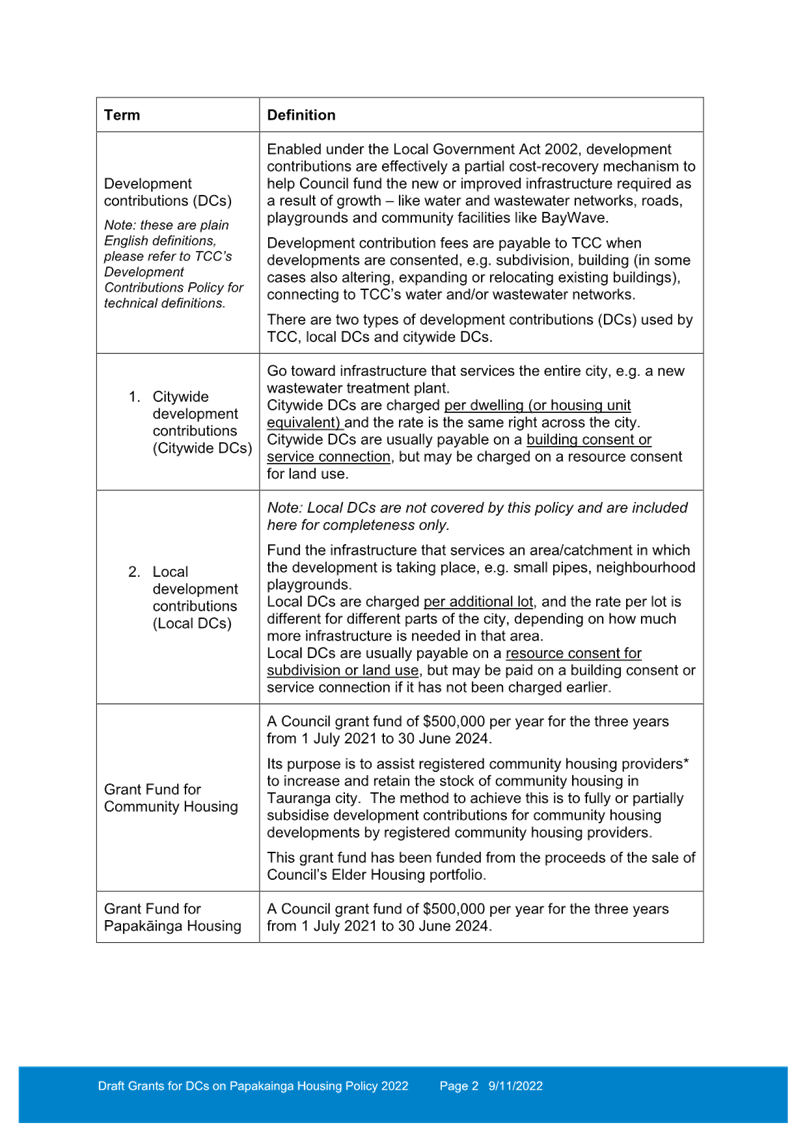
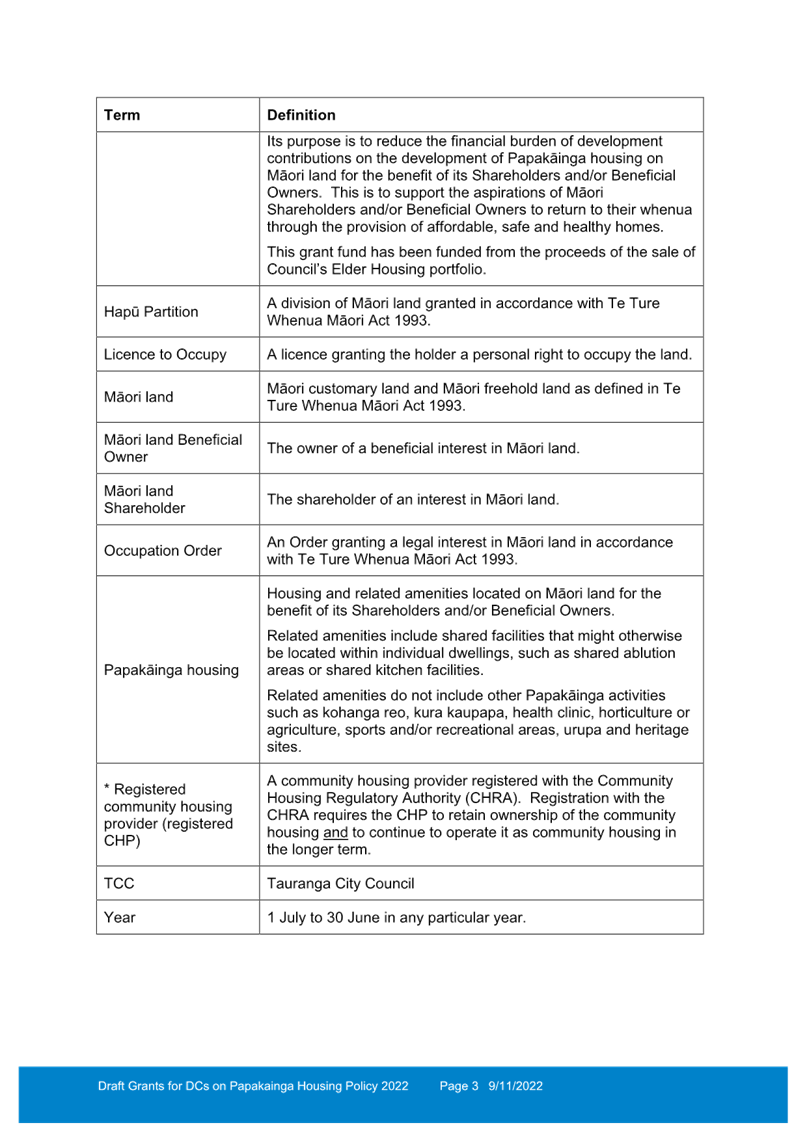
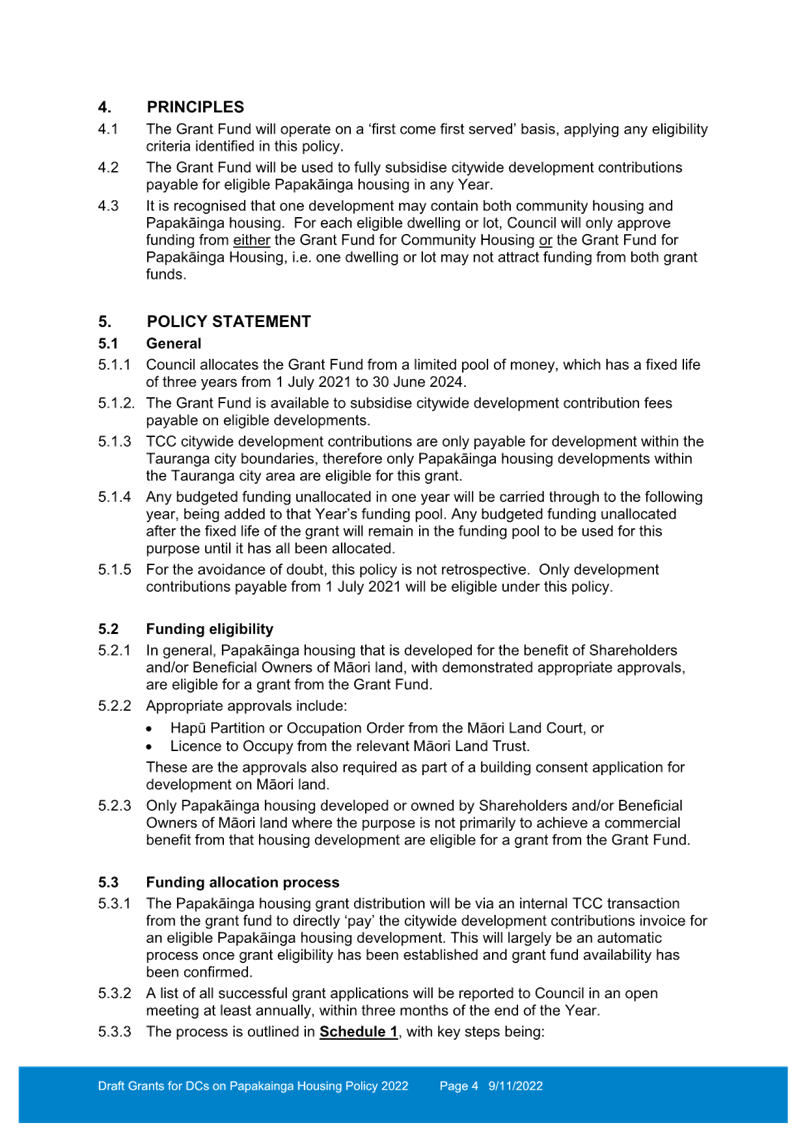
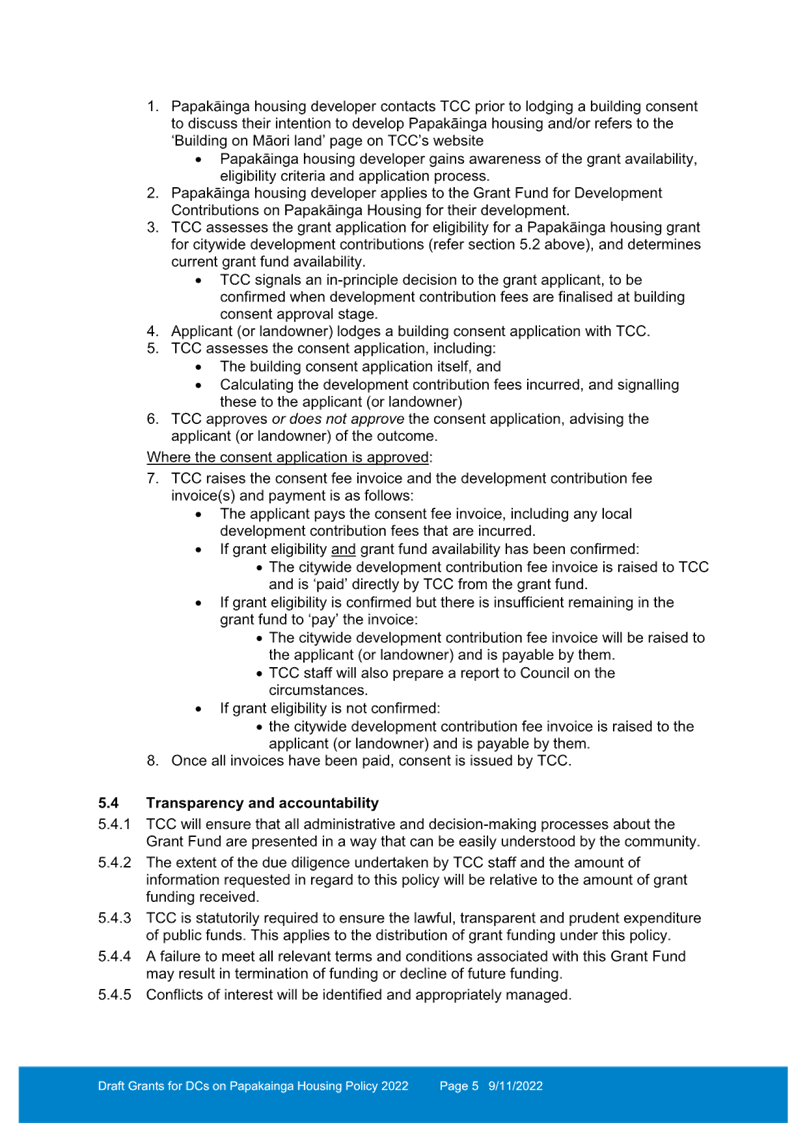
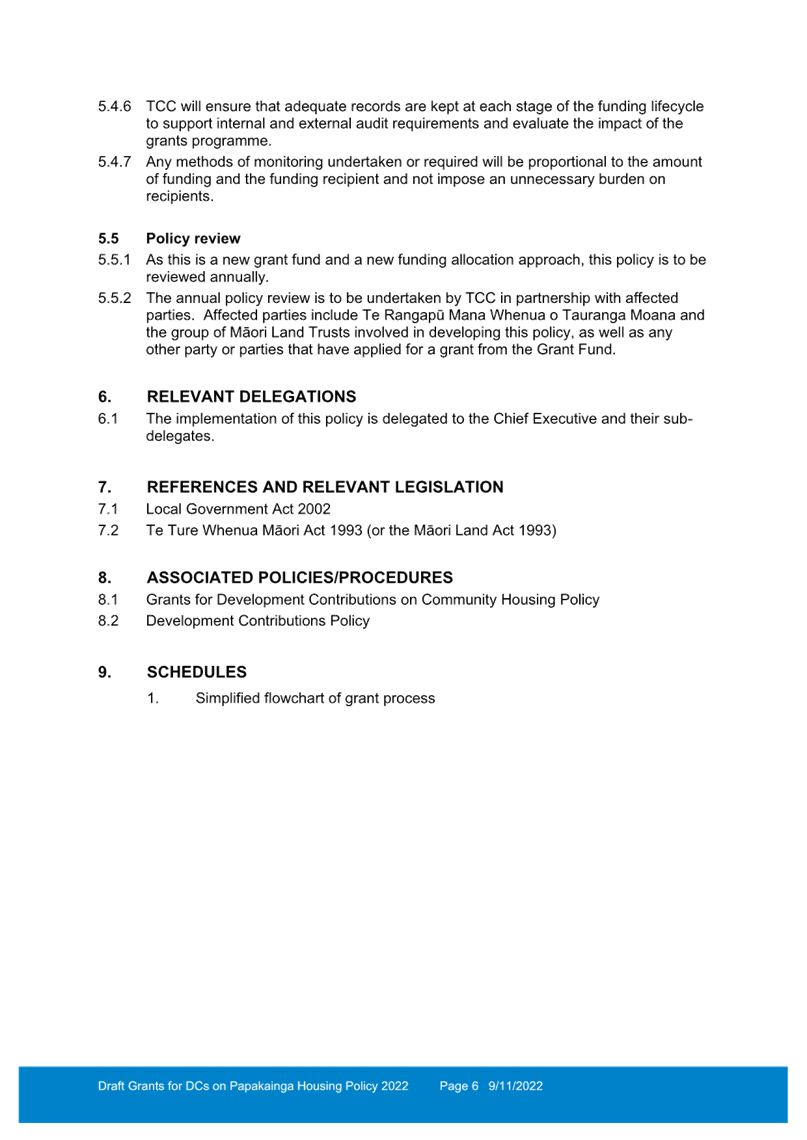
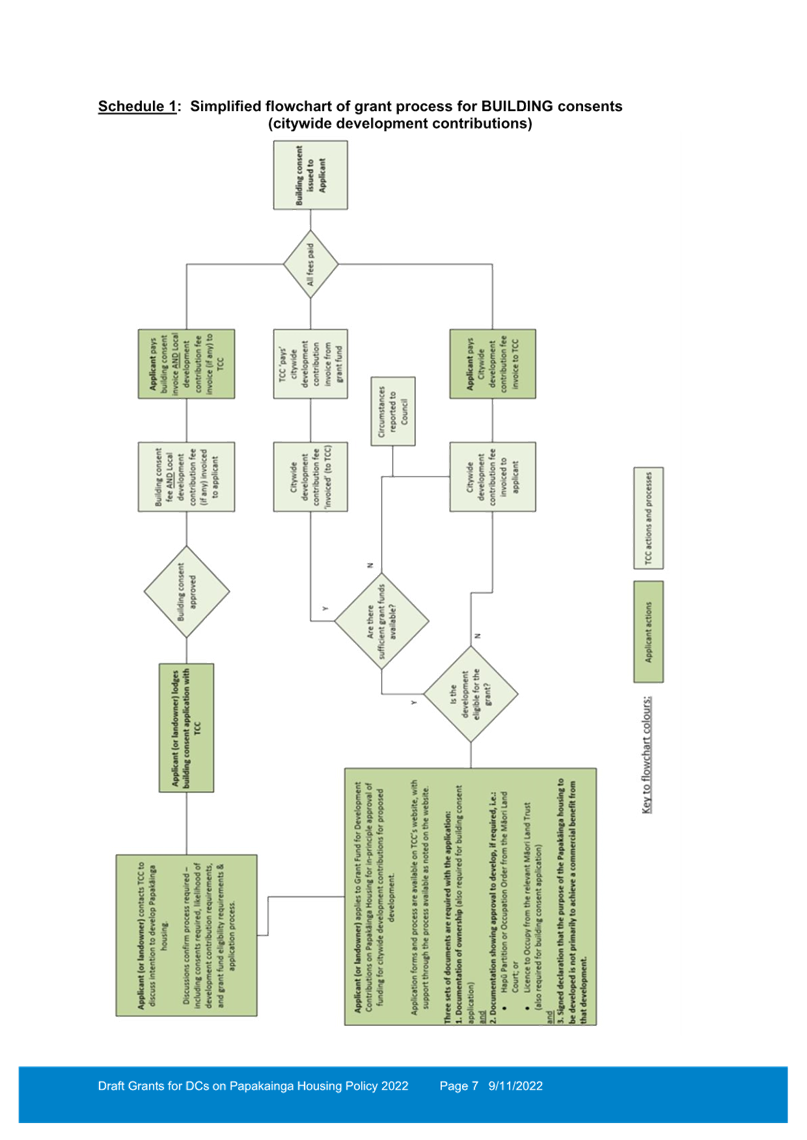
|
Strategy,
Finance and Risk Committee meeting Agenda
|
14
November 2022
|
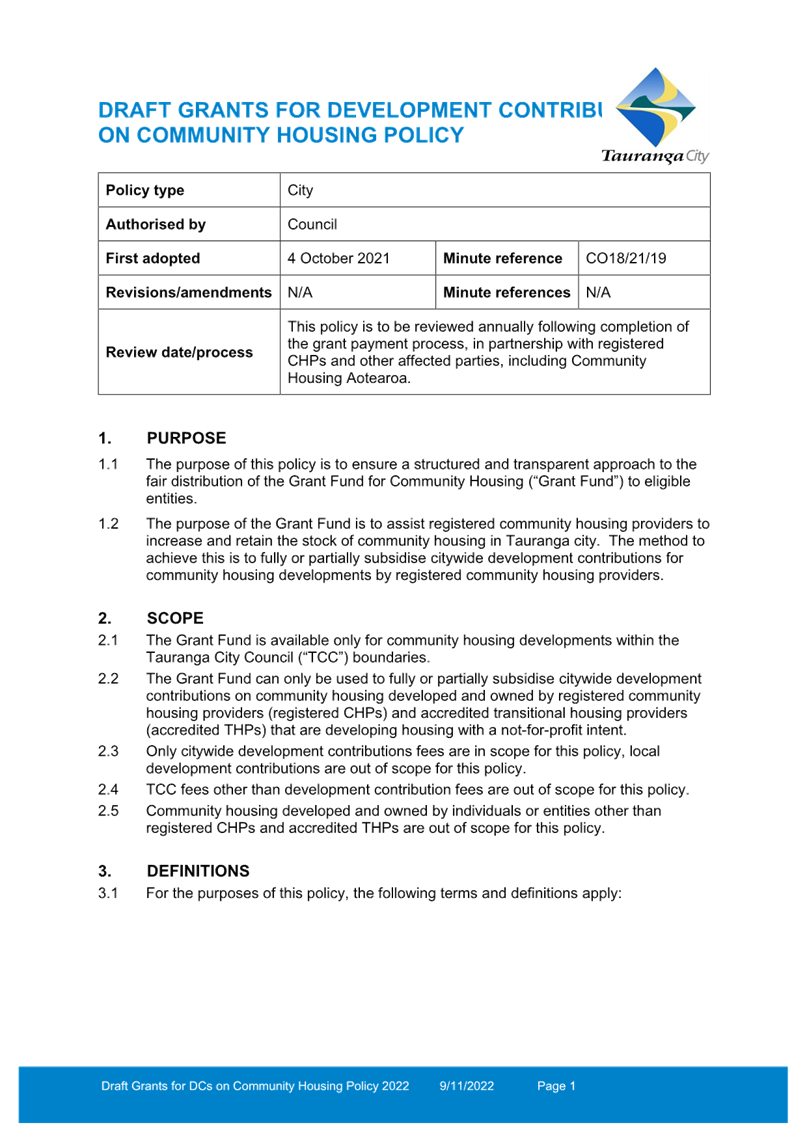

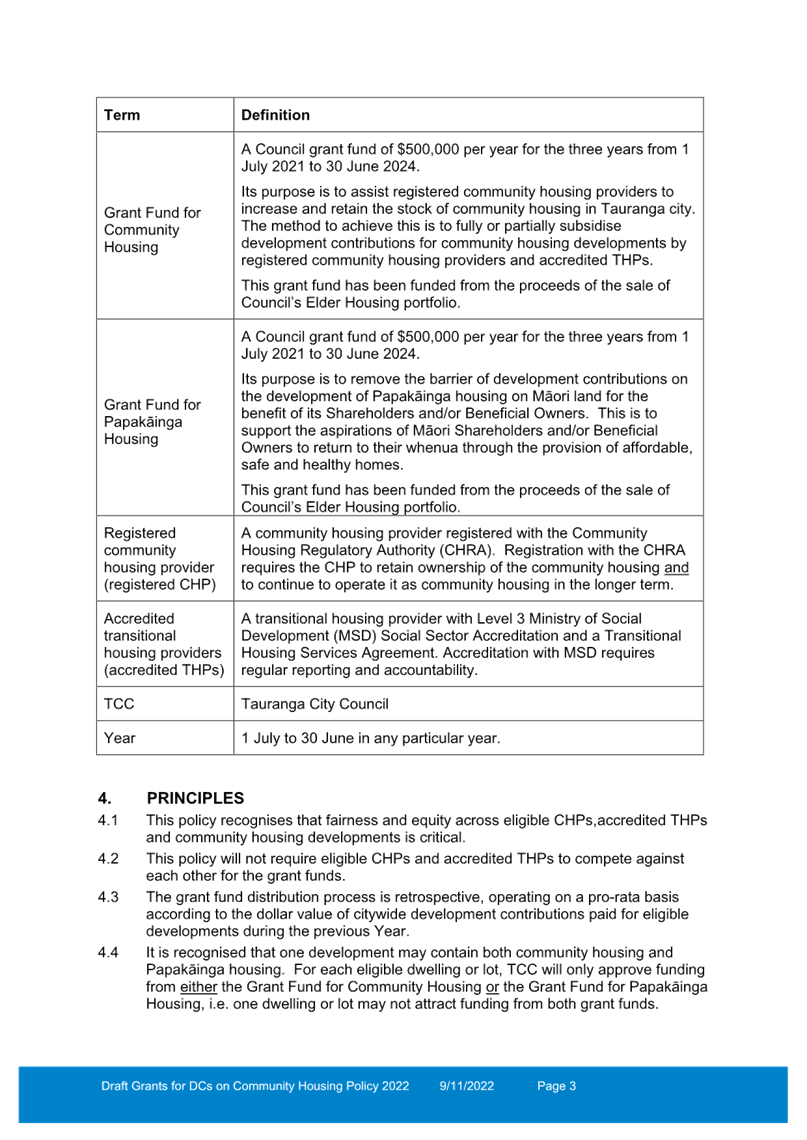
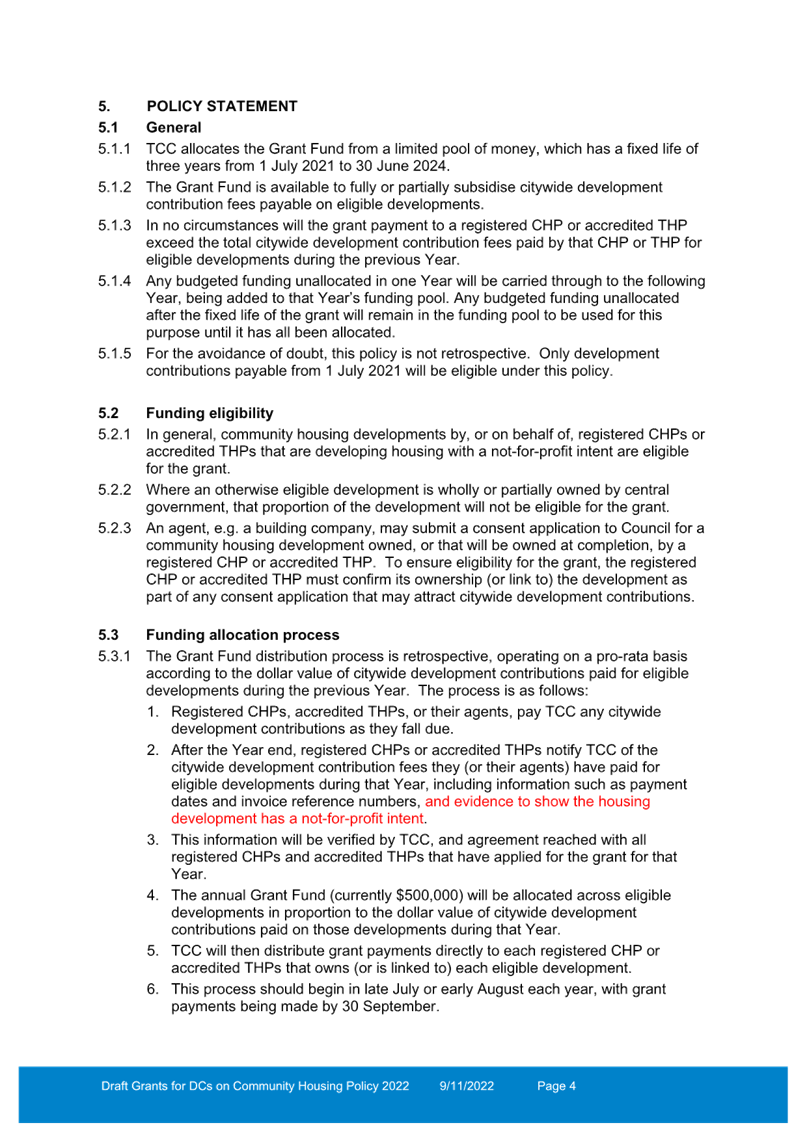
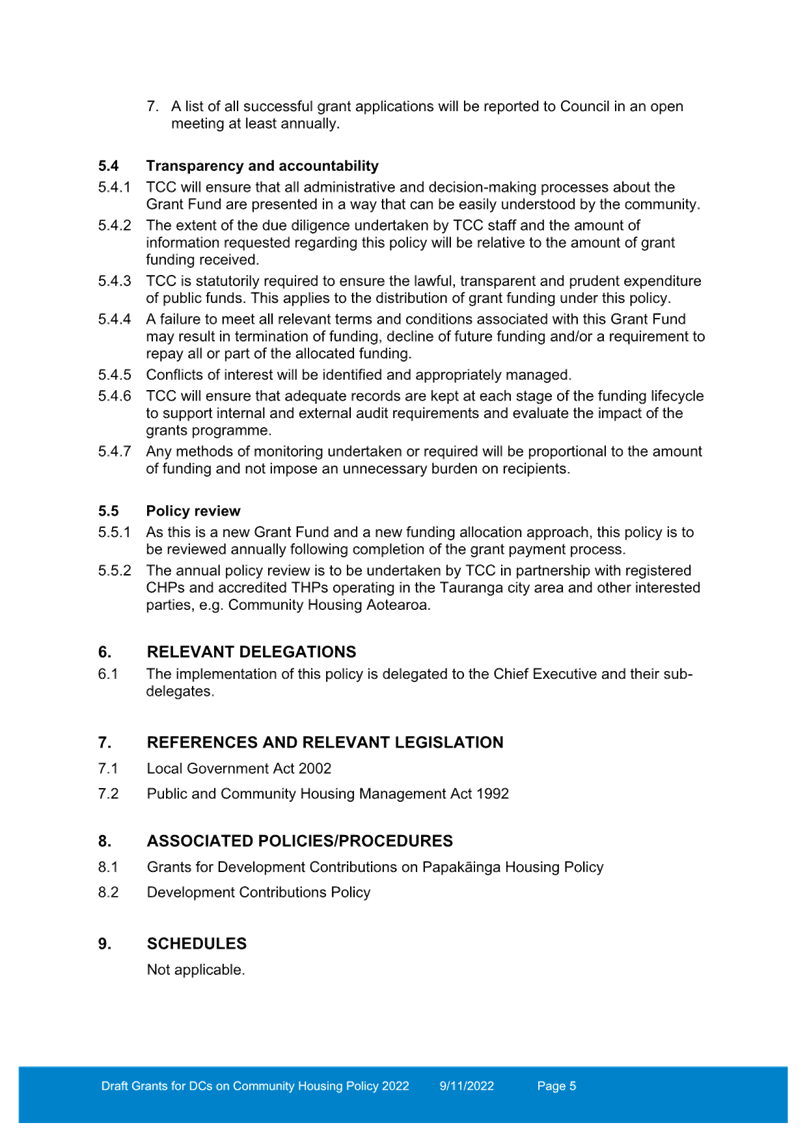
|
Strategy,
Finance and Risk Committee meeting Agenda
|
14
November 2022
|
9.10 Tauranga's
Community Carbon Footprint
File
Number: A14070029
Author: Jeremy
Boase, Manager: Strategy and Corporate Planning
Authoriser: Christine
Jones, General Manager: Strategy, Growth & Governance
Purpose of the Report
1. To provide the updated
Tauranga community carbon footprint report to the Committee.
|
Recommendations
That the Strategy,
Finance and Risk Committee:
(a) Receives the report
"Tauranga's Community Carbon Footprint".
|
Background
2. In late September 2022,
the Bay of Plenty Regional Council (“BoPRC”) released to this
council a report prepared for them by AECOM titled ‘Tauranga Community
Carbon Footprint’ (included as Attachment 1 to this report and
referred to hereinafter as “the 2022 AECOM report”). BoPRC
commissioned this work as part of the development of community carbon
footprints for each district within the region.
3. The 2022 AECOM report
assesses Tauranga’s community carbon footprint for the 2020/21 financial
year (the latest completed year for which data was available when the project
commenced). It is the first such study since a similar piece of work,
also conducted by AECOM, relating to the 2015/16 financial year and reported in
2017 (“the 2017 report”).
4. The 2022 AECOM report was
referenced and quoted from in a report to the Committee’s 3 October 2022
meeting titled ‘Transport Emissions Projection Tool’. The
finalised full report had not been received at the time that agenda closed and
therefore it was not included. Instead, it is provided to this meeting
for the Committee’s consideration.
Approach
5. The methodology used to
calculate emissions follows the Global Protocol for Community Scale Greenhouse
Gas Emissions Inventory v1.1 (“GPC”) published by the World
Resources Institute 2021. The GPC methodology represents international
best practice for city and regional level greenhouse gas emissions reporting.
6. The GPC approach includes
emissions from Stationary Energy, Transport, Waste, Industrial Processes and
Product Use, Agriculture, and Forestry activities.
7. All major assumptions made
during data collection and analysis are detailed within Appendix A of the 2022
AECOM report. Of particular note to Tauranga are the following:
(a) Marine
freight emissions are split evenly between origin and destination ports, and
then all emissions attributable to the Port of Tauranga are split across the
Bay of Plenty districts based on the population of those districts. This
means that no emissions are allocated to districts outside of the Bay of Plenty
for exports originating from those districts or imports being consumed in those
districts.
(b) Land
transport emissions are based on regional fuel sales figures apportioned to
each district based on vehicle kilometres travelled (“VKT”) figures
provided by Waka Kotahi NZTA. This approach is not as granular as figures
used within the western Bay of Plenty’s sub-regional Transport Model
which informed the Transport Emissions Projection Tool. Work is underway
to understand the implications of the different methodologies on future VKT
reduction and emissions reduction planning.
(c) Electricity
demand has been calculated using grid exit point (“GXP”)
information sourced from the Electricity Authority’s website and
apportioned between residential, commercial and industrial sectors based on
national data from the Ministry for the Environment.
8. A full review of the
assumptions in Appendix A to the 2022 AECOM report is recommended for the
interested reader.
Major
findings
9. The major findings of the
study are included in the Executive Summary of the 2022 AECOM report, the most
notable of which are:
(a) In
the 2020/21 reporting year (1st July 2020 to 30th June 2021), total gross
emissions in Tauranga were 1,345,115 tonnes of carbon dioxide equivalent
(“tCO2e”).
(b) Transport
(e.g. emissions from road and air travel) is the largest source of emissions in
Tauranga, representing 74% of total gross emissions, with petrol and diesel
consumption accounting for 36% of Tauranga’s total gross emissions and
marine freight accounting for 35% of Tauranga’s total gross
emissions.
(c) Stationary
Energy (e.g. consumption of electricity and natural gas) is the second highest
emitting sector in the region, producing 19% of total gross emissions.
Electricity consumption accounts for 10% of Tauranga’s total gross
emissions.
(d) Between
2015/16 and 2020/21, total gross emissions in Tauranga increased from 1,096,155
tCO2e to 1,345,115 tCO2e, an increase of 23%.
(e) Over
this time the population of the district increased by 22%, with per capita
gross emissions in Tauranga remaining stable with a slight increase of 1%
between 2015/16 and 2020/21, from 8.7 to 8.8 tCO2e per person per
year.
10. The 2022 AECOM report summarises the
greenhouse gas emissions under the six GPC categories as follows:
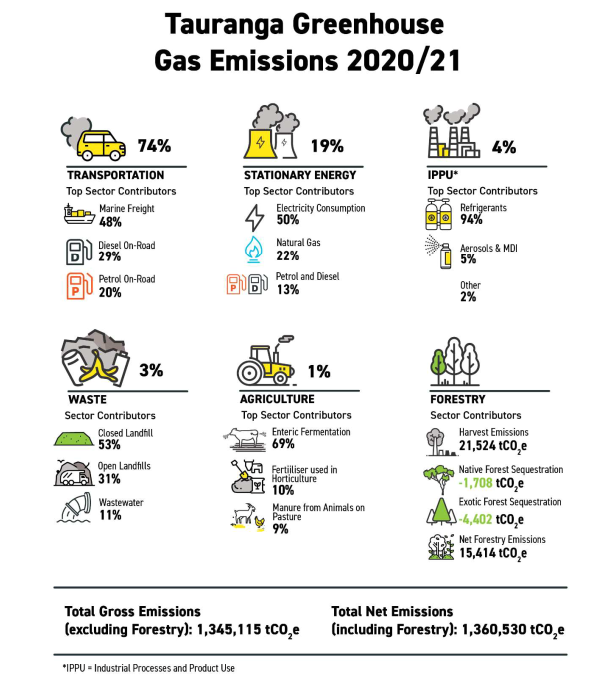
11. Section 3 of the 2022 AECOM report
provides further detail on each category and the sub-categories within.
Changes
since 2015/16
12. The pattern of city-wide emissions is
broadly similar to that in 2015/16. However, the headline reports are
slightly different.
13. The 2017 report included data that
led to the oft-repeated statement that transport (and predominantly land
transport) constituted 60% of the city’s emissions. The 2022 AECOM
report shows that transportation contributes 74% of the city’s emissions,
split evenly between marine freight and road transport.
14. The reason for the difference is that
the 2017 report, undertaken using best practice methodology of the day, did not
include marine freight.
15. Removing marine freight from the 2022
AECOM report results in transportation contributing 59% of remaining total
emissions, very similar to the 60% in the 2017 report.
16. Similarly, retrospective inclusion of
marine freight into the 2015/16 figures results in all transportation
accounting for 68% of total emissions at that time which is broadly similar to
the 74% in the 2022 AECOM report (the difference being that marine emissions
have increased faster than other transport emissions for reasons set out in
section 4.1 of the 2022 AECOM report).
17. Category-by-category changes in
emissions in the five years between the two reports are set out in section 4 of
the 2022 AECOM report. A same-methodology update to the 2015/16 figures
in the 2017 report is included in section 7 of the 2022 AECOM report.
Strategic / Statutory Context
18. Council’s draft Environment
Strategy includes as one of five goals for Tauranga to be a low emissions and
climate resilient city. The document recognises that reducing emissions,
and particularly transport emissions, is a key element in achieving the above
goal.
19. Council is currently in the process
of preparing its first climate plan. The 2022 AECOM report has been
referred to that project and incorporated in the analysis currently
underway.
Significance
20. The Local Government Act 2002
requires an assessment of the significance of matters, issues, proposals and
decisions in this report against Council’s Significance and Engagement
Policy. Council acknowledges that in some instances a matter, issue,
proposal or decision may have a high degree of importance to individuals,
groups, or agencies affected by the report.
21. In making this assessment,
consideration has been given to the likely impact, and likely consequences for:
(a) the current
and future social, economic, environmental, or cultural well-being of the
district or region
(b) any persons who are likely to be
particularly affected by, or interested in, the matter.
(c) the capacity of the local authority to
perform its role, and the financial and other costs of doing so.
22. In accordance with the considerations
above, criteria and thresholds in the policy, it is considered that the matter
is of Tauranga’s community carbon footprint is of high significance, but
that the decision to receive this report is of low significance.
ENGAGEMENT
23. Taking into consideration the above
assessment, engagement on the decision to receive this report is not considered
necessary. Engagement with the community on the development of the
climate plan is underway and further community consultation is planned in 2023
prior to that plan being adopted.
Attachments
1. 2022-09-28
BOPRC Community Carbon Footprint 2022 Tauranga 220928 Final - A14155216 ⇩ 
|
Strategy,
Finance and Risk Committee meeting Agenda
|
14
November 2022
|


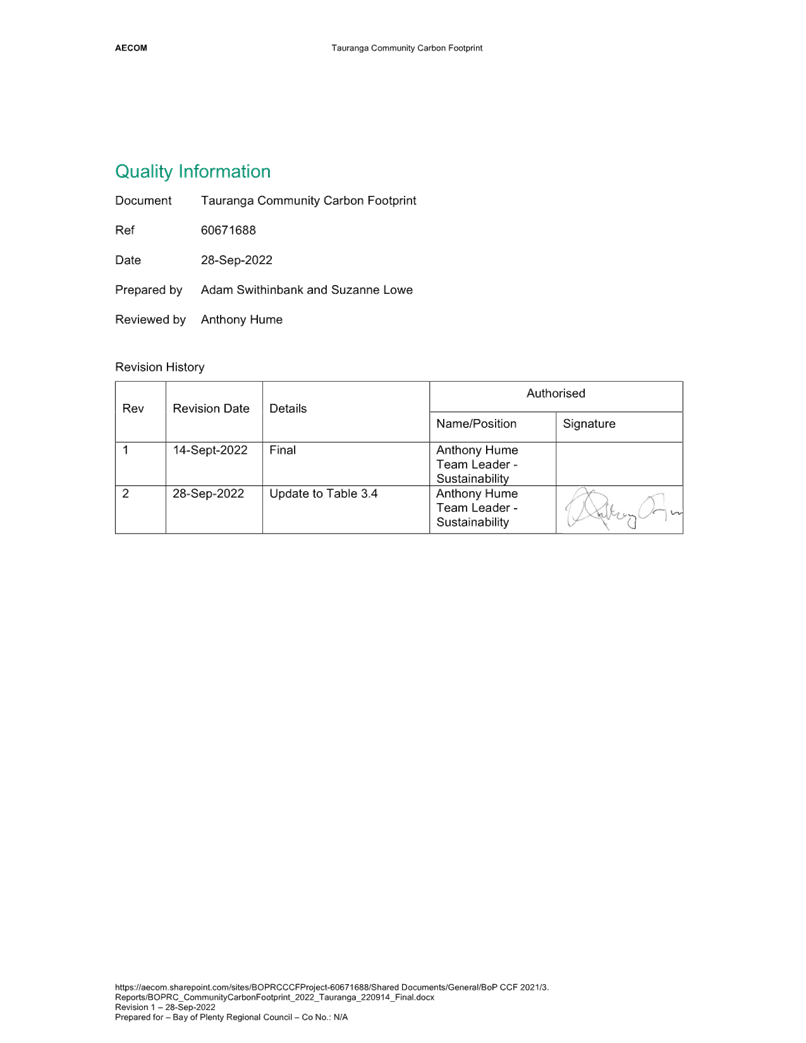
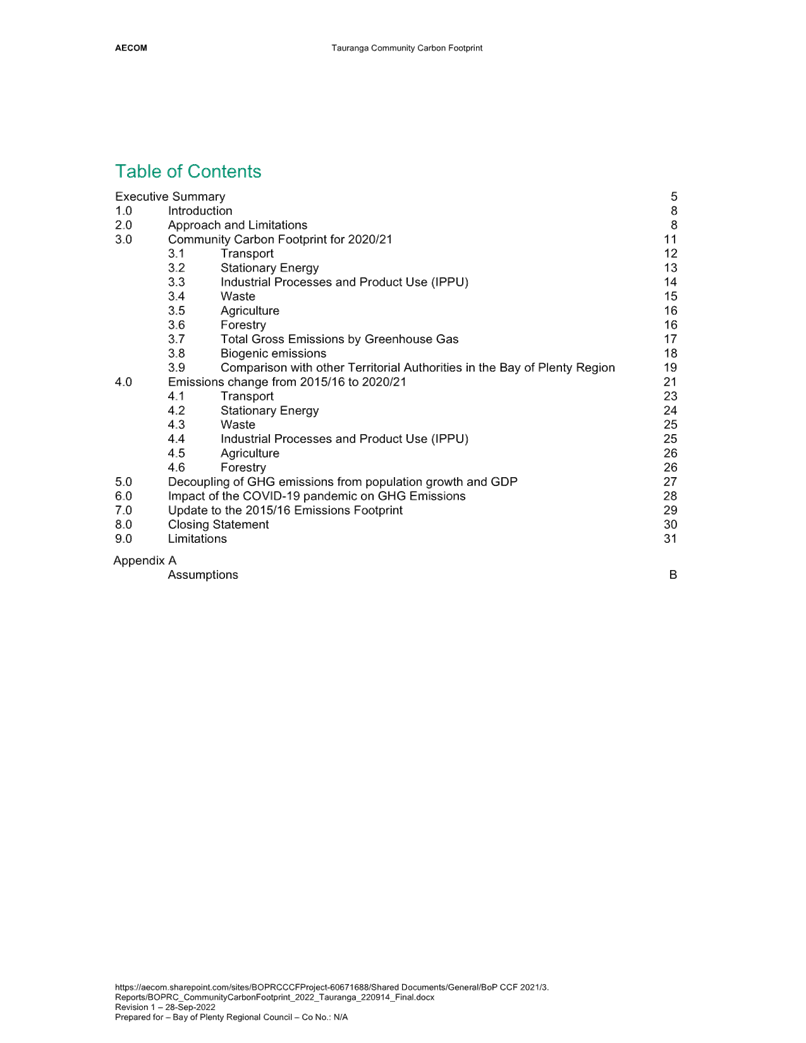
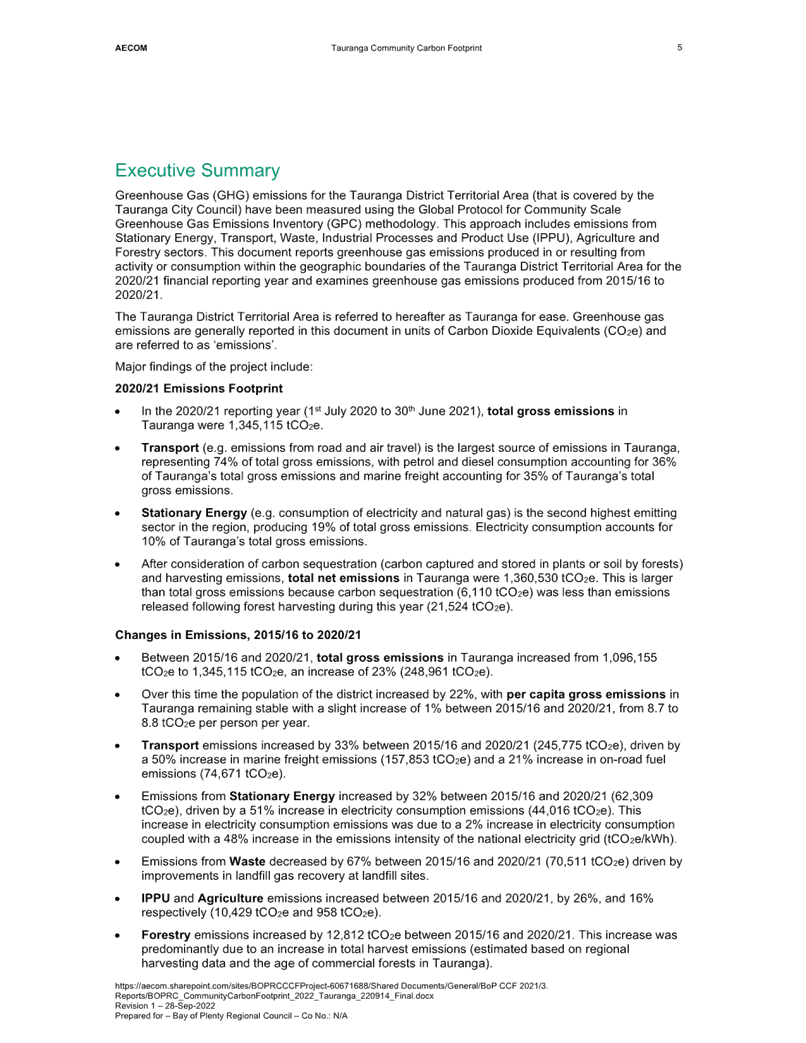
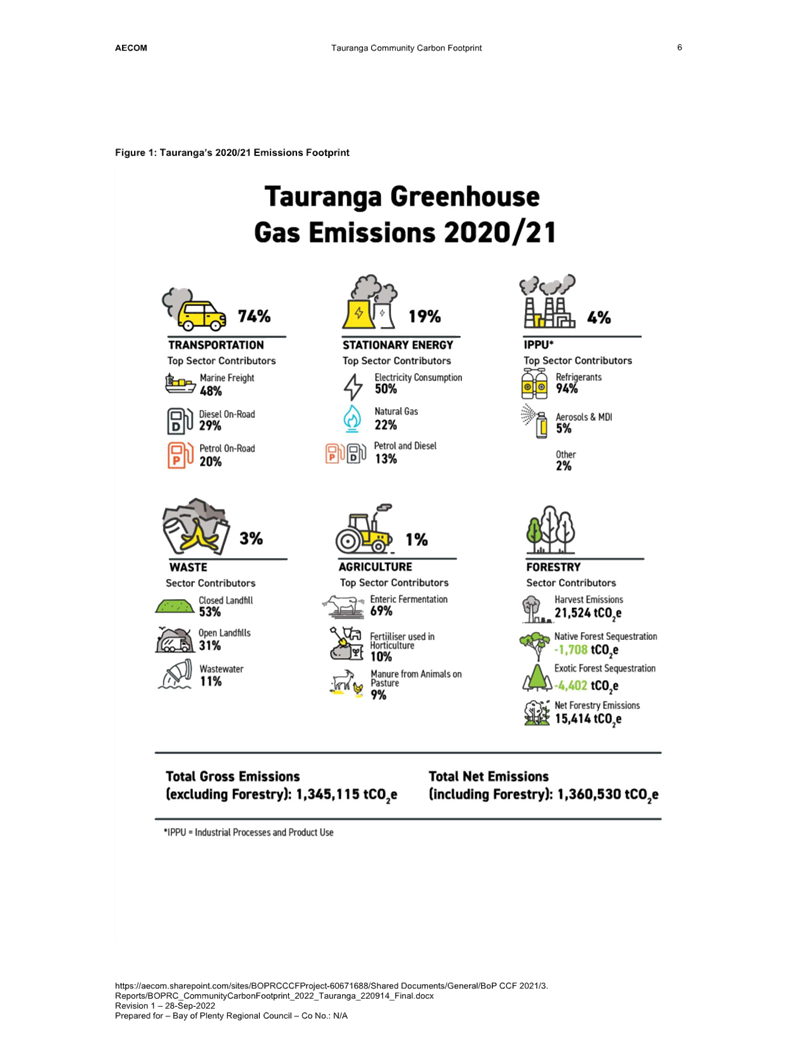

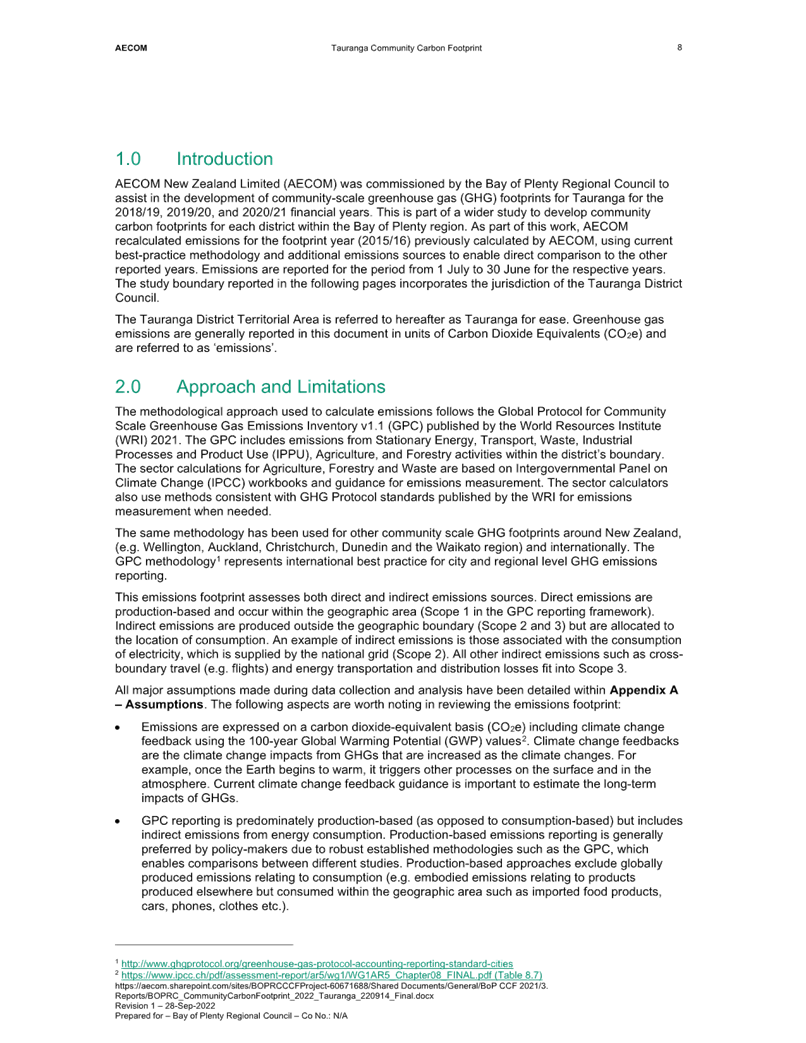
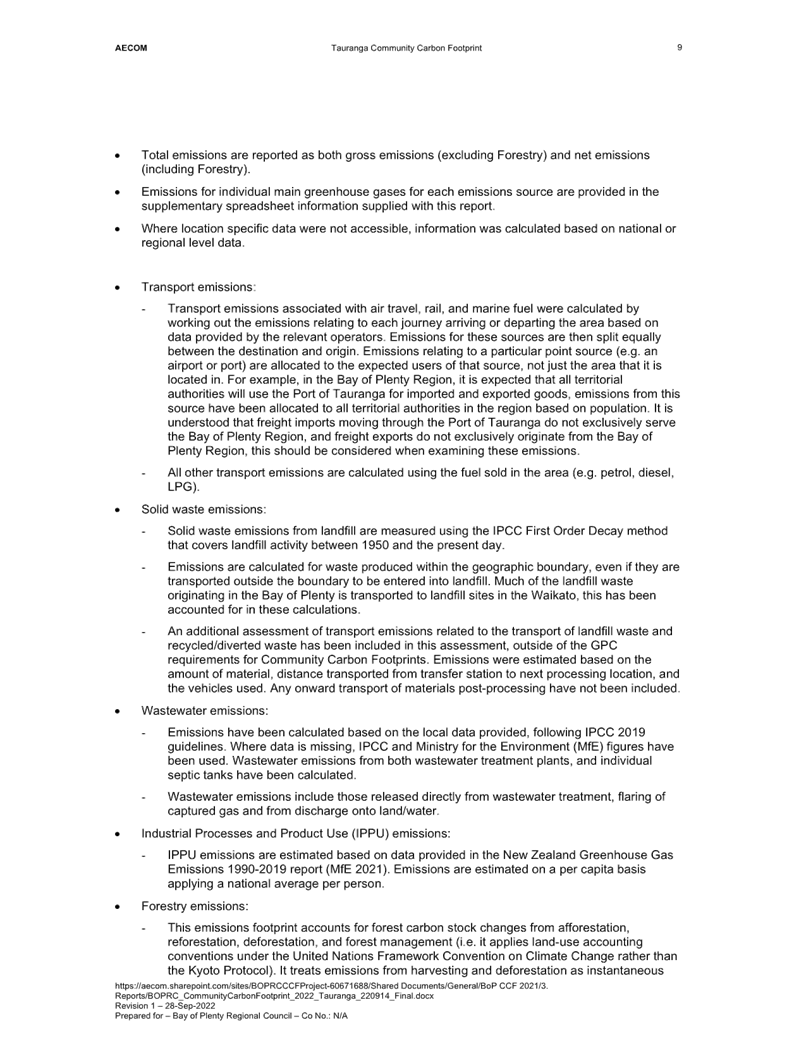
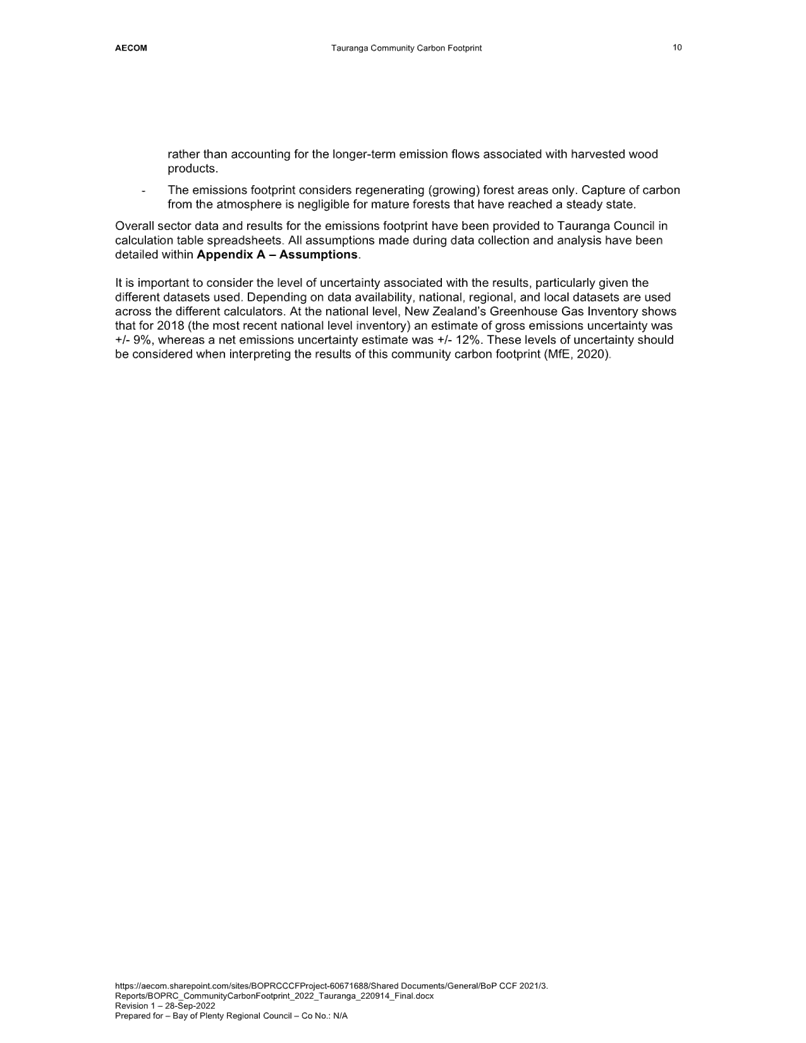
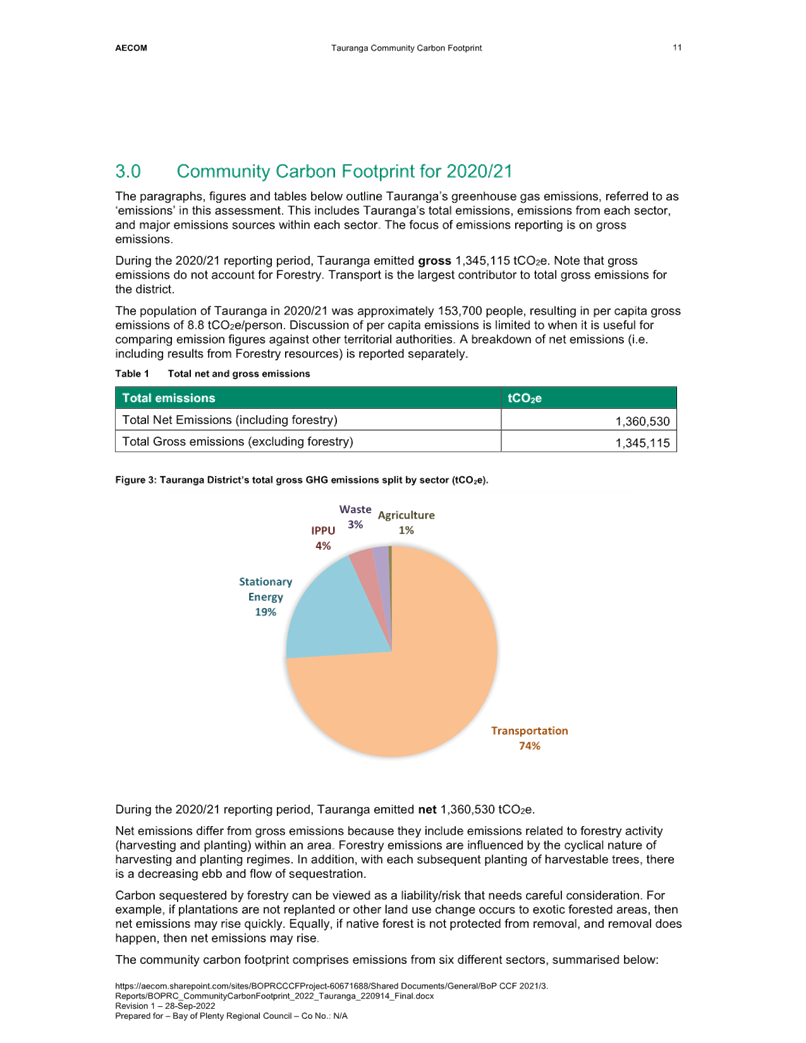
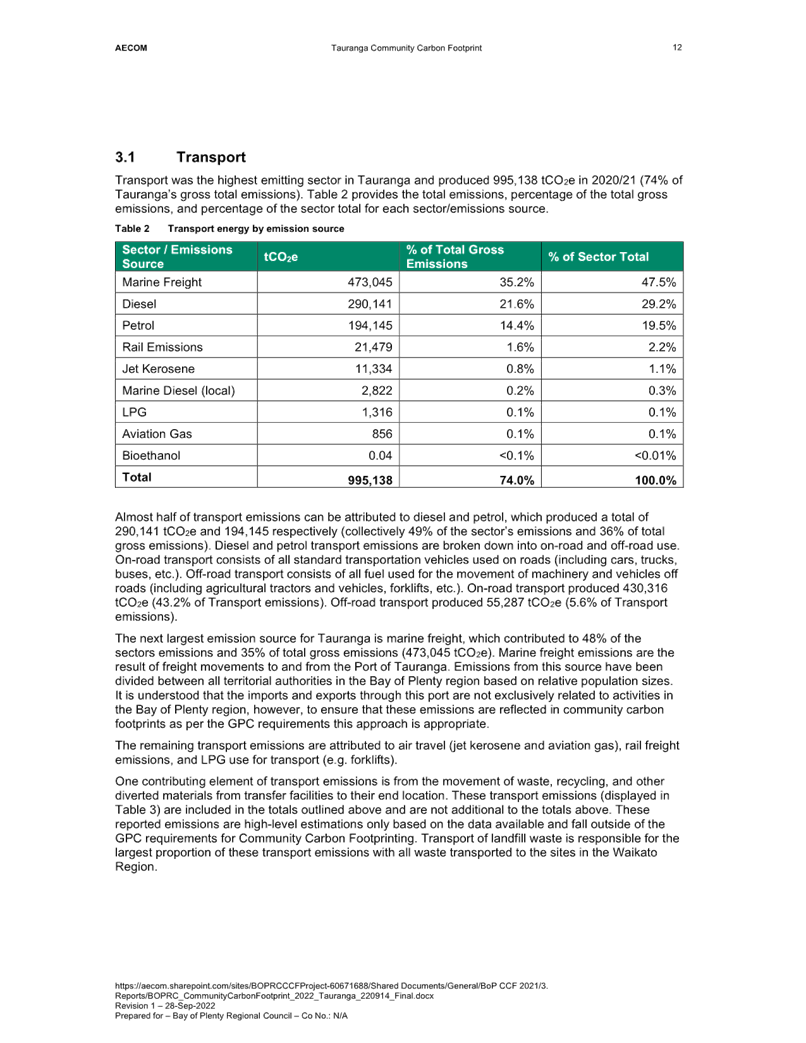

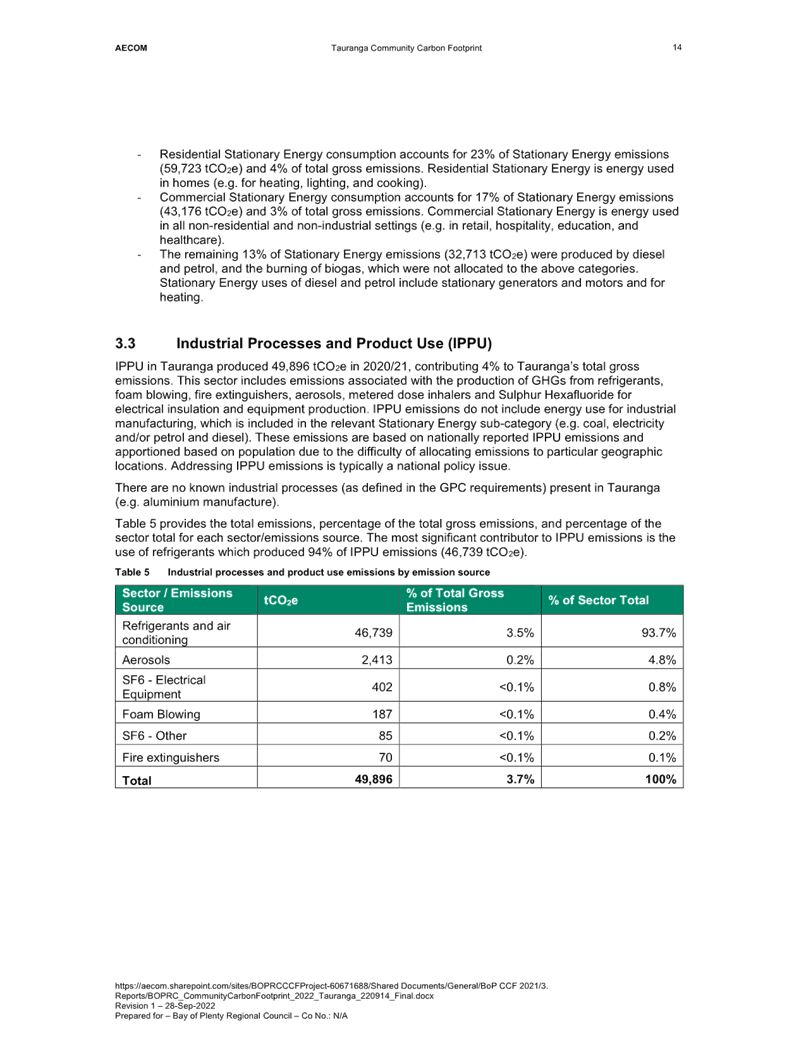

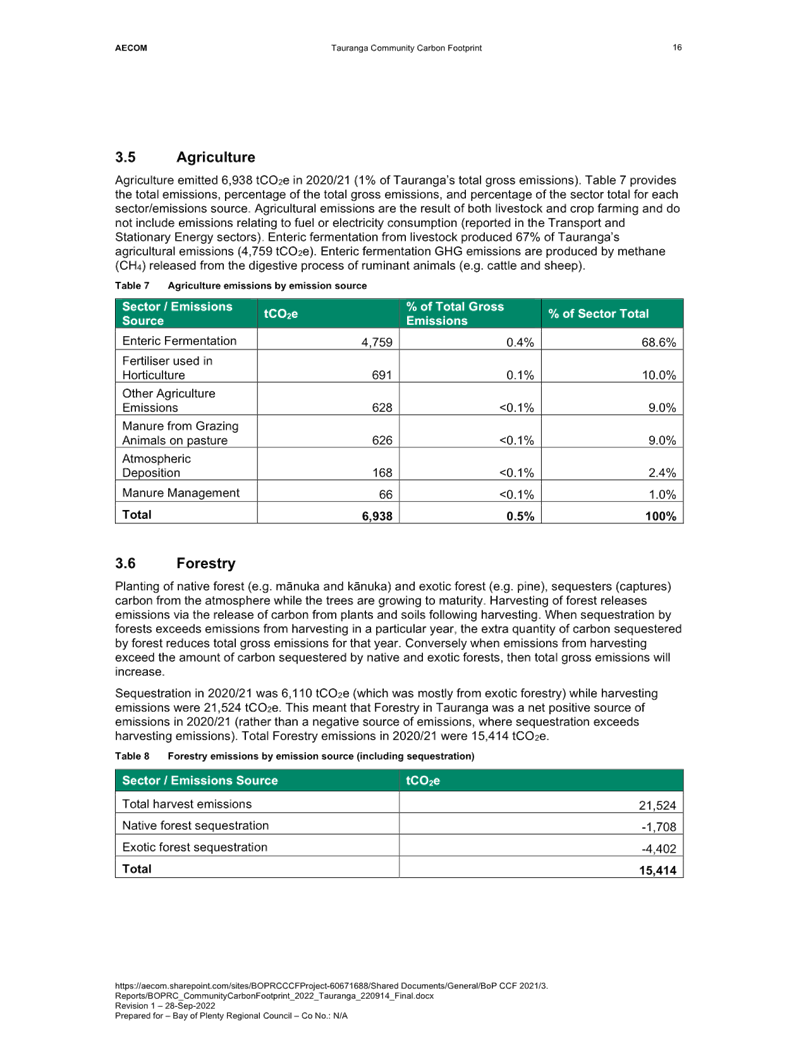
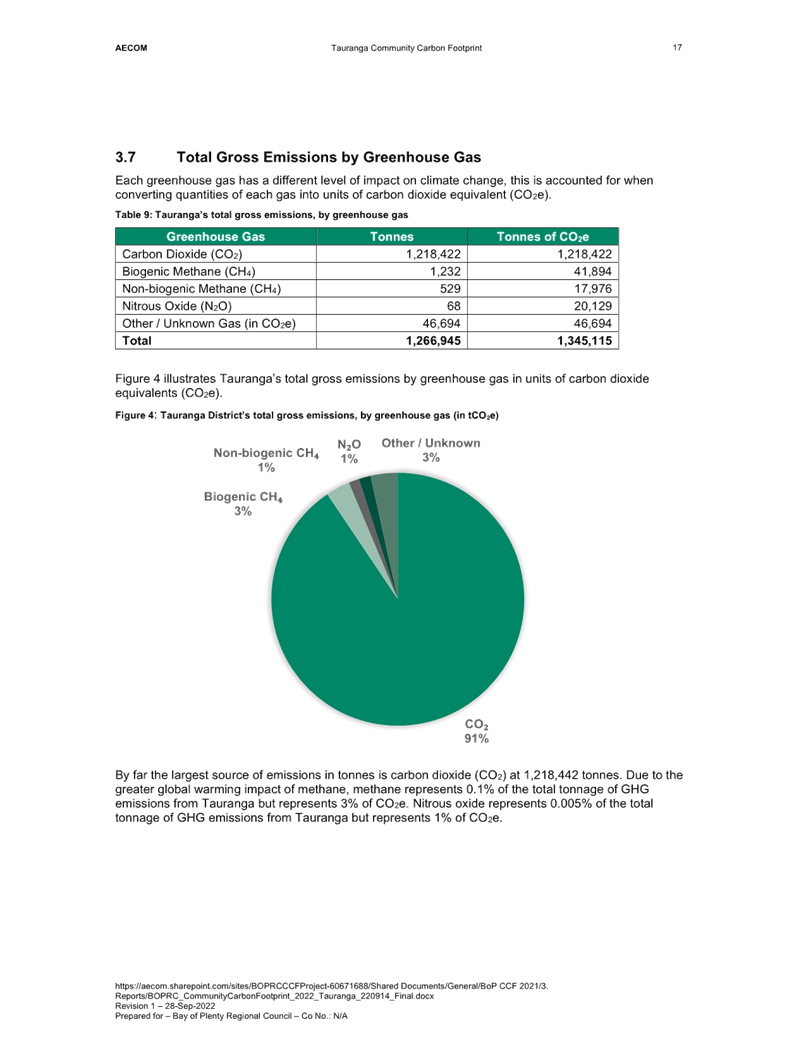
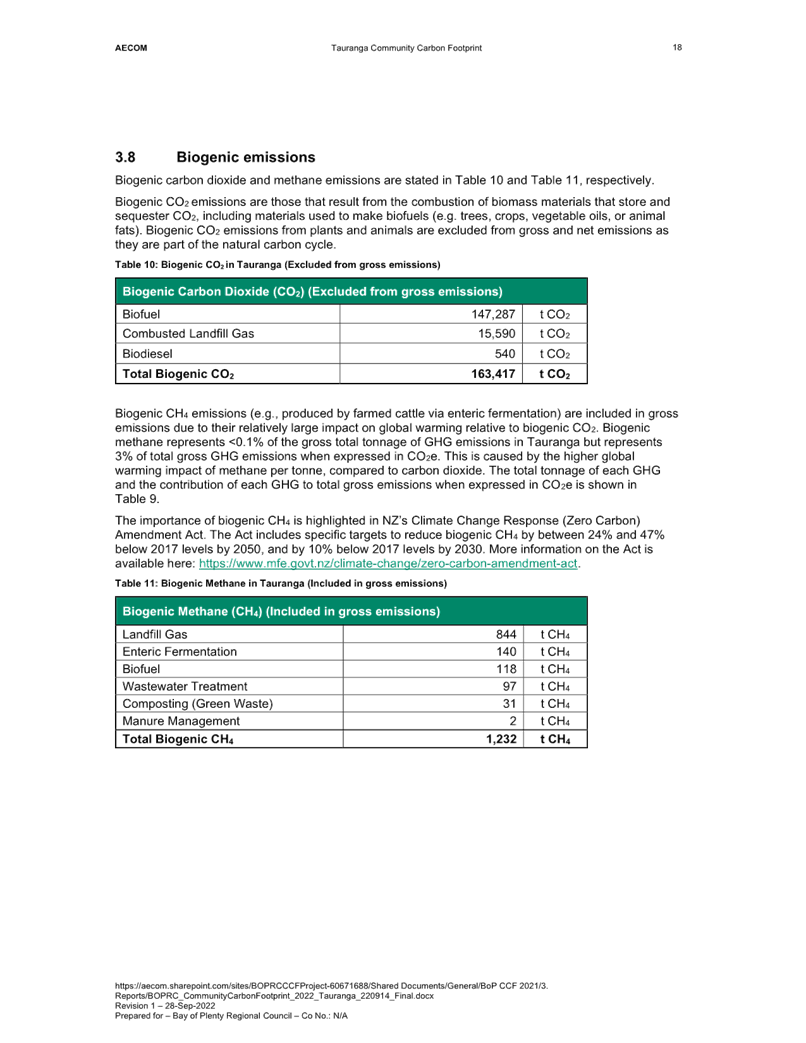
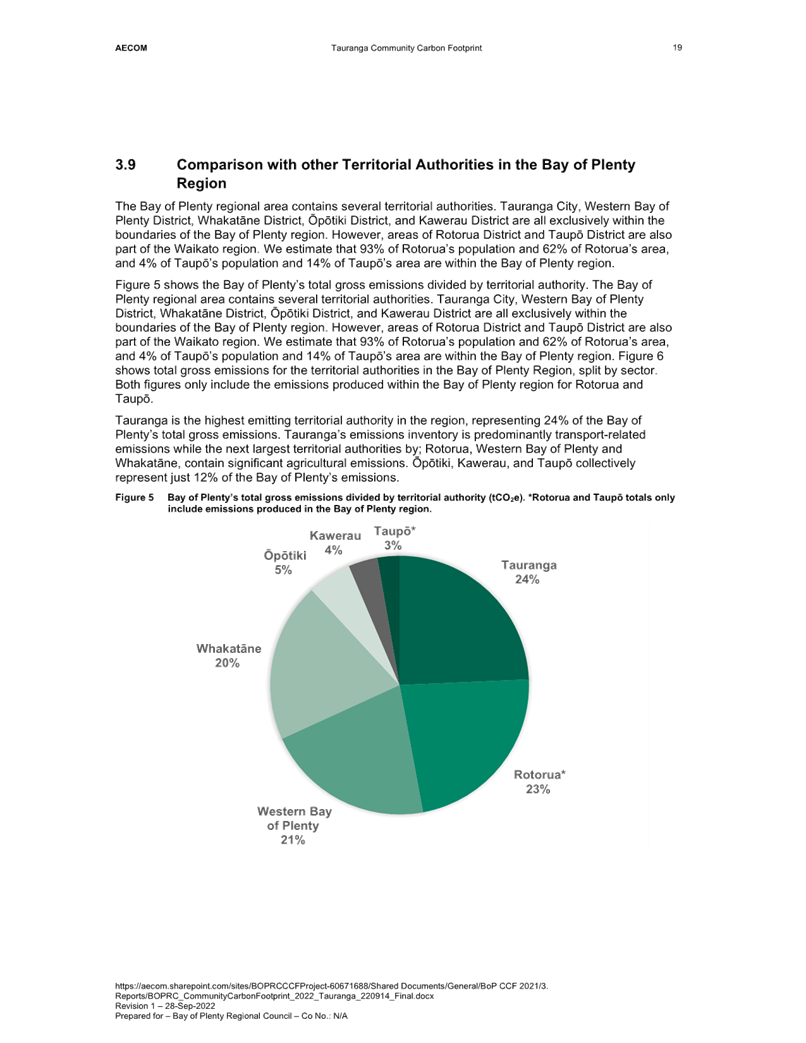
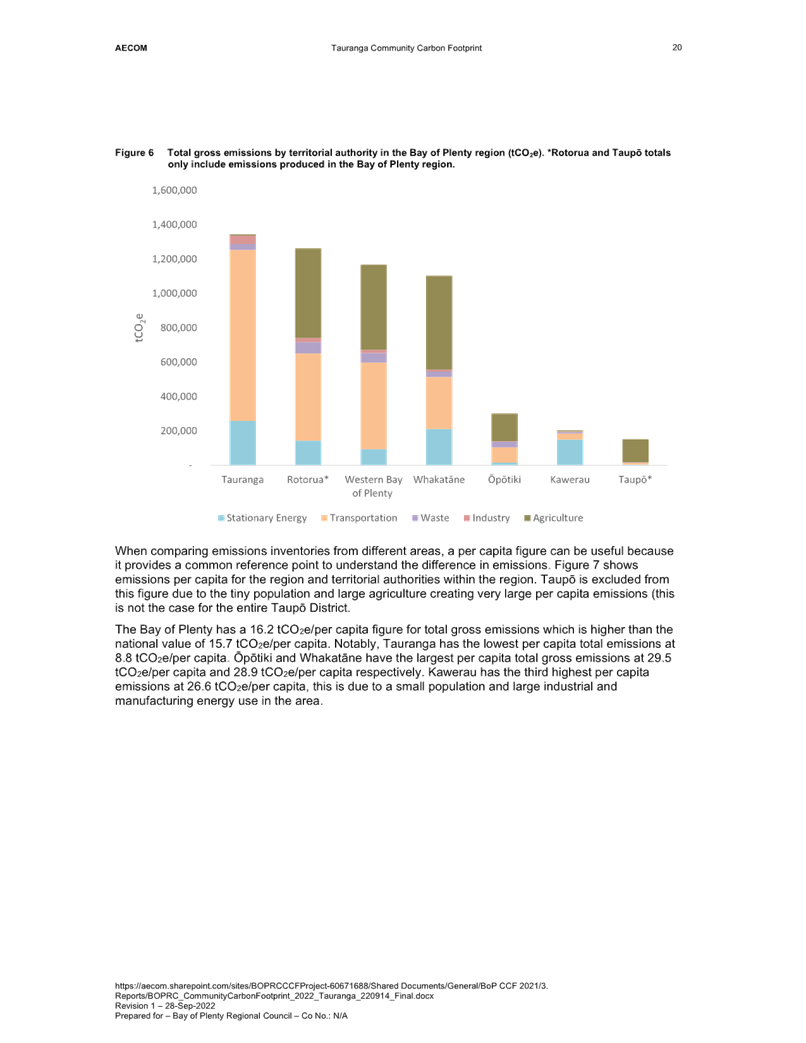
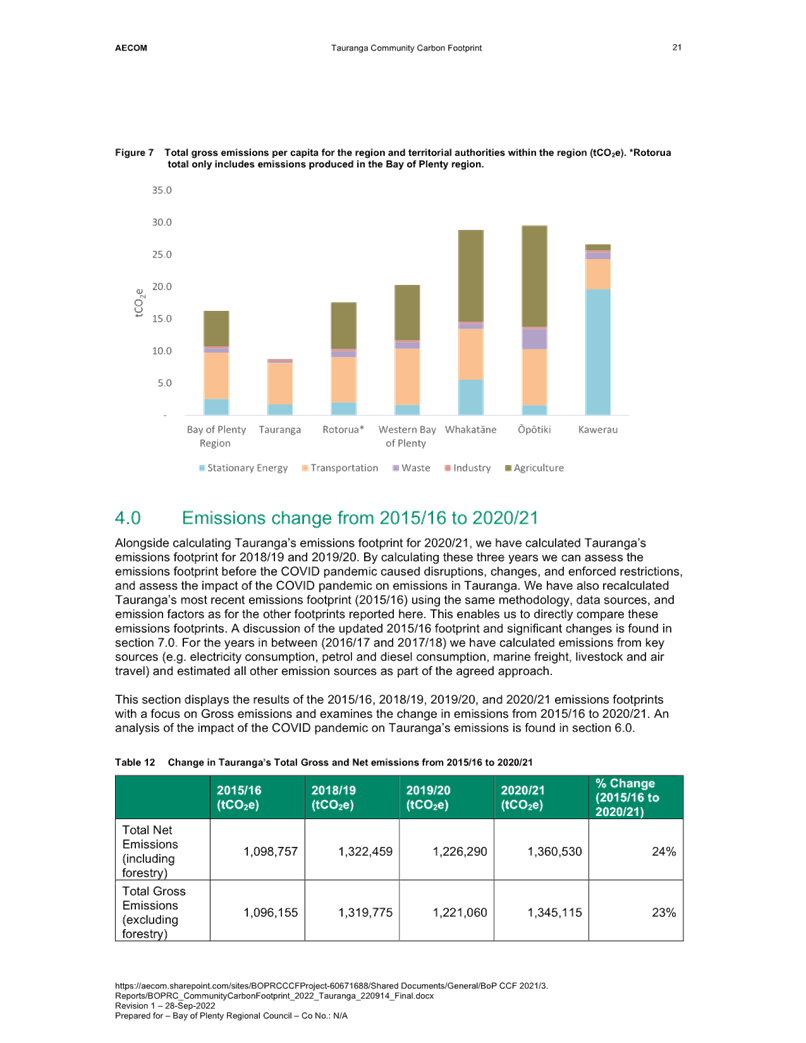

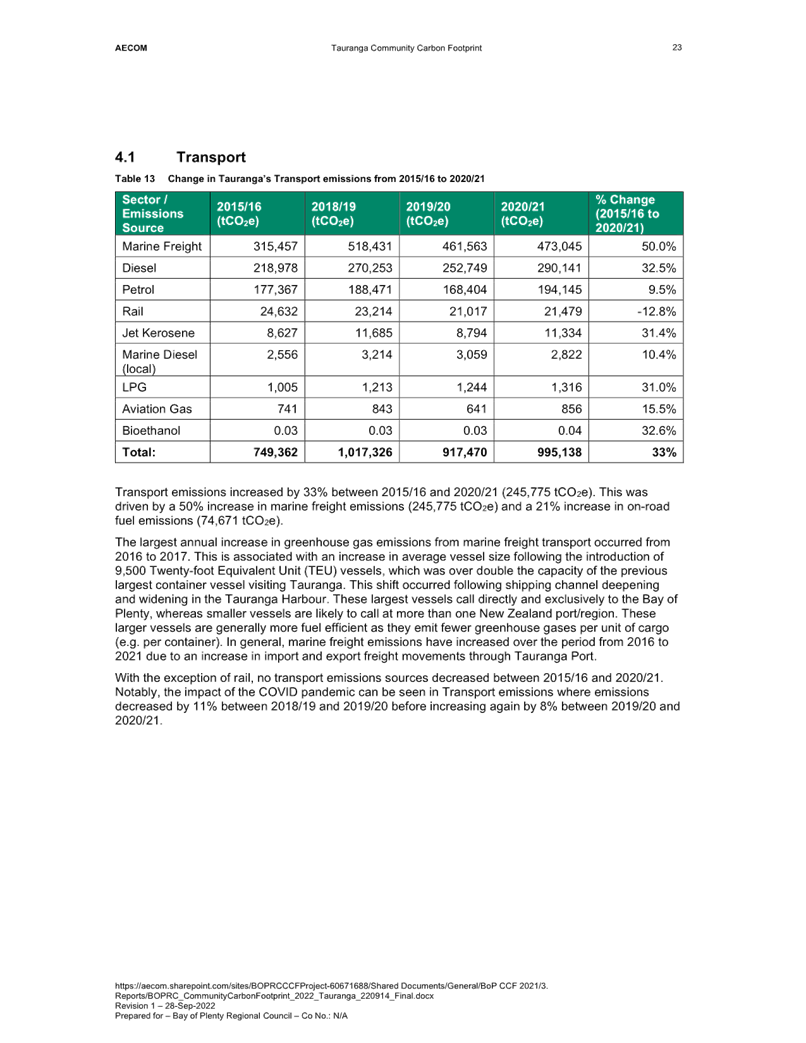
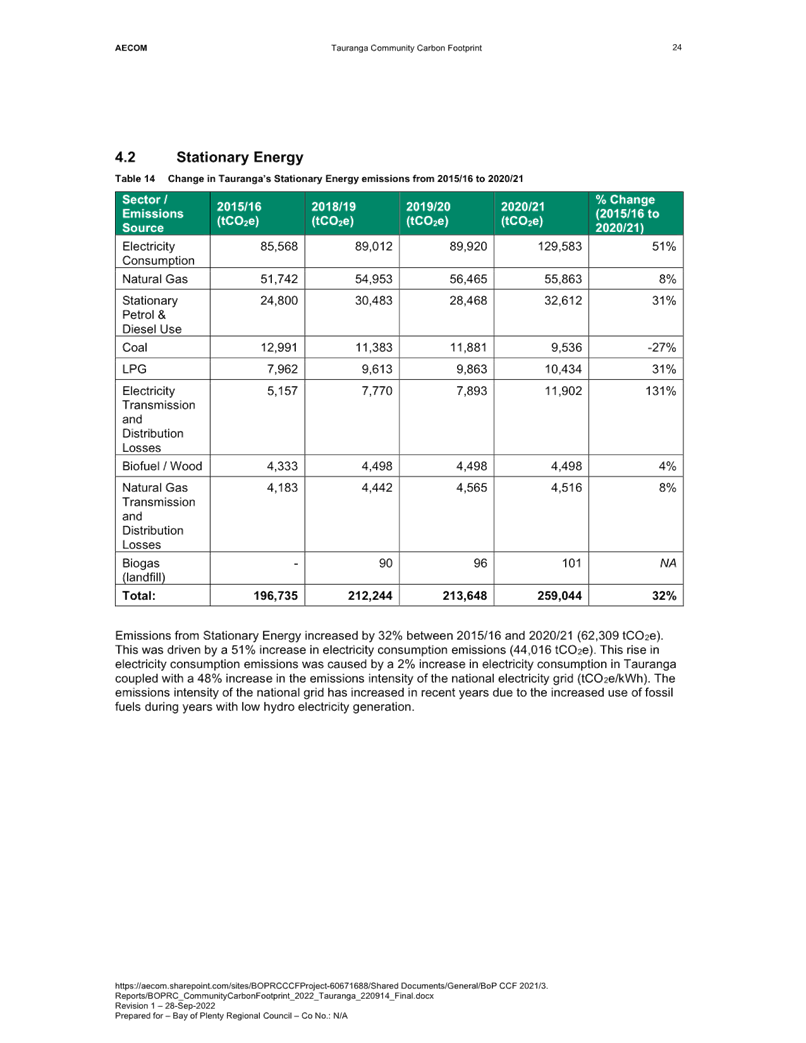
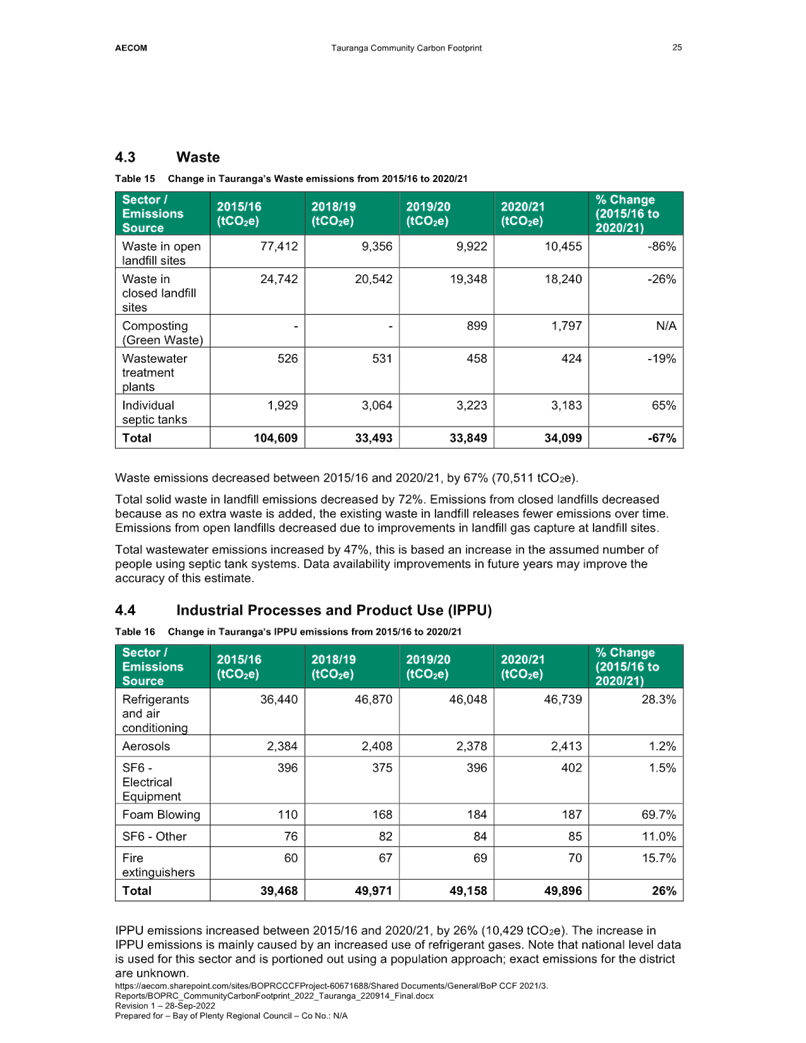
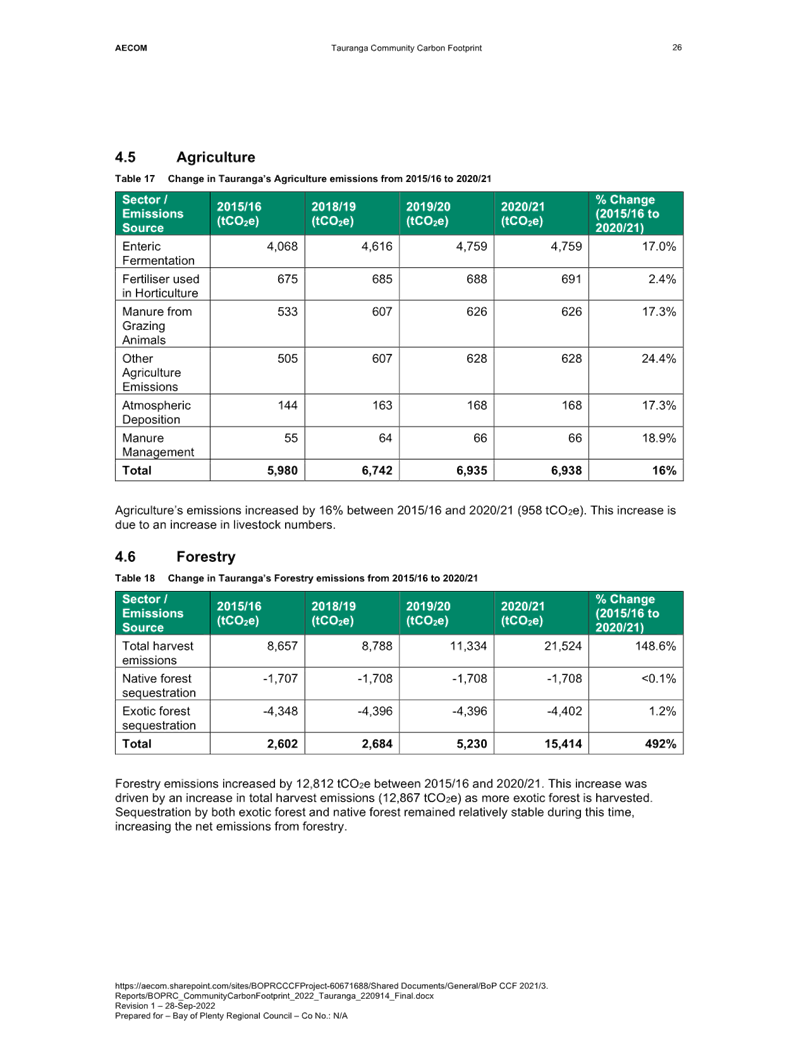
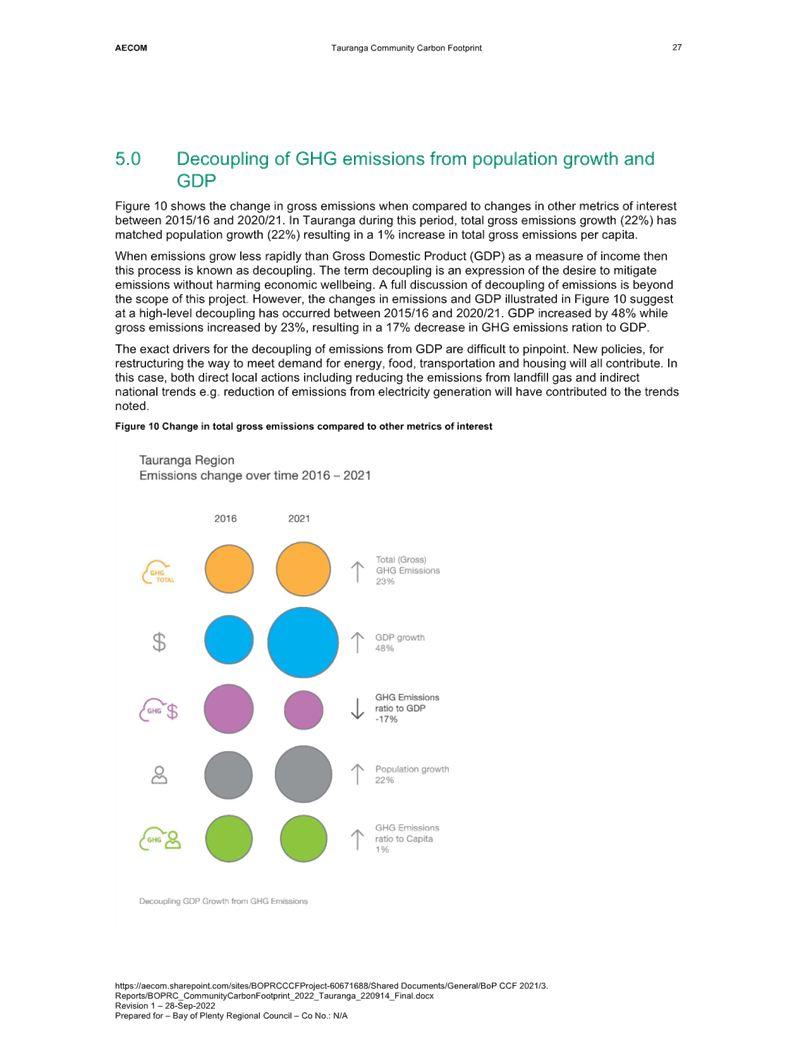
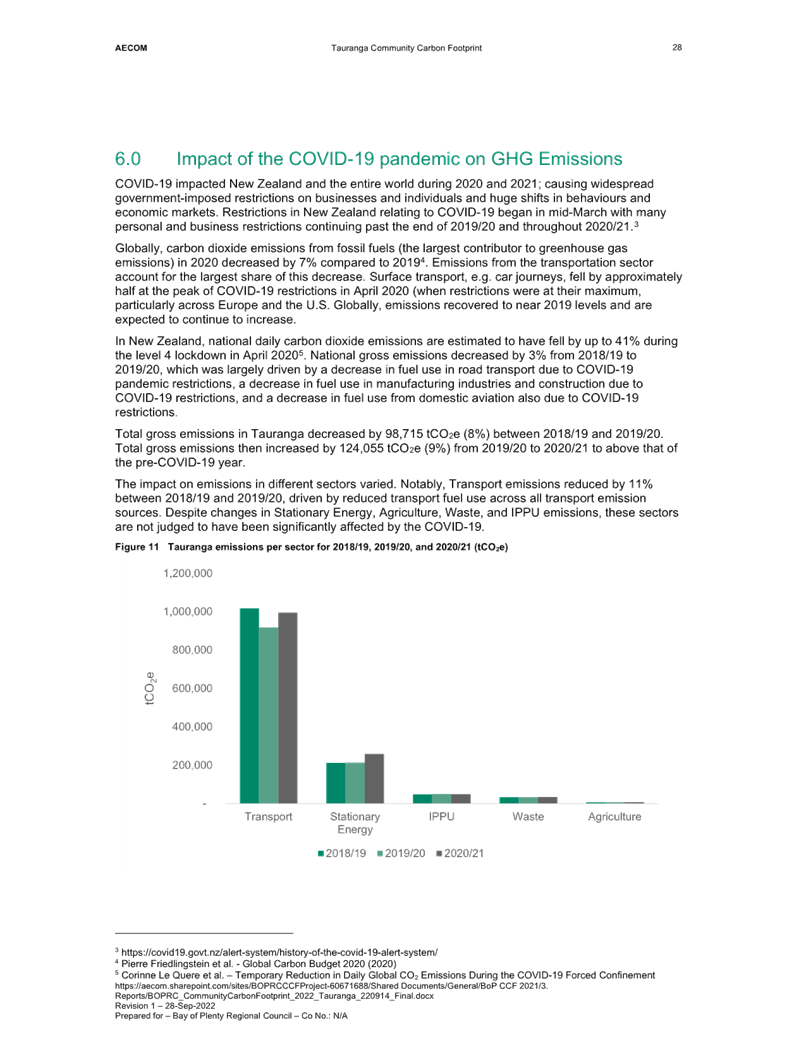
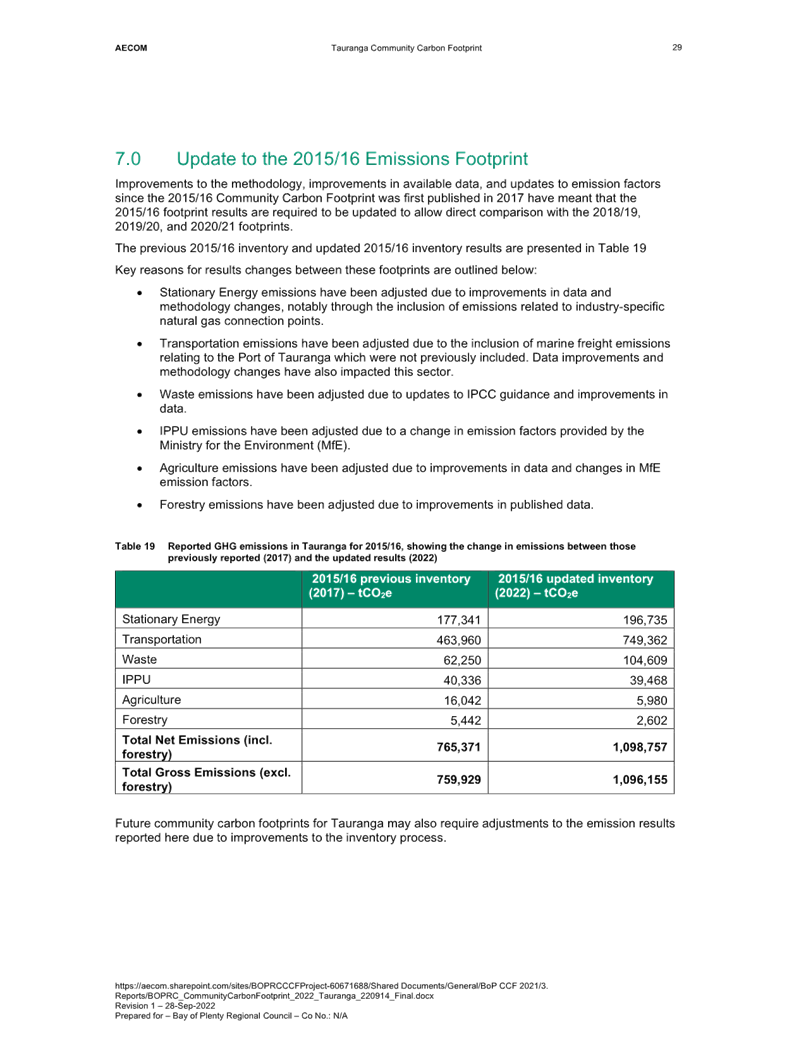

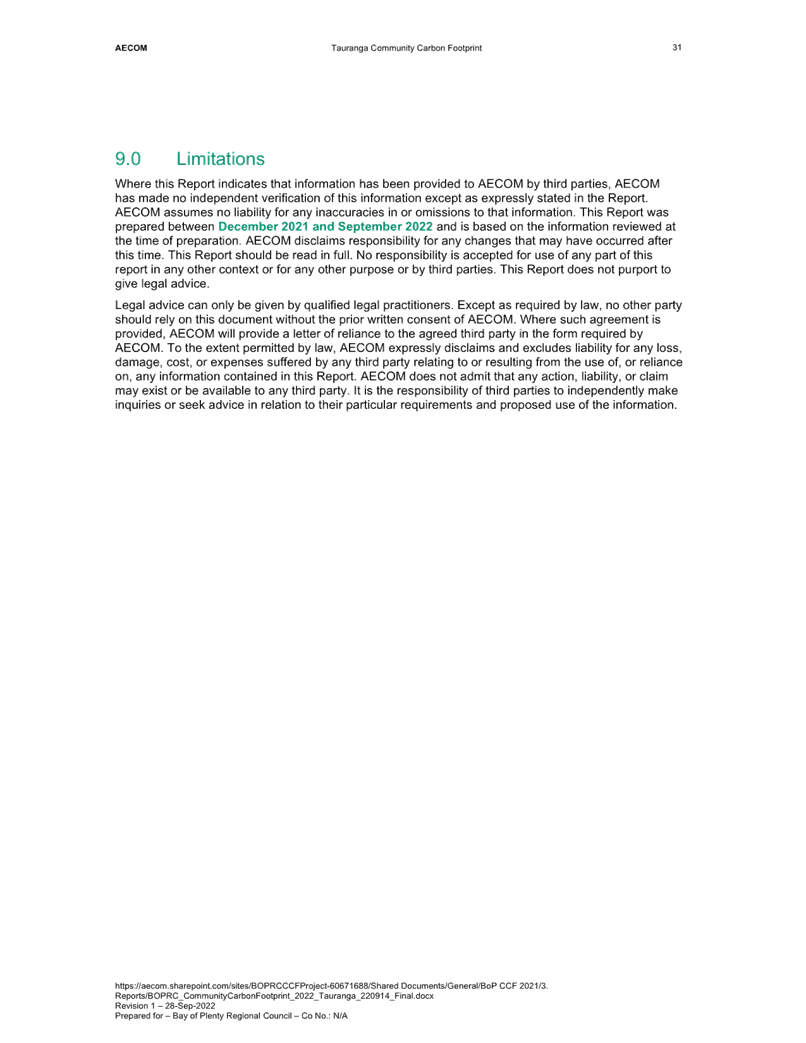
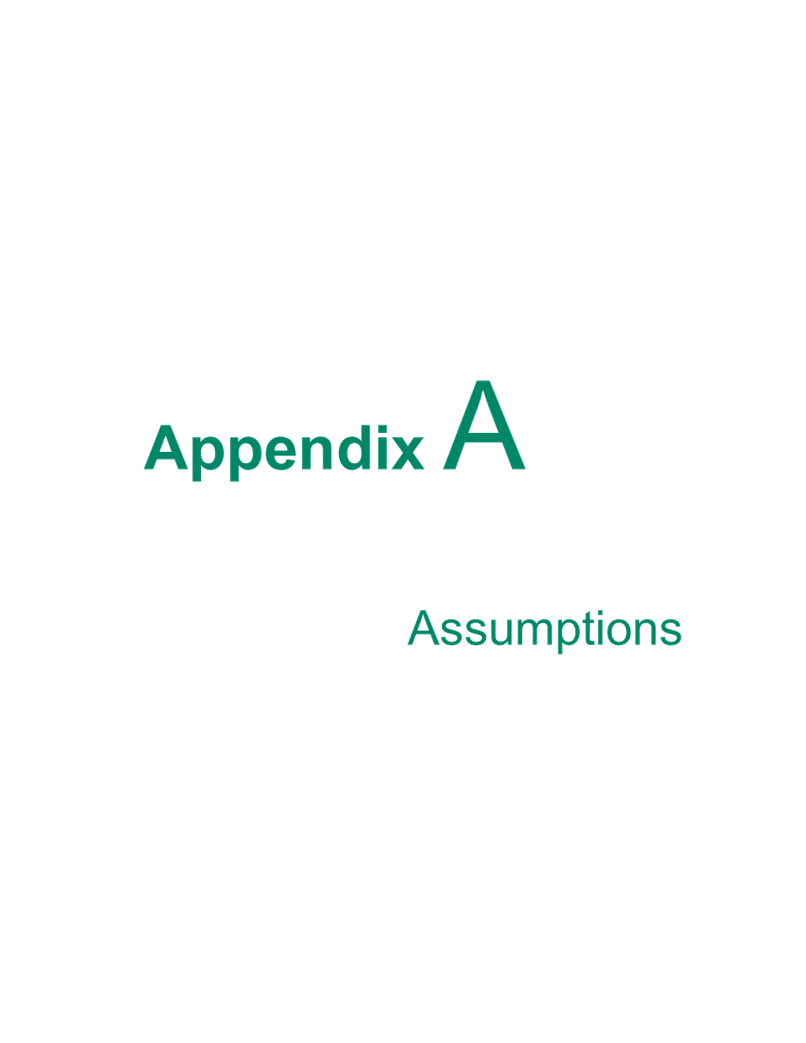

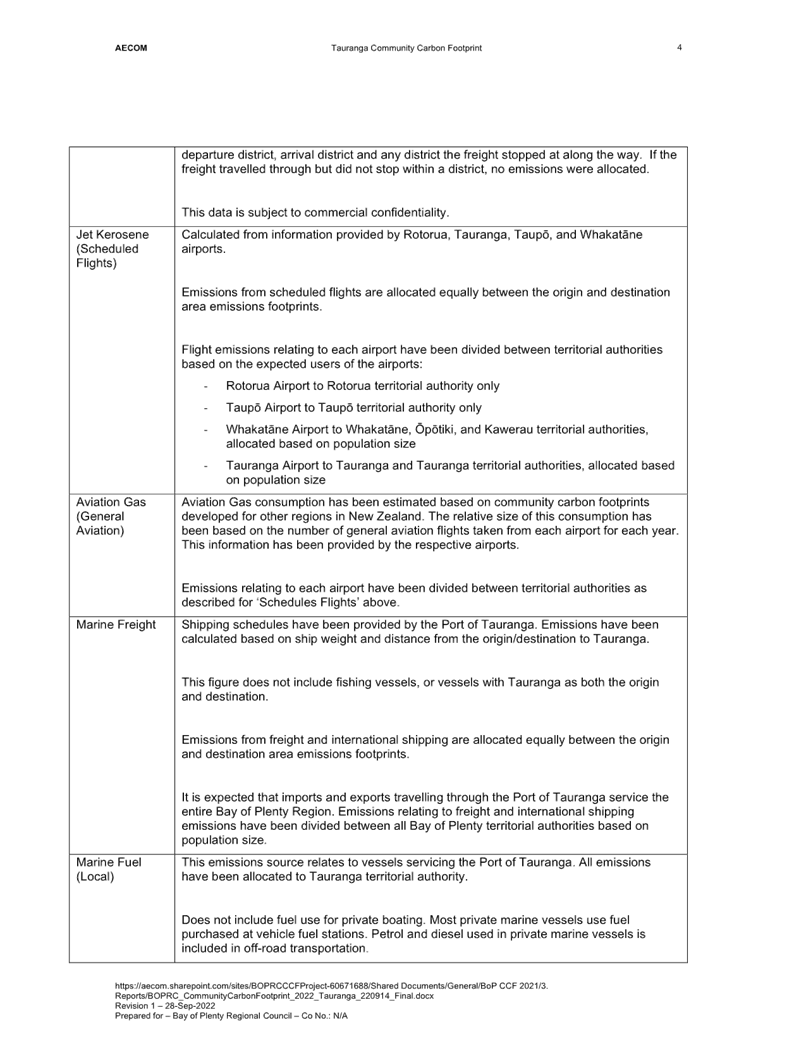
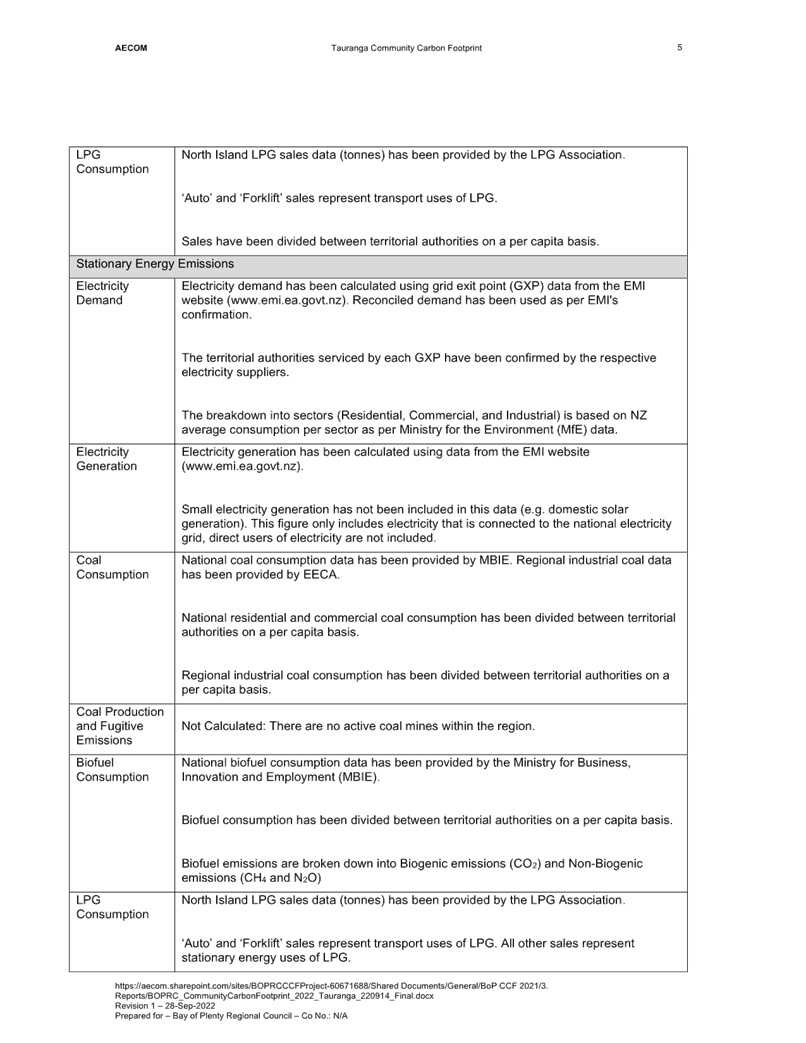
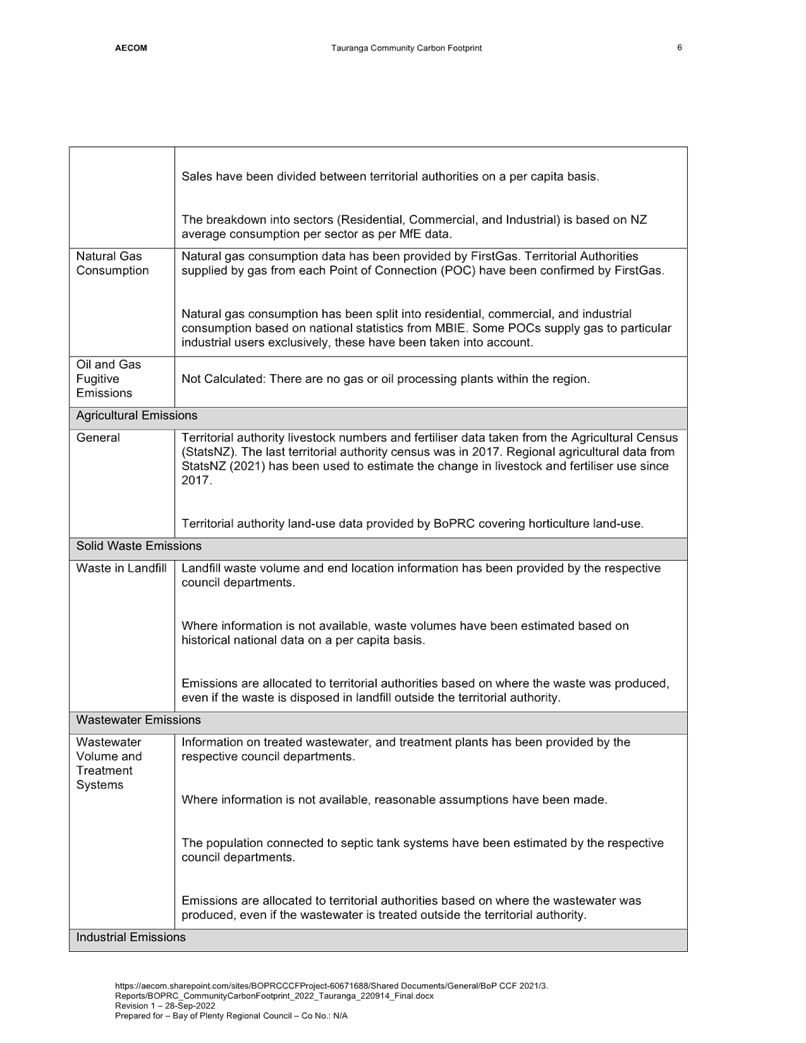
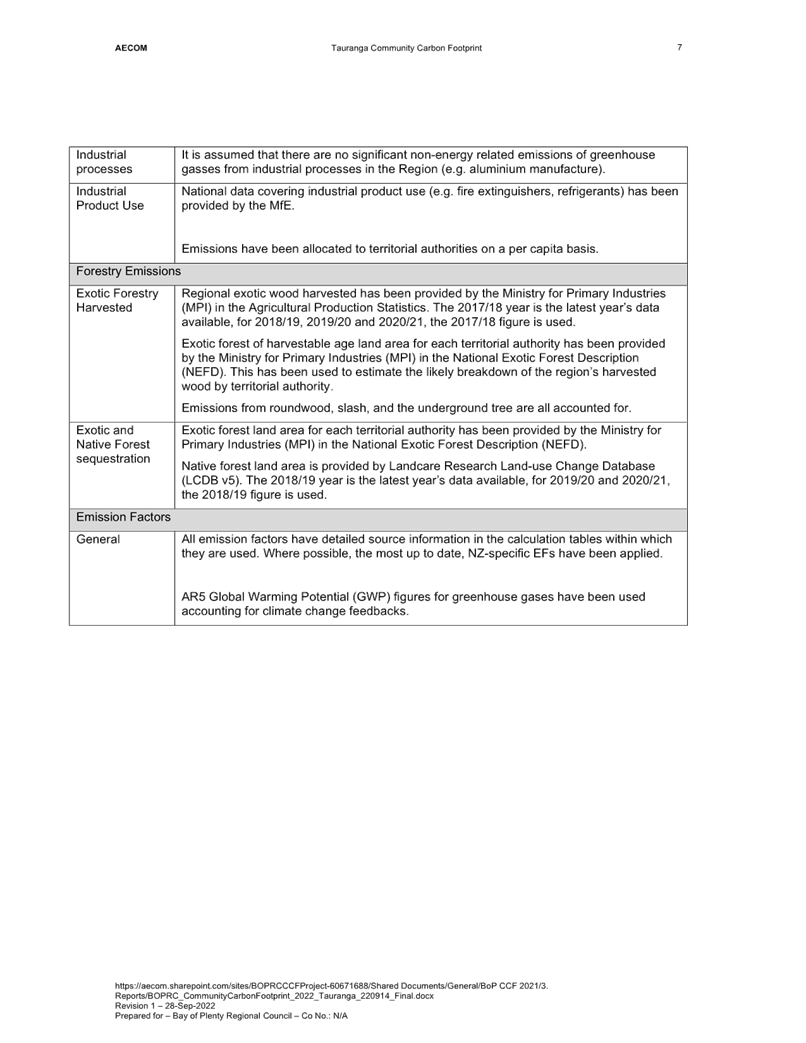
|
Strategy,
Finance and Risk Committee meeting Agenda
|
14
November 2022
|
9.11 Q1
Report 2022/23 LGOIMA and Privacy Requests
File
Number: A14113949
Author: Emily
Clarke, Democracy Services Advisor
Kath Norris, Team Leader:
Democracy Services
Authoriser: Christine
Jones, General Manager: Strategy, Growth & Governance
Purpose of the Report
1. The purpose of this report is to update the Committee on
Local Government Official Information and Meetings Act 1987 (LGOIMA) and
Privacy requests for the first quarter of 2022/23.
|
Recommendations
That the Strategy,
Finance and Risk Committee:
(a) Receives the report Q1
2022/23 LGOIMA and Privacy Requests.
|
executive summary
2. These reports are provided
to the Committee to provide assurance on statutory compliance for LGOIMA and
Privacy requests.
Attachments
1. Q1
Report LGOIMA and Privacy Requests - A14127477 ⇩ 
|
Strategy,
Finance and Risk Committee meeting Agenda
|
14
November 2022
|
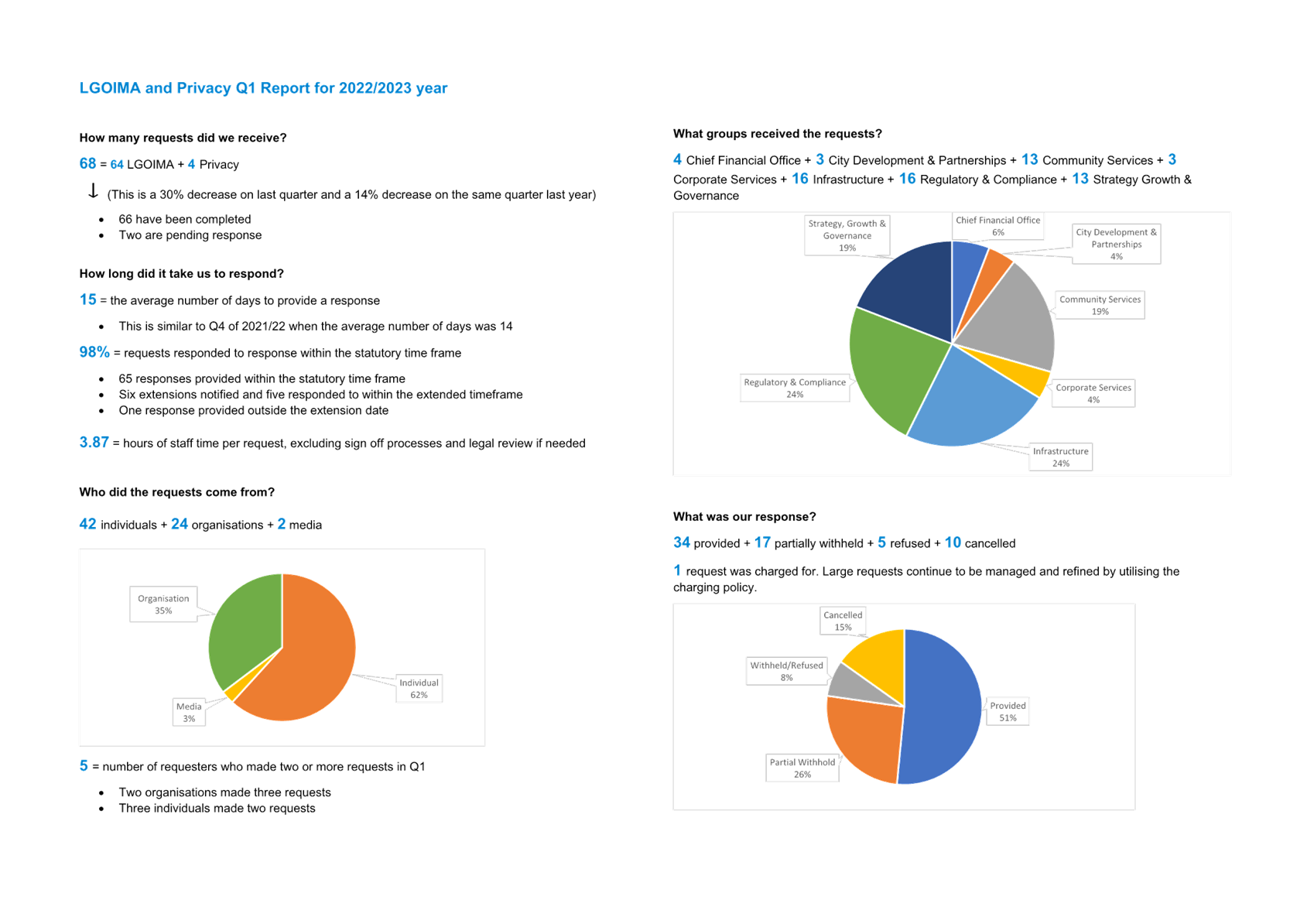

|
Strategy,
Finance and Risk Committee meeting Agenda
|
14
November 2022
|
9.12 2023
Q1 Jul-Sep Health and Safety Report
File
Number: A13966175
Author: Tony
Aitken, Manager: Human Resources
Tracy Benjamin,
Health Safety & Wellness Business Partner
Authoriser: Alastair
McNeil, General Manager: Corporate Services
Purpose of the Report
1. To provide a summary of
Health, Safety and Wellbeing activities over the July to September 2022
quarter.
|
Recommendations
That the Strategy,
Finance and Risk Committee:
(a) Receives the 2022 Q1 Health
and Safety Report
(b) Receives the 2022 Q1 Mental
Health and Wellbeing Report
|
Executive Summary
2. This is a quarterly report
provided to the Committee, designed to monitor Health, Safety and Wellbeing
activities, and share learnings.
3. Any feedback regarding
content or topics that the Committee would like is welcomed.
Attachments
1. 3_2022
Q1 Health & Safety Report_PDF - A14173147 ⇩ 
2. 3_2022 Q1 H&S_MHW
Report_PDF - A14173143 ⇩ 
|
Strategy,
Finance and Risk Committee meeting Agenda
|
14
November 2022
|
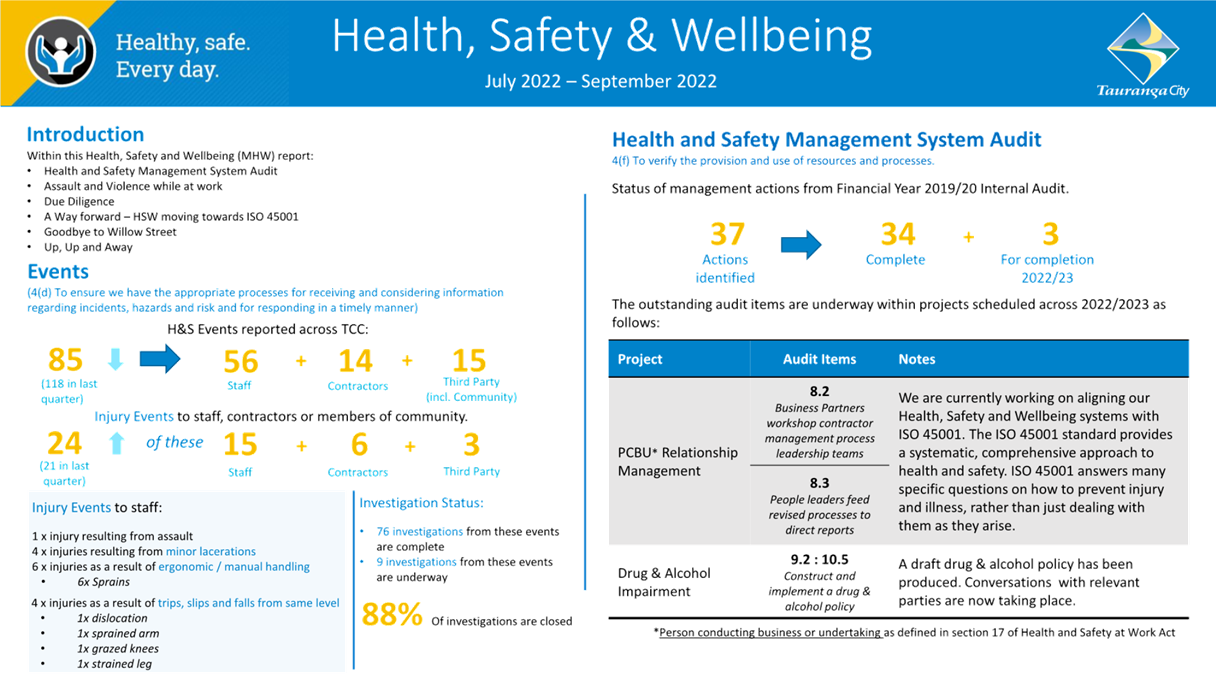
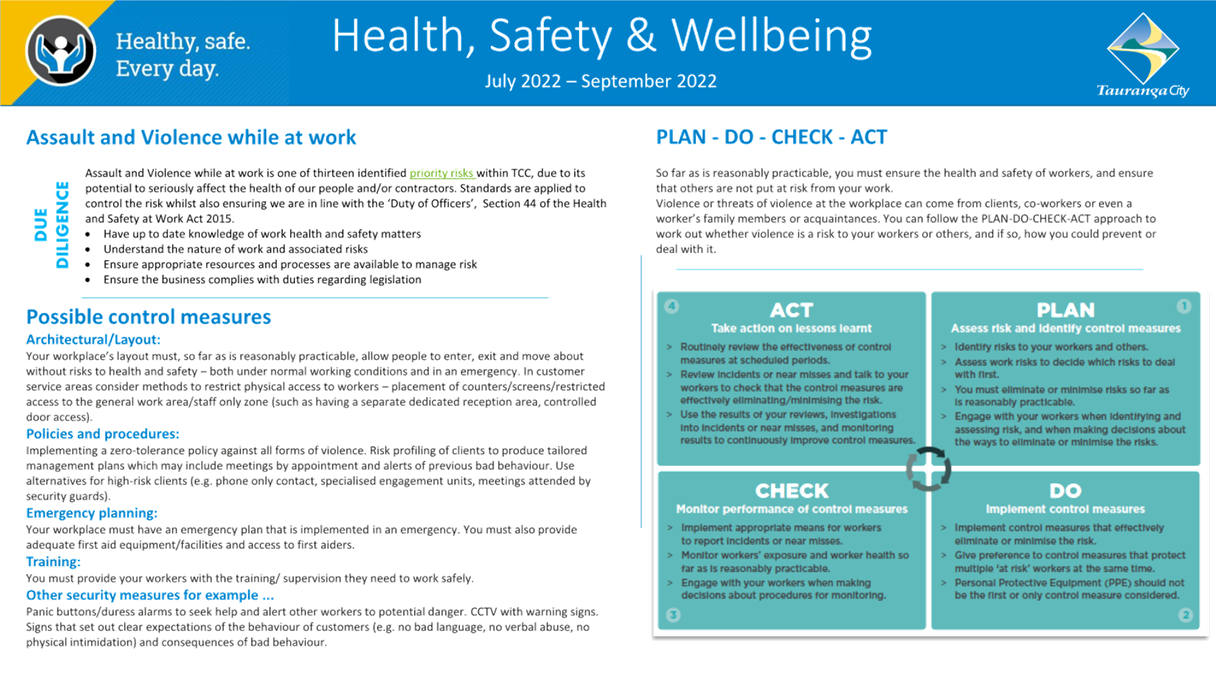
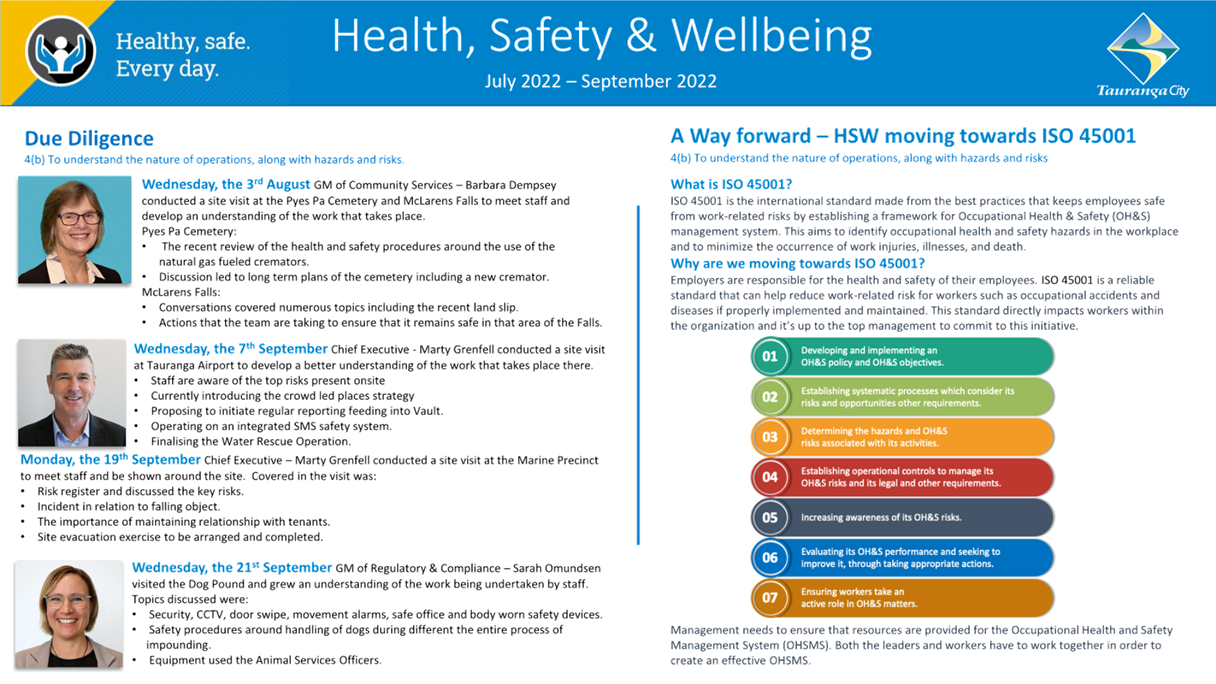
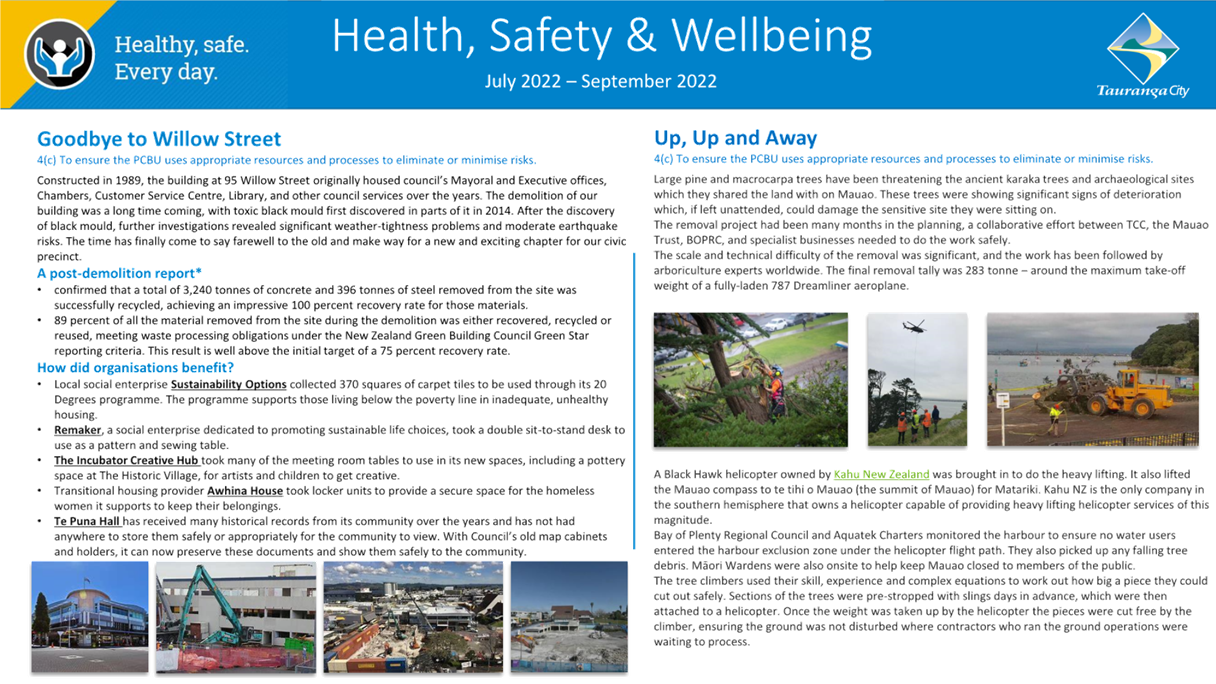
|
Strategy,
Finance and Risk Committee meeting Agenda
|
14
November 2022
|
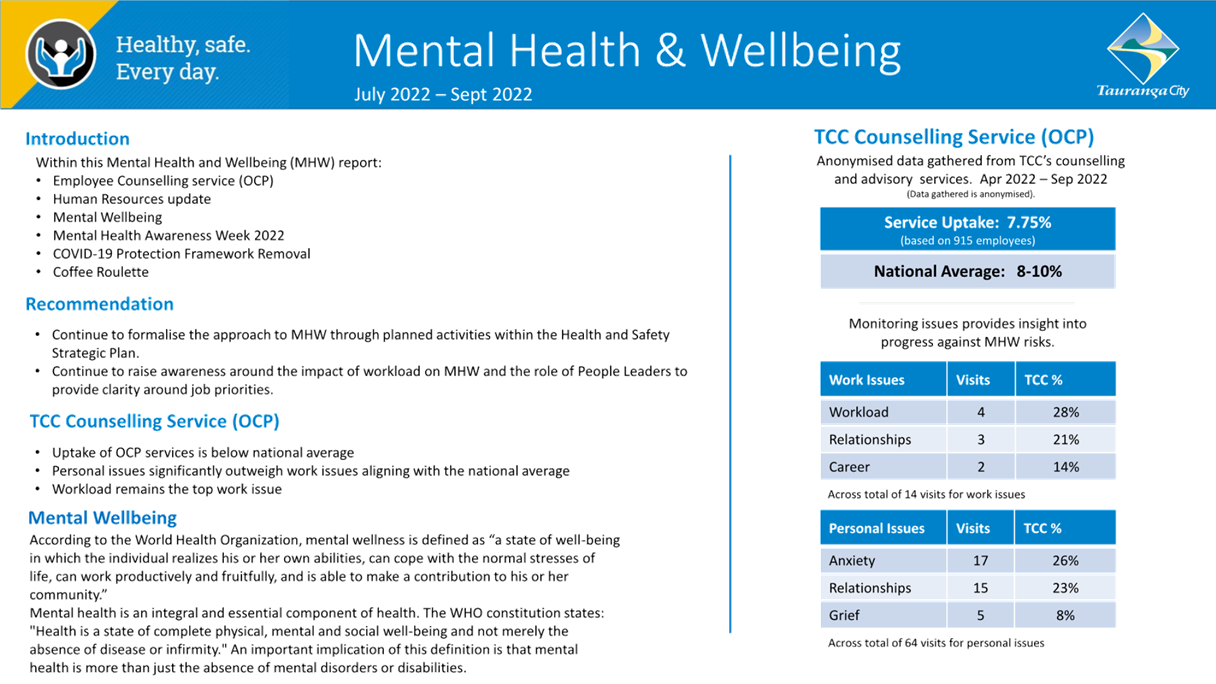
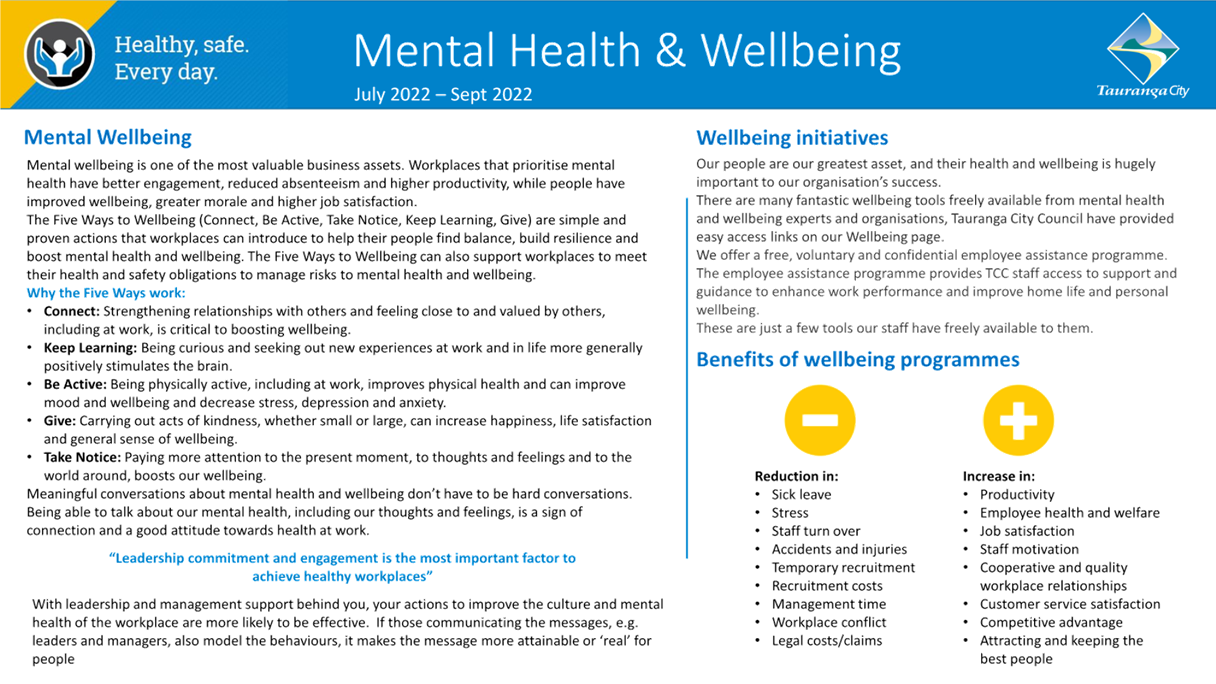
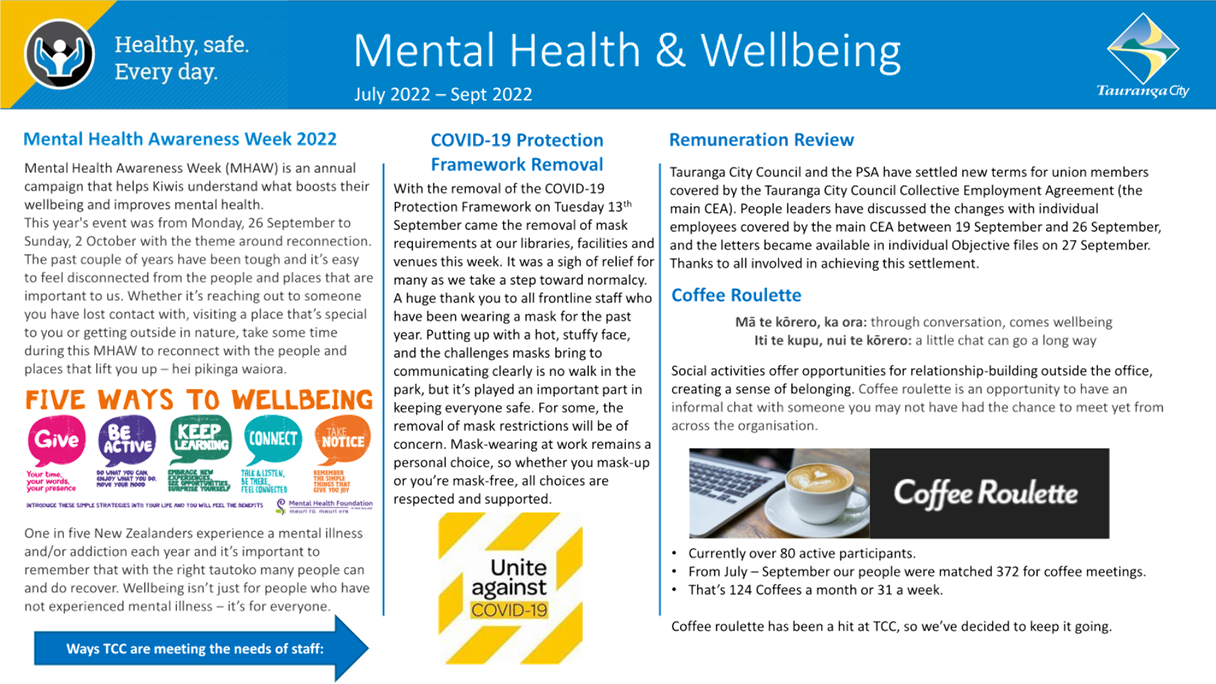
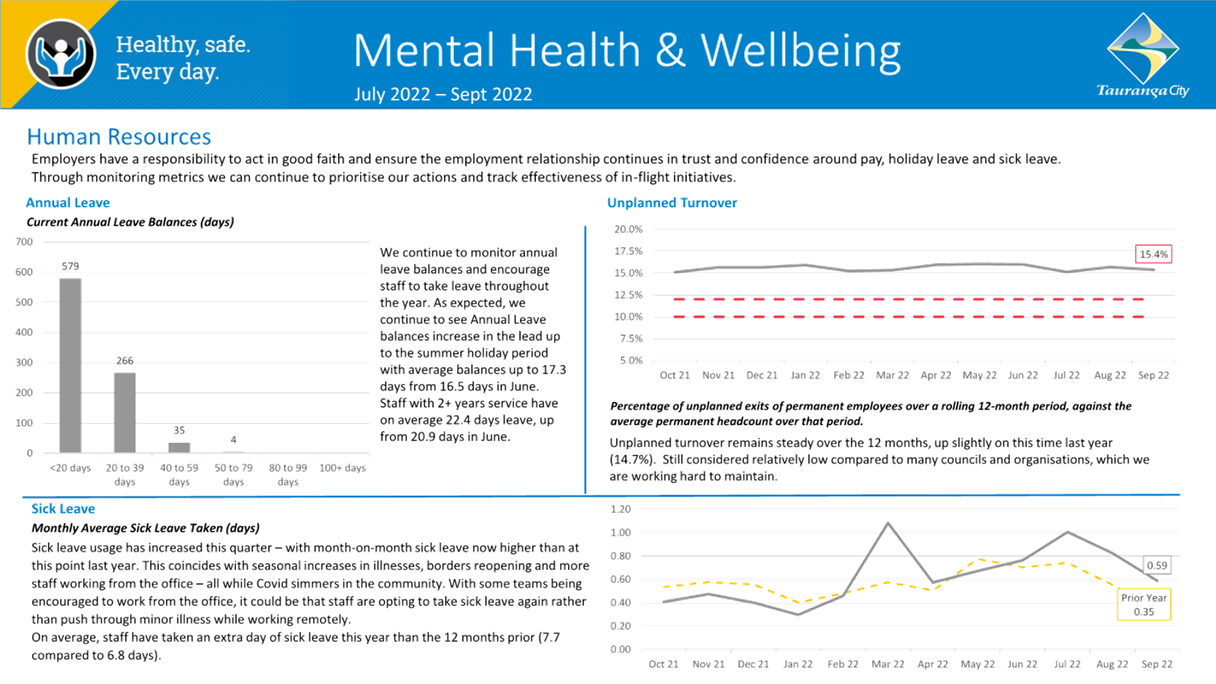
|
Strategy,
Finance and Risk Committee meeting Agenda
|
14
November 2022
|
10 Discussion
of late items
11 Public
excluded session
RESOLUTION TO EXCLUDE
THE PUBLIC
|
Recommendations
That the public be
excluded from the following parts of the proceedings of this meeting.
The general subject
matter of each matter to be considered while the public is excluded, the
reason for passing this resolution in relation to each matter, and the
specific grounds under section 48 of the Local Government Official
Information and Meetings Act 1987 for the passing of this resolution are as
follows:
|
General subject of each matter to be
considered
|
Reason for passing this resolution in
relation to each matter
|
Ground(s) under section 48 for the
passing of this resolution
|
|
11.1 - Public Excluded Minutes of the
Strategy, Finance and Risk Committee meeting held on 3 October 2022
|
s7(2)(a) - The withholding of the information is
necessary to protect the privacy of natural persons, including that of
deceased natural persons
s7(2)(b)(i) - The withholding of the information
is necessary to protect information where the making available of the
information would disclose a trade secret
s7(2)(b)(ii) - The withholding of the information
is necessary to protect information where the making available of the
information would be likely unreasonably to prejudice the commercial
position of the person who supplied or who is the subject of the
information
s7(2)(g) - The withholding of the information is
necessary to maintain legal professional privilege
s7(2)(h) - The withholding of the information is
necessary to enable Council to carry out, without prejudice or
disadvantage, commercial activities
s7(2)(i) - The withholding of the information is
necessary to enable Council to carry on, without prejudice or disadvantage,
negotiations (including commercial and industrial negotiations)
s7(2)(j) - The withholding of the information is
necessary to prevent the disclosure or use of official information for
improper gain or improper advantage
|
s48(1)(a) - the public conduct of the relevant
part of the proceedings of the meeting would be likely to result in the
disclosure of information for which good reason for withholding would exist
under section 6 or section 7
|
|
11.2 - Litigation Report
|
s7(2)(a) - The withholding of the information is
necessary to protect the privacy of natural persons, including that of
deceased natural persons
s7(2)(g) - The withholding of the information is
necessary to maintain legal professional privilege
s7(2)(i) - The withholding of the information is
necessary to enable Council to carry on, without prejudice or disadvantage,
negotiations (including commercial and industrial negotiations)
|
s48(1)(a) - the public conduct of the relevant
part of the proceedings of the meeting would be likely to result in the
disclosure of information for which good reason for withholding would exist
under section 6 or section 7
|
|
11.3 - Internal Audit & Assurance
- Quarterly Update
|
s6(b) - The making available of the information
would be likely to endanger the safety of any person
s7(2)(a) - The withholding of the information is necessary
to protect the privacy of natural persons, including that of deceased
natural persons
s7(2)(d) - The withholding of the information is
necessary to avoid prejudice to measures protecting the health or safety of
members of the public
s7(2)(g) - The withholding of the information is
necessary to maintain legal professional privilege
s7(2)(j) - The withholding of the information is
necessary to prevent the disclosure or use of official information for
improper gain or improper advantage
|
s48(1)(a) - the public conduct of the relevant
part of the proceedings of the meeting would be likely to result in the
disclosure of information for which good reason for withholding would exist
under section 6 or section 7
|
|
11.4 - Corporate Risk Register -
Quarterly Update
|
s7(2)(b)(i) - The withholding of the information
is necessary to protect information where the making available of the
information would disclose a trade secret
s7(2)(b)(ii) - The withholding of the information
is necessary to protect information where the making available of the
information would be likely unreasonably to prejudice the commercial
position of the person who supplied or who is the subject of the
information
s7(2)(h) - The withholding of the information is
necessary to enable Council to carry out, without prejudice or
disadvantage, commercial activities
s7(2)(i) - The withholding of the information is
necessary to enable Council to carry on, without prejudice or disadvantage,
negotiations (including commercial and industrial negotiations)
|
s48(1)(a) - the public conduct of the relevant
part of the proceedings of the meeting would be likely to result in the
disclosure of information for which good reason for withholding would exist
under section 6 or section 7
|
|
12 Closing
karakia





























